
CAMERON, ARIZONA, 16 APRIL 2014: Jones Benally, a famous medicine man, dances the Navajo Hoop dance in a small canyon in the badlands of Cameron, Arizona. The hoop dance is traditionally performed at the end of a grueling nine day ceremony and is a form of storytelling dance representing various animals, symbols and storytelling elements, all representing the never ending circle of life for the Navajo. (Photo by Brent Stirton/Reportage for Le Figaro Magazine.)


CAMERON, ARIZONA, 16 APRIL 2014: Jones Benally, a famous medicine man, dances the Navajo Hoop dance in a small canyon in the badlands of Cameron, Arizona. The hoop dance is traditionally performed at the end of a grueling nine day ceremony and is a form of storytelling dance representing various animals, symbols and storytelling elements, all representing the never ending circle of life for the Navajo. (Photo by Brent Stirton/Reportage for Le Figaro Magazine.)

FLAGSTAFF, ARIZONA, 7 APRIL 2014: Jones Benalli, a traditional medicine man of the Navajo tribe, seen with ceremonial bowls teaching his grand-daughters the secrets of traditional Navajo medicine, Flagstaff, Arizona, 7 April 2014. The bowls represent the heart of the Navajo spiritual world. Jones is seen with a sacred mountain behind him, a mountain that has been the center of a court case as a local ski lodge has been using recycled sewerage water to manufacture the snow which is spread over this sacred Navajo site. (Photo by Brent Stirton/Reportage for Figaro Magazine.)

FLAGSTAFF, ARIZONA, 14 APRIL 2014: Jones Benally, a renowned Medicine Man of the Navajo Indian Tribe, performs an ancient traditonal body adjustment treatment on a patient at his home in Flagstaff, Arizona. This treatment outdates Chiropractics by many centuries yet there is a battle within the Navajo nation between traditionalists who want to keep these ancient practices alive and christian Navajos who believe these traditional practices to be unchristian. (Photo by Brent Stirton/Reportage for Figaro Magazine.)

FLAGSTAFF, ARIZONA, 14 APRIL 2014: Jones Benally, a renowned Medicine Man of the Navajo Indian Tribe, performs an ancient traditonal body adjustment treatment on a patient at his home in Flagstaff, Arizona. This treatment outdates Chiropractics by many centuries yet there is a battle within the Navajo nation between traditionalists who want to keep these ancient practices alive and christian Navajos who believe these traditional practices to be unchristian. (Photo by Brent Stirton/Reportage for Figaro Magazine.)

WINDOWROCK, ARIZONA, 4 APRIL 2014: Scenes from a rodeo event in the Navajo capital WindowRock, Arizona. There were not many Navajo competing but Rodeo is considered a tradtional sport by the Navajo Nation. (Photo by Brent Stirton/Reportage by Getty Images.)

WINDOWROCK, ARIZONA, 4 APRIL 2014: Scenes from a rodeo event in the Navajo capital WindowRock, Arizona. There were not many Navajo competing but Rodeo is considered a tradtional sport by the Navajo Nation. (Photo by Brent Stirton/Reportage by Getty Images.)

TSAILE, ARIZONA, 4 APRIL 2014: The Dine College Rodeo team at practise, Tsaile Arizona. Dine College is the first tribally controlled college in the United States. Their educational philosophy is grounded in the traditional Navajo outlook on life and in cultural traditions. (Photo by Brent Stirton/Reportage for Le Figaro Magazine.)

TSAILE, ARIZONA, 4 APRIL 2014: The Dine College Rodeo team at practise, Tsaile Arizona. Dine College is the first tribally controlled college in the United States. Their educational philosophy is grounded in the traditional Navajo outlook on life and in cultural traditions. (Photo by Brent Stirton/Reportage for Le Figaro Magazine.)

WINDOWROCK, ARIZONA, 4 APRIL 2014: A young fan at the start of a rodeo event in the Navajo capital WindowRock, Arizona. (Photo by Brent Stirton/Reportage by Getty Images.)

WINDOWROCK, ARIZONA, 4 APRIL 2014: A young fan at the start of a rodeo event in the Navajo capital WindowRock, Arizona. (Photo by Brent Stirton/Reportage by Getty Images.)

PINON, NAVAJO NATION, ARIZONA, 5 APRIL 2014: Scenes from a Navajo sweat lodge and pipe smoking ceremony, Pinon, Arizona. The sweat lodge is a purification ritual involving hot rocks and sage, as well as drumming and chanting. The Pipe smoking ceremony is a giving of thanks for the four seasons and their role in nature. (Photo by Brent Stirton/Rpeortage for Le Figaro.)

PINON, NAVAJO NATION, ARIZONA, 5 APRIL 2014: Scenes from a Navajo sweat lodge and pipe smoking ceremony, Pinon, Arizona. The sweat lodge is a purification ritual involving hot rocks and sage, as well as drumming and chanting. The Pipe smoking ceremony is a giving of thanks for the four seasons and their role in nature. This ceremony is not part of traditional Navajo cultural practises but was co-opted from the Navajo relationship with the Lakota tribe. (Photo by Brent Stirton/Rpeortage for Le Figaro.)

PINON, NAVAJO NATION, ARIZONA, 5 APRIL 2014: Scenes from a Navajo sweat lodge and pipe smoking ceremony, Pinon, Arizona. The sweat lodge is a purification ritual involving hot rocks and sage, as well as drumming and chanting. The Pipe smoking ceremony is a giving of thanks for the four seasons and their role in nature. This ceremony is not part of traditional Navajo cultural practises but was co-opted from the Navajo relationship with the Lakota tribe. (Photo by Brent Stirton/Rpeortage for Le Figaro.)

PINON, NAVAJO NATION, ARIZONA, 5 APRIL 2014: Scenes from a Navajo sweat lodge and pipe smoking ceremony, Pinon, Arizona. The sweat lodge is a purification ritual involving hot rocks and sage, as well as drumming and chanting. The Pipe smoking ceremony is a giving of thanks for the four seasons and their role in nature. This ceremony is not part of traditional Navajo cultural practises but was co-opted from the Navajo relationship with the Lakota tribe. (Photo by Brent Stirton/Rpeortage for Le Figaro.)

PINON, NAVAJO NATION, ARIZONA, 5 APRIL 2014: Scenes from a Navajo sweat lodge and pipe smoking ceremony, Pinon, Arizona. The sweat lodge is a purification ritual involving hot rocks and sage, as well as drumming and chanting. The Pipe smoking ceremony is a giving of thanks for the four seasons and their role in nature. (Photo by Brent Stirton/Rpeortage for Le Figaro.)

PINON, NAVAJO NATION, ARIZONA, 5 APRIL 2014: Children play on a horse training farm close to the economically depressed area of Pinon, Arizona. (Photo by Brent Stirton/Reportage for Le Figaro.)

PINON, NAVAJO NATION, ARIZONA, 5 APRIL 2014: Children play on a horse training farm close to the economically depressed area of Pinon, Arizona. (Photo by Brent Stirton/Rpeortage for Le Figaro.)

PINON, NAVAJO NATION, ARIZONA, 5 APRIL 2014: Children play on a horse training farm close to the economically depressed area of Pinon, Arizona. (Photo by Brent Stirton/Rpeortage for Le Figaro.)

FLAGSTAFF, ARIZONA, 7 APRIL 2014: "M.T," is a pierced 19 year old modern Navajo teenager who has come from a home with a long history of alcoholism and abuse. She was put out onto the street at an early age and has struggled to continue her schooling. She has recently been taken in by concerned relatives and although "M.T" is still recovering, her greatest comfort is her relationship with this horse, Flagstaff, Arizona, 7 April 2014. (Photo by Brent Stirton/Reportage for Le Figaro Magazine.)

KAYENTA, ARIZONA, 4 APRIL 2014: Wild horse activist and protector Leland Grass seen with his dogs and one of the wild mustang's he is trying to protect from round up by the Navajo Tribal government, Kayenta, Arizona. The wild horse has been threatened by relocation of the Navajo due to mining and economic issues as well as the severe drought which has befallen Arizona over the last couple of years. It is increasingly difficult for the Navajo to maintain their centuries old connection to the horse. (Photo by Brent Stirton/Reportage for Le Figaro magazine.)

PINON, NAVAJO NATION, ARIZONA, 9 APRIL 2014: Roberto Nutlouis, 34, a youth leader and agriculturist seen at his training farm close to the economically depressed area of Pinon, Arizona. Roberto is working on sustainable agriculutre for the Navajo people and includes youth groups in his projects. (Photo by Brent Stirton/Rpeortage for Le Figaro.)

PINON, NAVAJO NATION, ARIZONA, 9 APRIL 2014: Husky, a blind former Uranium miner who lives alone on a farm close to the economically depressed area of Pinon, Arizona. Husky worked for over 12 years in various Uranium mines, most of that time he was not provided with protective gear. His wife lived with him on the mine and she passed away from cancer, the same kind of cancer that has been common to Navajo people working on these Uranium mines. Husky has lost his sight to the effects of the mine and he has various other ailments too. He has received no compensation for his loss as his work period was outside of the period agreed by the mines for compensation and disability payments. (Photo by Brent Stirton/Reportage for Le Figaro.)

WINDOWROCK, ARIZONA, 4 APRIL 2014: Navajo US Military veterans come together for an honor guard in the Navajo capital WindowRock, Arizona. The Navajo have a long and distinguished history of serving with valor in the US armed forces. (Photo by Brent Stirton/Reportage by Getty Images.)

CANYON DE CHELLY, ARIZONA, 3RD APRIL, 2014: One of the last of the famed Navajo Code Talkers, Teddy Draper Snr, "The Atomic Marine." The code talkers used the Navajo language to fool the Japanese who were monitoring U.S radio traffic and are credited with being such an asset to the U.S military that the code talkers has minders with secret orders to shoot them if they looked like being captured alive. Teddy Draper Snr is credited with being the code talkers who relayed the progress and successful attack of the Enola Gay on Hiroshima. (Photo by Brent Stirton/Reportage for Le Figaro.)

WINDOWROCK, ARIZONA, 4 APRIL 2014: Flags flutter in the last light at a Navajo US Military veterans cemetry in the Navajo capital WindowRock, Arizona. The Navajo have a long and distinguished history of serving with valor in the US armed forces. (Photo by Brent Stirton/Reportage by Getty Images.)

WINDOW ROCK, ARIZONA, 11 APRIL 2014: Senior police officer in the Navajo police Dana Dean Tome arrests a suspect on the streets of WindowRock, Arizona. This man was later found to be innocent. No alcohol is allowed on the reservation and it is one of the many obstacles faced by the understaffed, underfinanced Navajo Police. (Photo by Brent Stirton/Reportage for Le Figaro.)

WINDOW ROCK, ARIZONA, 11 APRIL 2014: Senior police officer in the Navajo police Dana Dean Tome arrests a drunk of the streets of WindowRock, Arizona. No alcohol is allowed on the reservation and it is one of the many obstacles faced by the understaffed, underfinanced Navajo Police. (Photo by Brent Stirton/Reportage for Le Figaro.)

WINDOW ROCK, ARIZONA, 18 APRIL 2014: Police officer in the Navajo police Kevin Hevel, 27, arrests a drunk passed out in the open close to farming land outside of WindowRock, Arizona. No alcohol is allowed on the reservation and it is one of the many obstacles faced by the understaffed, underfinanced Navajo Police. The police have to take seriously drunk people to hospital to detox and this has created a bed shortage in Navajo clinics for people who are genuinely sick. (Photo by Brent Stirton/Reportage for Le Figaro.)

TUBA CITY, ARIZONA, 16 APRIL 2014: Virgil Frank Martinez Jr, 22, seen on the outskirts of Tuba City in a poor part of the town. Tattoos are common on Navajo youth and do not necessarily suggest gang affiliations. (Photo by Brent Stirton/Reportage for Le Figaro Magazine.)

WINDOW ROCK, ARIZONA, 11 APRIL 2014: Navajo EMT emergency workers attend to a man who was assaulted by his brother in WindowRock, Arizona. both were intoxicated at the time, alcohol is illegal on the Navajo reservation but is the chief cause of violence. (Photo by Brent Stirton/Reportage for Le Figaro.)

WINDOW ROCK, ARIZONA, 11 APRIL 2014: Navajo EMT emergency workers attend to a man who was assaulted by his brother in WindowRock, Arizona. both were intoxicated at the time, alcohol is illegal on the Navajo reservation but is the chief cause of violence. (Photo by Brent Stirton/Reportage for Le Figaro.)

SHIPROCK, ARIZONA, 17 APRIL 2014: The Red Eagle Challenge at the Northern Navajo Medical Center for Health Promotion and Disease prevention, Shiprock, Arizona. This is a team-building, leadership excercise for Navajo Youth. Many of the students in this class are struggling with alcohol and drug addiction and this course is one of the few available to Navajo Youth who struggle with these issues. (Photo by Brent Stirton/Reportage for Le Figaro Magazine.)

LEUPP, ARIZONA, 14 APRIL 2014: Kids from the progressive Star charter school in Leupp Arizona attend an assembly on Monday at which all the children and staff shake hands with each other without exception. The Star school runs completely off the grid and has a Montessori style teaching schedule with a strong emphasis on Navajo Cultural values. The school has a very high success rate with its students with a 71% graduation rate compared to only 1% for Native pupils at Arizona state schools. Despite this, there is a movement to close Native schools in Arizona due to an unfair ratings system which does not take into account reservation issues and Navajo based teaching techniques. (Photo by Brent Stirton/Reportage for Le Figaro.)

LEUPP, ARIZONA, 14 APRIL 2014: A teacher comforts an upset child as kids from the progressive Star charter school in Leupp Arizona attend an assembly on Monday at which all the children and staff shake hands with each other without exception. The Star school runs completely off the grid and has a Montessori style teaching schedule with a strong emphasis on Navajo Cultural values. The school has a very high success rate with its students with a 71% graduation rate compared to only 1% for Native pupils at Arizona state schools. Despite this, there is a movement to close Native schools in Arizona due to an unfair ratings system which does not take into account reservation issues and Navajo based teaching techniques. (Photo by Brent Stirton/Reportage for Le Figaro.)

LEUP, ARIZONA, 10 APRIL 2014: Kids from the progressive Star charter school in Leup Arizona attend communal agriculture classes at the Leup Communal farm. The Star school runs completely off the grid and has a Montessori style teaching schedule with a strong emphasis on Navajo Cultural values. The school has a very high success rate with its students with a 71% graduation rate compared to only 1% for Native pupils at Arizona state schools. Despite this, there is a movement to close Native schools in Arizona due to an unfair ratings system which does not take into account reservation issues and Navajo based teaching techniques. (Photo by Brent Stirton/Reportage for Le Figaro.)

LEUP, ARIZONA, 10 APRIL 2014: Kids from the progressive Star charter school in Leup Arizona attend communal agriculture classes at the Leup Communal farm. The Star school runs completely off the grid and has a Montessori style teaching schedule with a strong emphasis on Navajo Cultural values. The school has a very high success rate with its students with a 71% graduation rate compared to only 1% for Native pupils at Arizona state schools. Despite this, there is a movement to close Native schools in Arizona due to an unfair ratings system which does not take into account reservation issues and Navajo based teaching techniques. (Photo by Brent Stirton/Reportage for Le Figaro.)

WINDOW ROCK, ARIZONA, 11 APRIL 2014: Valuable vintage American muscle cars lie rusting in a yard in the economically deprived Navajo Capital of WindowRock, Arizona. (Photo by Brent Stirton/Reportage for Le Figaro.)

PINON, NAVAJO NATION, ARIZONA, 5 APRIL 2014: A suburban scene from the economically depressed Navajo town of Pinon, Arizona. (Photo by Brent Stirton/Reportage for Le Figaro.)

PINON, NAVAJO NATION, ARIZONA, 5 APRIL 2014: Scenes of vandalism in the economically depressed Navajo town, Pinon, Arizona. (Photo by Brent Stirton/Rpeortage for Le Figaro.)

PINON, NAVAJO NATION, ARIZONA, 9 APRIL 2014: Fresh Sheep skins signal Wedding preparations on a farm close to the economically depressed area of Pinon, Arizona. (Photo by Brent Stirton/Rpeortage for Le Figaro.)

PINON, NAVAJO NATION, ARIZONA, 12 APRIL 2014: A traditional Navajo wedding which also included a civil service performed by a judge, Pinon, Arizona. The traditonal ceremony cannot be photographed but consists of corn and water coming together symbolizing success and fertility in the marriage. (Photo by Brent Stirton/Reportage for Le Figaro.)

PINON, NAVAJO NATION, ARIZONA, 12 APRIL 2014: A traditional Navajo wedding which also included a civil service performed by a judge, Pinon, Arizona. The traditonal ceremony cannot be photographed but consists of corn and water coming together symbolizing success and fertility in the marriage. (Photo by Brent Stirton/Reportage for Le Figaro.)

PINON, NAVAJO NATION, ARIZONA, 12 APRIL 2014: A traditional Navajo wedding which also included a civil service performed by a judge, Pinon, Arizona. The traditonal ceremony cannot be photographed but consists of corn and water coming together symbolizing success and fertility in the marriage. (Photo by Brent Stirton/Reportage for Le Figaro.)

WINDOW ROCK, ARIZONA, 6 APRIL 2014: Marcus and Shane Ramon practise their fighting skills at their home in the Navajo Capital of WindowRock, Arizona. Both men work as Casino security at the Casino in nearby Gallup. The Navajo were late adopters of the Casino system on Native American land but a number of Casinos are now operated by the Navajo Nation. (Photo by Brent Stirton/Reportage for Le Figaro.)

WINDOW ROCK, ARIZONA, 6 APRIL 2014: Marcus and Shane Ramon practise their fighting skills at their home in the Navajo Capital of WindowRock, Arizona. Both men work as Casino security at the Casino in nearby Gallup. The Navajo were late adopters of the Casino system on Native American land but a number of Casinos are now operated by the Navajo Nation. (Photo by Brent Stirton/Reportage for Le Figaro.)

LEUPP, ARIZONA, 8 APRIL 2014: Wild horses stand on the plains in front of the San Fransciso Peaks, a Navajo Sacred site which has been controversial due to a ski lodge which has been making snow using refined sewerage water, a fact which has outraged traditional Navajos and led to a long running court case, Leupp Arizona. Wild horses are also under threat, with controversial round-ups and a long standing drought making it difficult for these creatures to survive. (Photo by Brent Stirton/Reportage for Le Figaro Magazine.)

LEUPP, ARIZONA, 8 APRIL 2014: A view across the plains in front of the San Fransciso Peaks, a Navajo Sacred site which has been controversial due to a ski lodge which has been making snow using refined sewerage water, a fact which has outraged traditional Navajos and led to a long running court case, Leupp Arizona. (Photo by Brent Stirton/Reportage for Le Figaro Magazine.)

LEUPP, ARIZONA, 8 APRIL 2014: A wild horse runs away across the plain, Leupp Arizona. Wild horses are under threat, with controversial round-ups and a long standing drought making it difficult for these creatures to survive. (Photo by Brent Stirton/Reportage for Le Figaro Magazine.)

TUBA CITY, ARIZONA, 10 APRIL 2014: Wild horses pass by a water tank with the slogan "Water is Life" along its walls. This slogan appears on many water tanks across the Navajo reservation where last years severe drought saw controversial round ups of horses all over the Navajo Nation. This was seen by the Navajo Council as a humanitarian move but was regarded with anger by many who lost their horses, an intergral and age old part of Navajo culture. (Photo by Brent Stirton/Reportage for Le Figaro.)

CAMERON, ARIZONA, 12 APRIL 2014: A beautiful canyon site off the tourist trail close to Cameron, Arizona on the Navajo Reservation. Although there are many famous tourist site like Monument Valley and the Canyon De Chelly, there are still a number of breath taking sites all over the Reservation. (Photo by Brent Stirton/Reportage for Le Figaro.)

CAMERON, ARIZONA, 16 APRIL 2014: A dead wild horse lies mysteriously at the end of a small canyon in the badlands of Cameron, Arizona. (Photo by Brent Stirton/Reportage for Le Figaro Magazine.)


CAMERON, ARIZONA, 16 APRIL 2014: Navajo Punk rock band Sihasin is seen with their horse Moonshadow in a canyon in Cameron, Arizona. Sihasin comes from a long tradition of protest music and expouses traditional Navajo values to their audience. (Photo by Brent Stirton/Reportage for Le Figaro Magazine.)

CAMERON, ARIZONA, 16 APRIL 2014: Navajo Punk rock band Sihasin is seen with their horse Moonshadow in a canyon in Cameron, Arizona. Sihasin comes from a long tradition of protest music and expouses traditional Navajo values to their audience. (Photo by Brent Stirton/Reportage for Le Figaro Magazine.)

CAMERON, ARIZONA, 16 APRIL 2014: Claysun Benally with his horse in Cameron, Arizona. Claysun is a strong believer in traditional Navajo values and along with his father keeps several horses on their property in Flagstaff. The Navajo have a long relationship with the wild horse, a relationship characterized by gentleness and agreement rather than breaking the horses spirti to the will of man. (Photo by Brent Stirton/Reportage for Le Figaro Magazine.)

CAMERON, ARIZONA, 16 APRIL 2014: Claysun Benally with his horse in Cameron, Arizona. Claysun is a strong believer in traditional Navajo values and along with his father keeps several horses on their property in Flagstaff. The Navajo have a long relationship with the wild horse, a relationship characterized by gentleness and agreement rather than breaking the horses spirti to the will of man. (Photo by Brent Stirton/Reportage for Le Figaro Magazine.)

CAMERON, ARIZONA, 16 APRIL 2014: Claysun Benally with his horse in Cameron, Arizona. Claysun is a strong believer in traditional Navajo values and along with his father keeps several horses on their property in Flagstaff. The Navajo have a long relationship with the wild horse, a relationship characterized by gentleness and agreement rather than breaking the horses spirti to the will of man. (Photo by Brent Stirton/Reportage for Le Figaro Magazine.)

CANYON DE CHELLY, ARIZONA, 6 APRIL, 2014: Scenes around the Canyon De Chelly, a famous Navajo Nation landmark and tourist attraction. (Photo by Brent Stirton/Reportage for Le Figaro.)

MONUMENT VALLEY, UTAH, 15 APRIL 2014: Tourist scenes at the Navajo tourist site of Monument Valley, a place made famous by its awesome Buttes and Mesa's as well as the hundreds of Western Movies that have been filmed here. (Photo by Brent Stirton/Reportage for Le Figaro Magazine.)

MONUMENT VALLEY, UTAH, 15 APRIL 2014: Tourist scenes at the Navajo tourist site of Monument Valley, a place made famous by its awesome Buttes and Mesa's as well as the hundreds of Western Movies that have been filmed here. (Photo by Brent Stirton/Reportage for Le Figaro Magazine.)


MONUMENT VALLEY, UTAH, 15 APRIL 2014: Tourist scenes at the Navajo tourist site of Monument Valley, a place made famous by its awesome Buttes and Mesa's as well as the hundreds of Western Movies that have been filmed here. (Photo by Brent Stirton/Reportage for Le Figaro Magazine.)

HIGHWAY 180, ARIZONA, 10 APRIL 2014: Navajo Indian gift and curio stores along the highway into the Navajo Reservation area close to Window Rock, Arizona, 10 April 2014. (Photo by Brent Stirton/Reportage for Le Figaro.)

FLAGSTAFF, ARIZONA, 13 APRIL 2014: Images from a multi-tribe Pow Wow held in Flagstaff Arizona. These dancers come from all over America, the portraits are mostly of Navajo dancers. Their costumes are not traditional however and have come to portray an almost "Super-Indian" collective today. (Photo by Brent Stirton/Reportage for Figaro Magazine.)

FLAGSTAFF, ARIZONA, 13 APRIL 2014: Images from a multi-tribe Pow Wow held in Flagstaff Arizona. These dancers come from all over America, the portraits are mostly of Navajo dancers. Their costumes are not traditional however and have come to portray an almost "Super-Indian" collective today. (Photo by Brent Stirton/Reportage for Figaro Magazine.)

FLAGSTAFF, ARIZONA, 13 APRIL 2014: Images from a multi-tribe Pow Wow held in Flagstaff Arizona. These dancers come from all over America, the portraits are mostly of Navajo dancers. Their costumes are not traditional however and have come to portray an almost "Super-Indian" collective today. (Photo by Brent Stirton/Reportage for Figaro Magazine.)

FLAGSTAFF, ARIZONA, 13 APRIL 2014: Four generations of Navajo male dancers are seen at a multi-tribe Pow Wow held in Flagstaff Arizona. The dancers at this Pow Wow come from all over America. Their costumes are not traditional however and these bright, modern manifestations have come to portray an almost "Super-Indian" collective today. This is also seen in the appropriation of certains ceremonies for other Indian nations. This is worrisome for the traditionalists who want to maintain authenticity in the Navajo Culture. (Photo by Brent Stirton/Reportage for Figaro Magazine.)

FLAGSTAFF, ARIZONA, 13 APRIL 2014: Images from a multi-tribe Pow Wow held in Flagstaff Arizona. These dancers come from all over America, the portraits are of Navajo dancers. Their costumes are not traditional however and have come to portray an almost "Super-Indian" collective today. (Photo by Brent Stirton/Reportage for Figaro Magazine.)

FLAGSTAFF, ARIZONA, 13 APRIL 2014: Images from a multi-tribe Pow Wow held in Flagstaff Arizona. These dancers come from all over America, the portraits are of Navajo dancers. Their costumes are not traditional however and have come to portray an almost "Super-Indian" collective today. (Photo by Brent Stirton/Reportage for Figaro Magazine.)

FLAGSTAFF, ARIZONA, 13 APRIL 2014: Images from a multi-tribe Pow Wow held in Flagstaff Arizona. These dancers come from all over America, the portraits are of Navajo dancers. Their costumes are not traditional however and have come to portray an almost "Super-Indian" collective today. (Photo by Brent Stirton/Reportage for Figaro Magazine.)

FLAGSTAFF, ARIZONA, 13 APRIL 2014: Images from a multi-tribe Pow Wow held in Flagstaff Arizona. These dancers come from all over America, the portraits are of Navajo dancers. Their costumes are not traditional however and have come to portray an almost "Super-Indian" collective today. (Photo by Brent Stirton/Reportage for Figaro Magazine.)
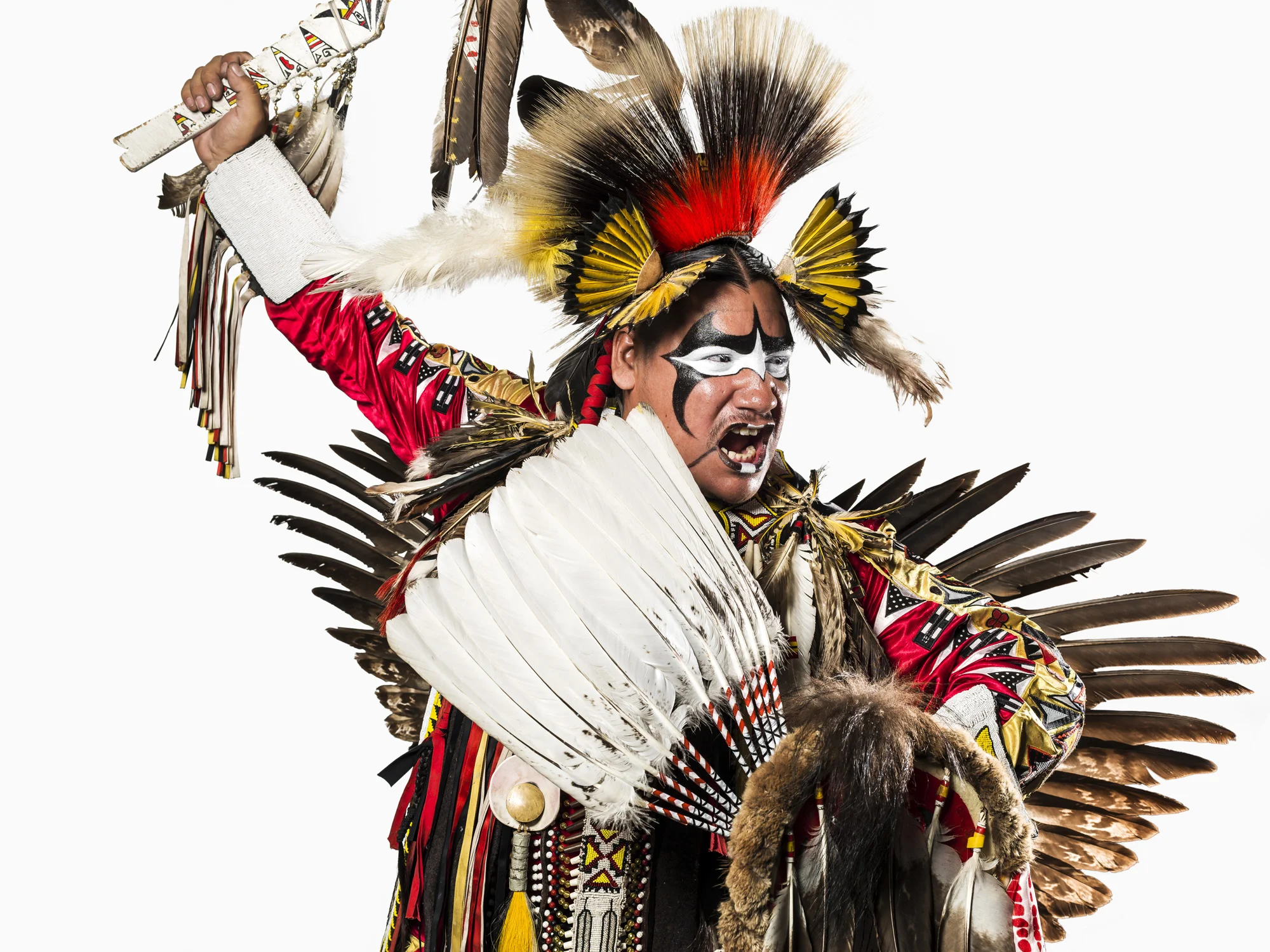
FLAGSTAFF, ARIZONA, 13 APRIL 2014: Images from a multi-tribe Pow Wow held in Flagstaff Arizona. These dancers come from all over America, the portraits are of Navajo dancers. Their costumes are not traditional however and have come to portray an almost "Super-Indian" collective today. (Photo by Brent Stirton/Reportage for Figaro Magazine.)

FLAGSTAFF, ARIZONA, 13 APRIL 2014: Images from a multi-tribe Pow Wow held in Flagstaff Arizona. These dancers come from all over America, the portraits are of Navajo dancers. Their costumes are not traditional however and have come to portray an almost "Super-Indian" collective today. (Photo by Brent Stirton/Reportage for Figaro Magazine.)

FLAGSTAFF, ARIZONA, 13 APRIL 2014: Images from a multi-tribe Pow Wow held in Flagstaff Arizona. These dancers come from all over America, the portraits are of Navajo dancers. Their costumes are not traditional however and have come to portray an almost "Super-Indian" collective today. (Photo by Brent Stirton/Reportage for Figaro Magazine.)
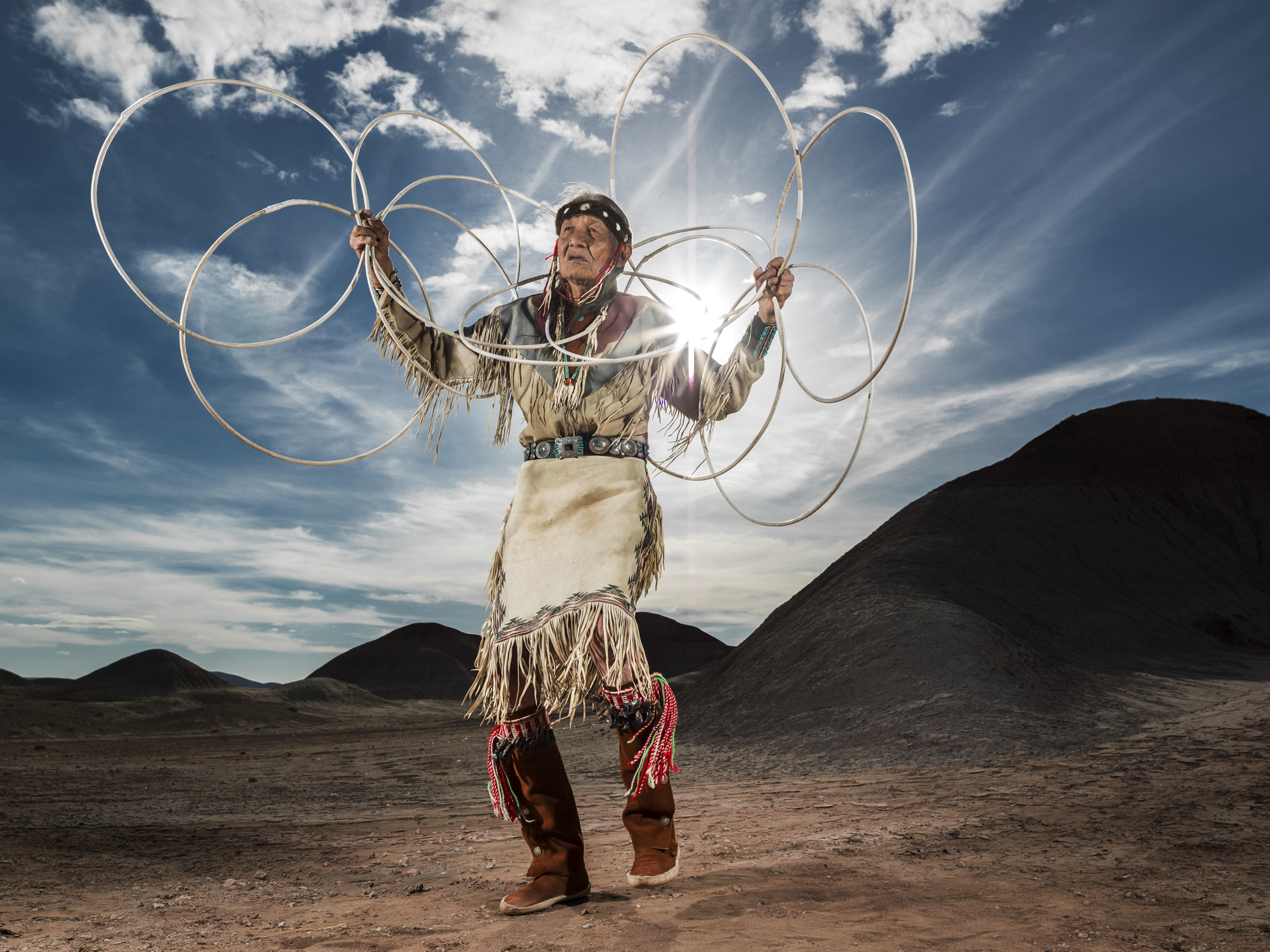
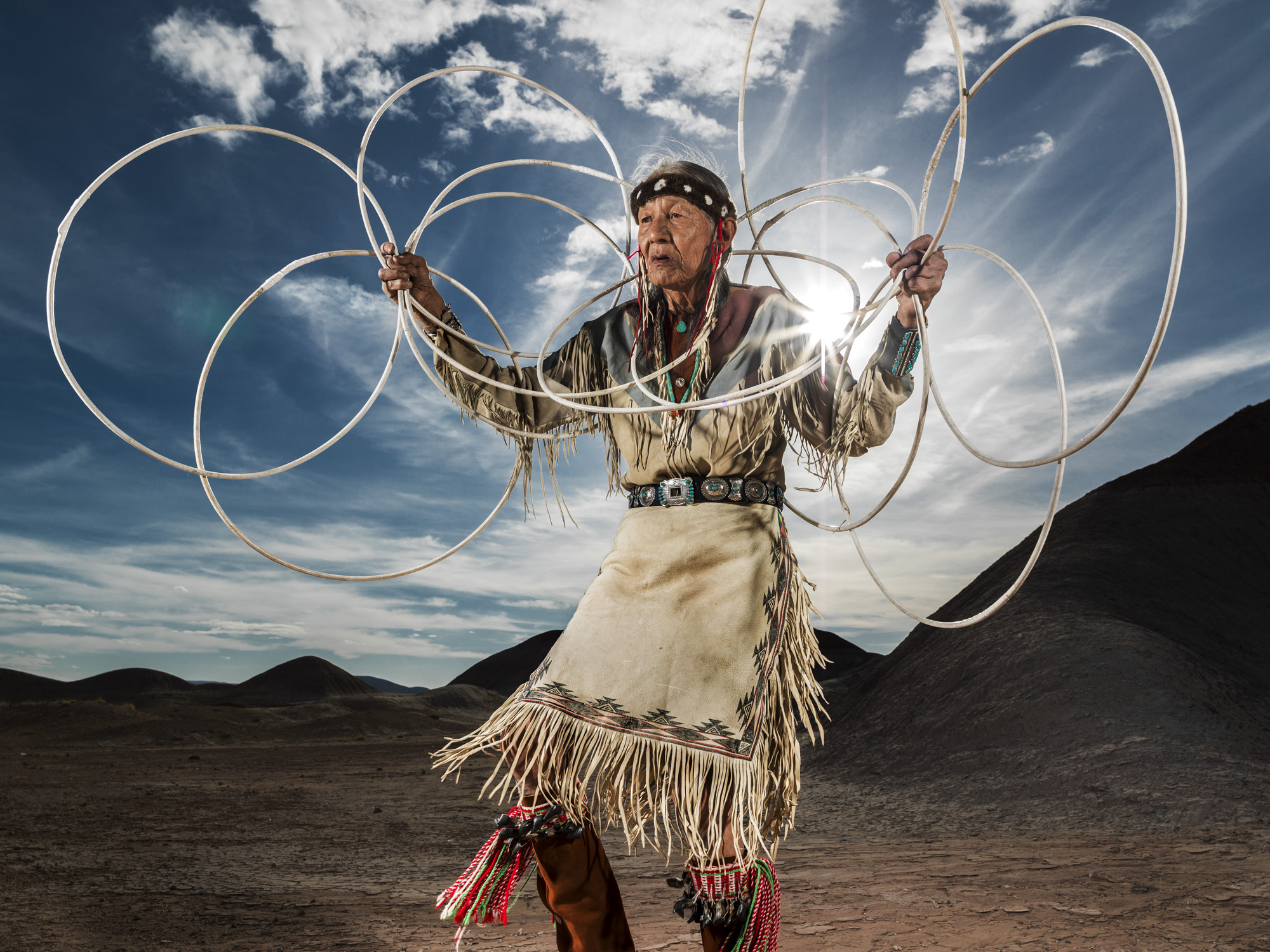
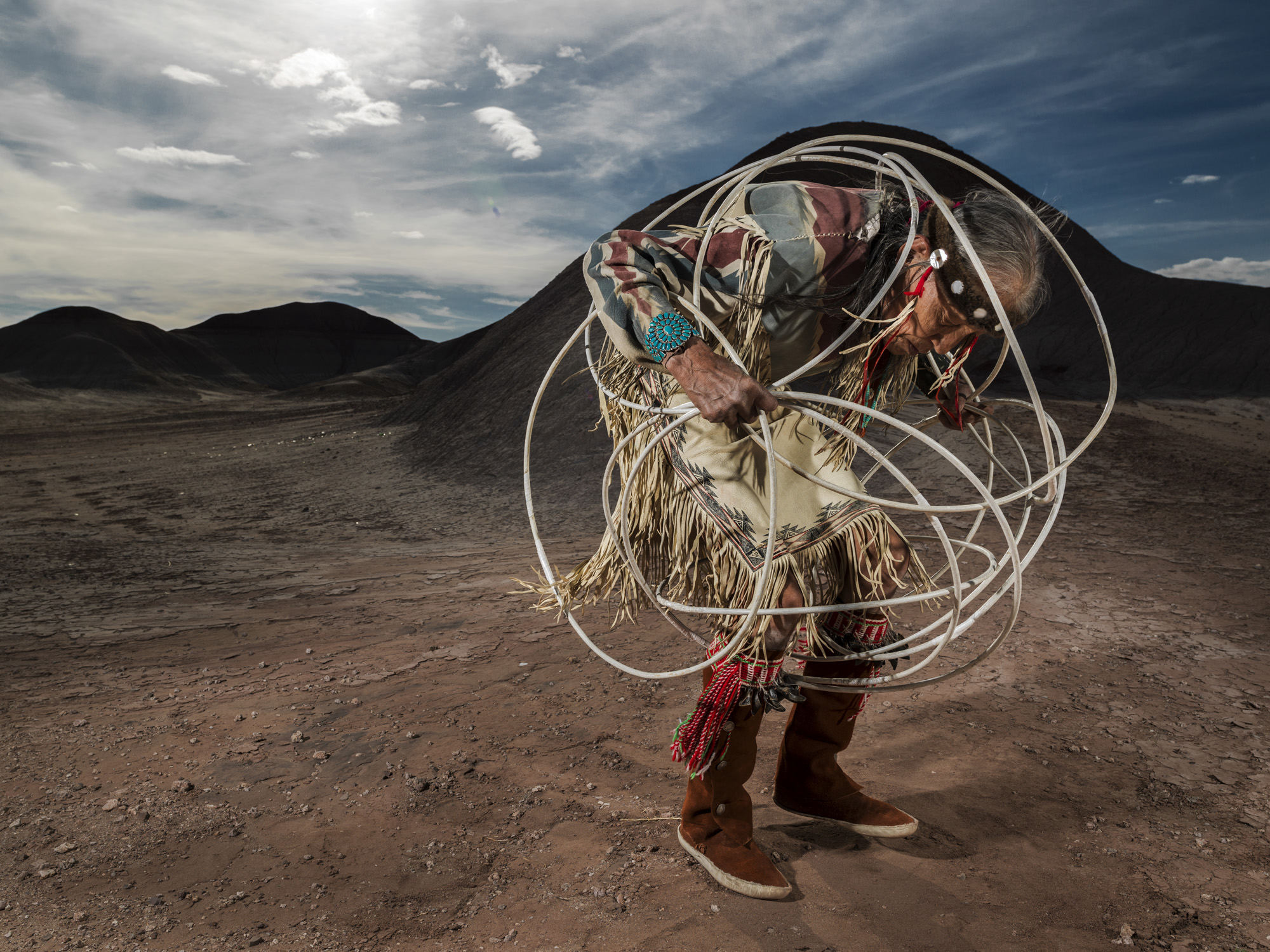
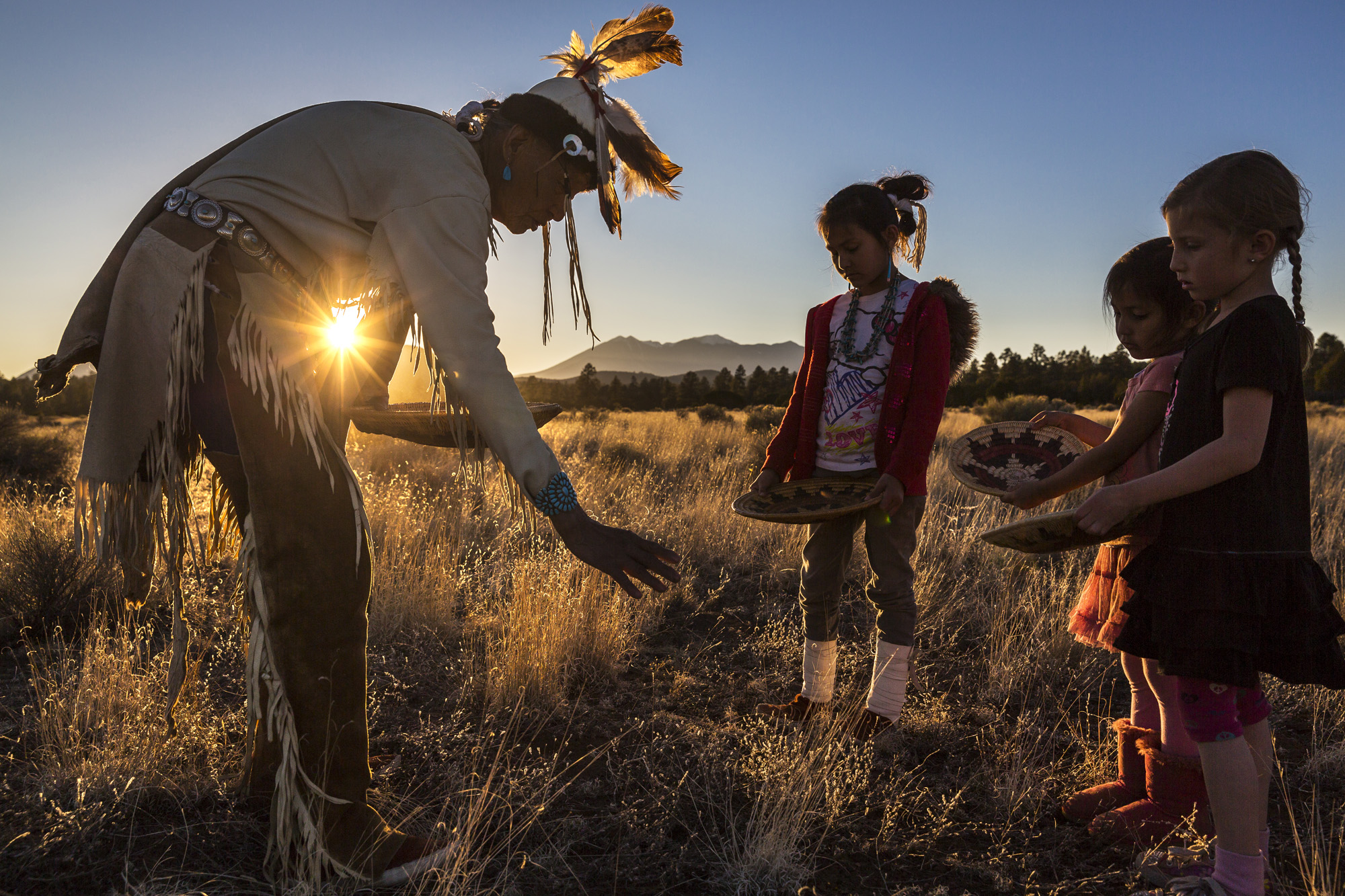
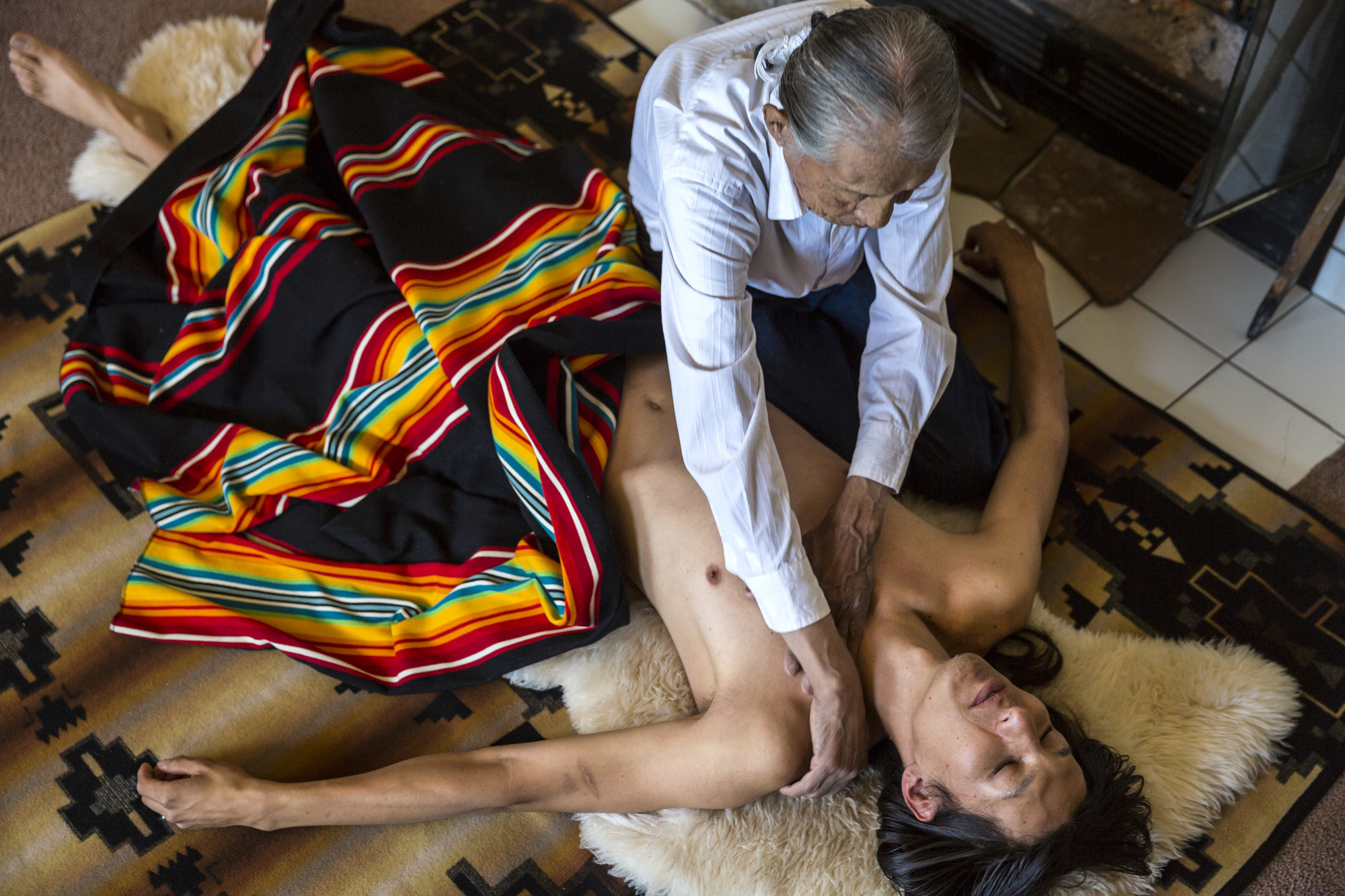
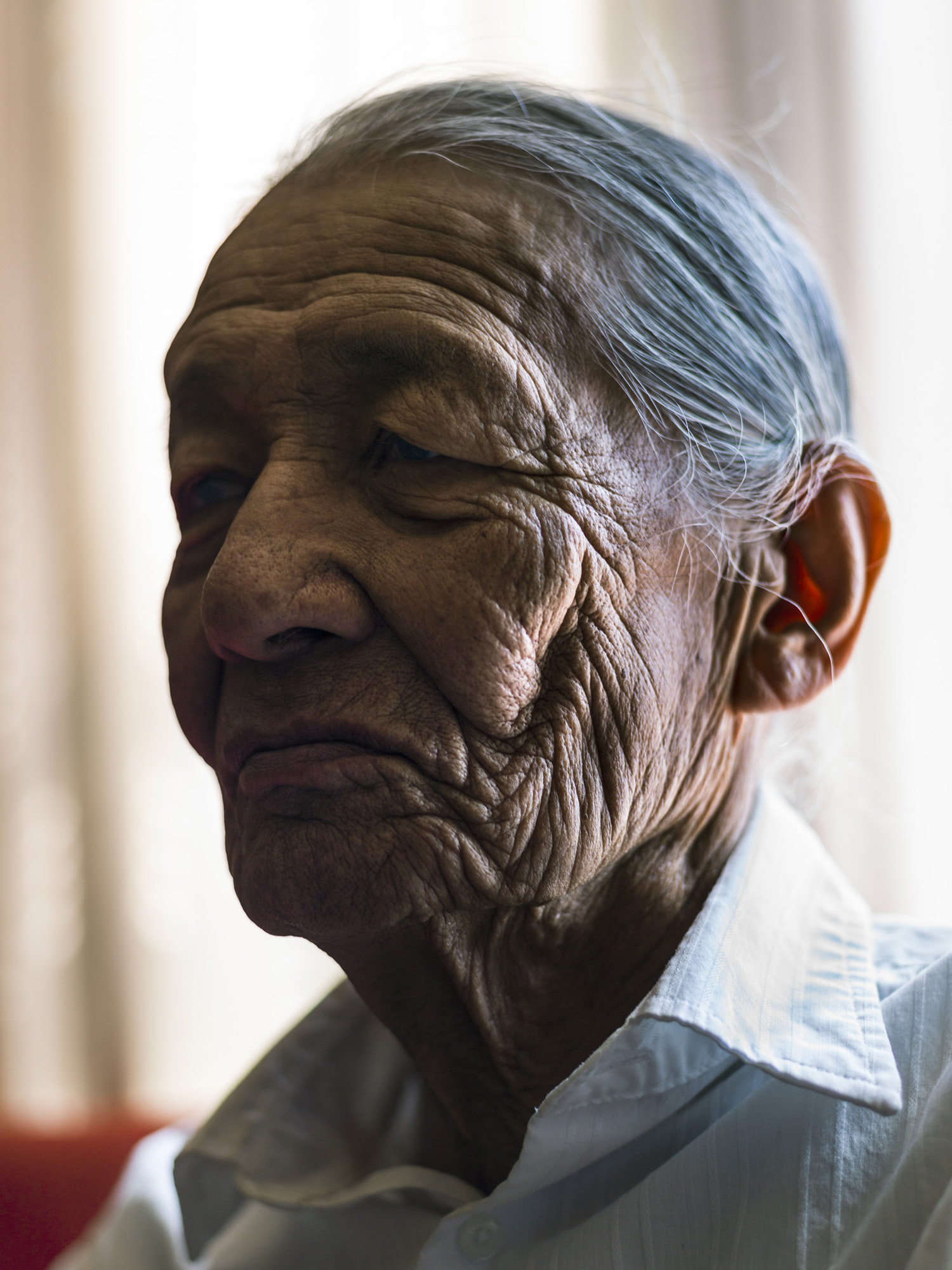
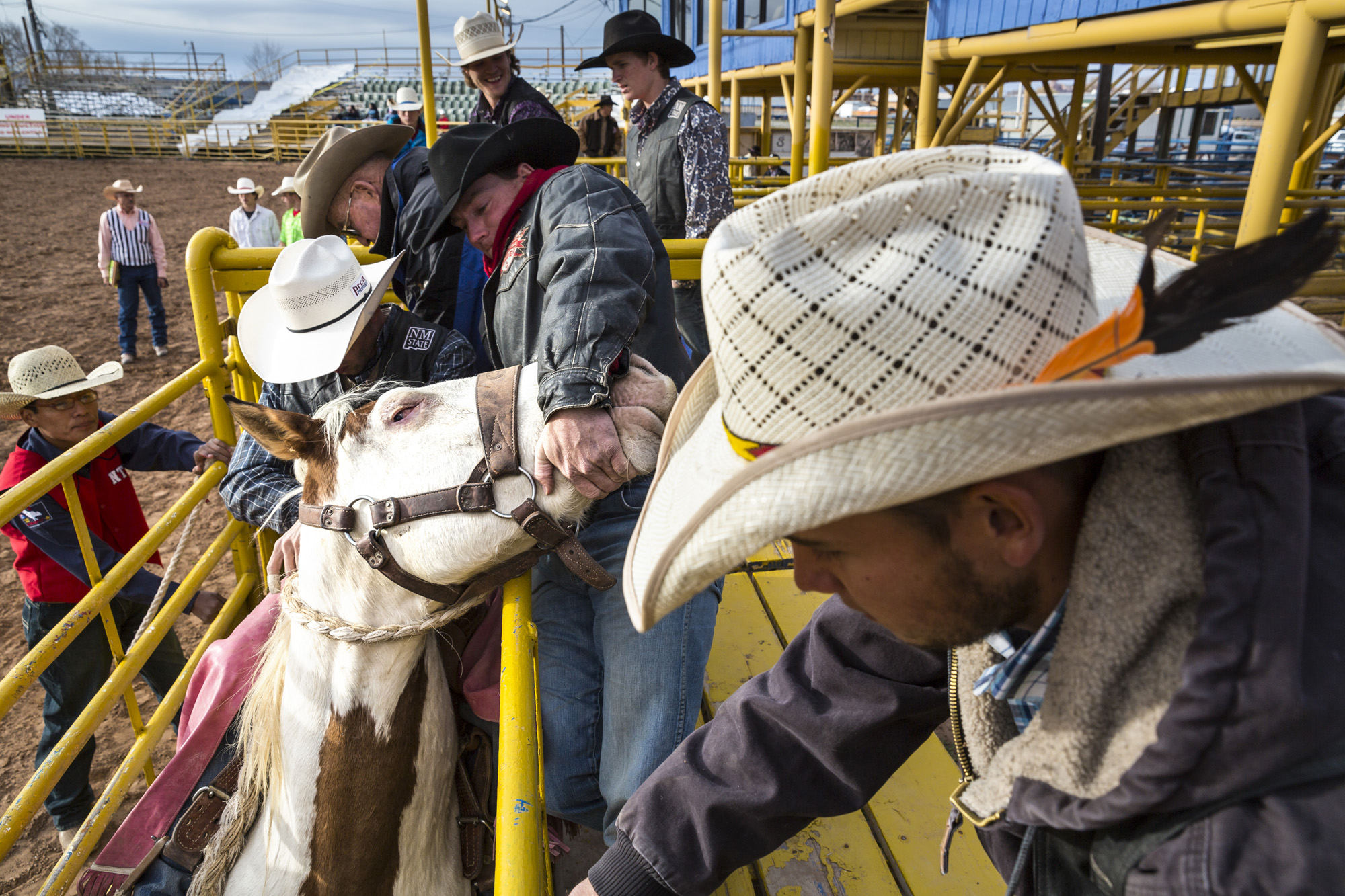
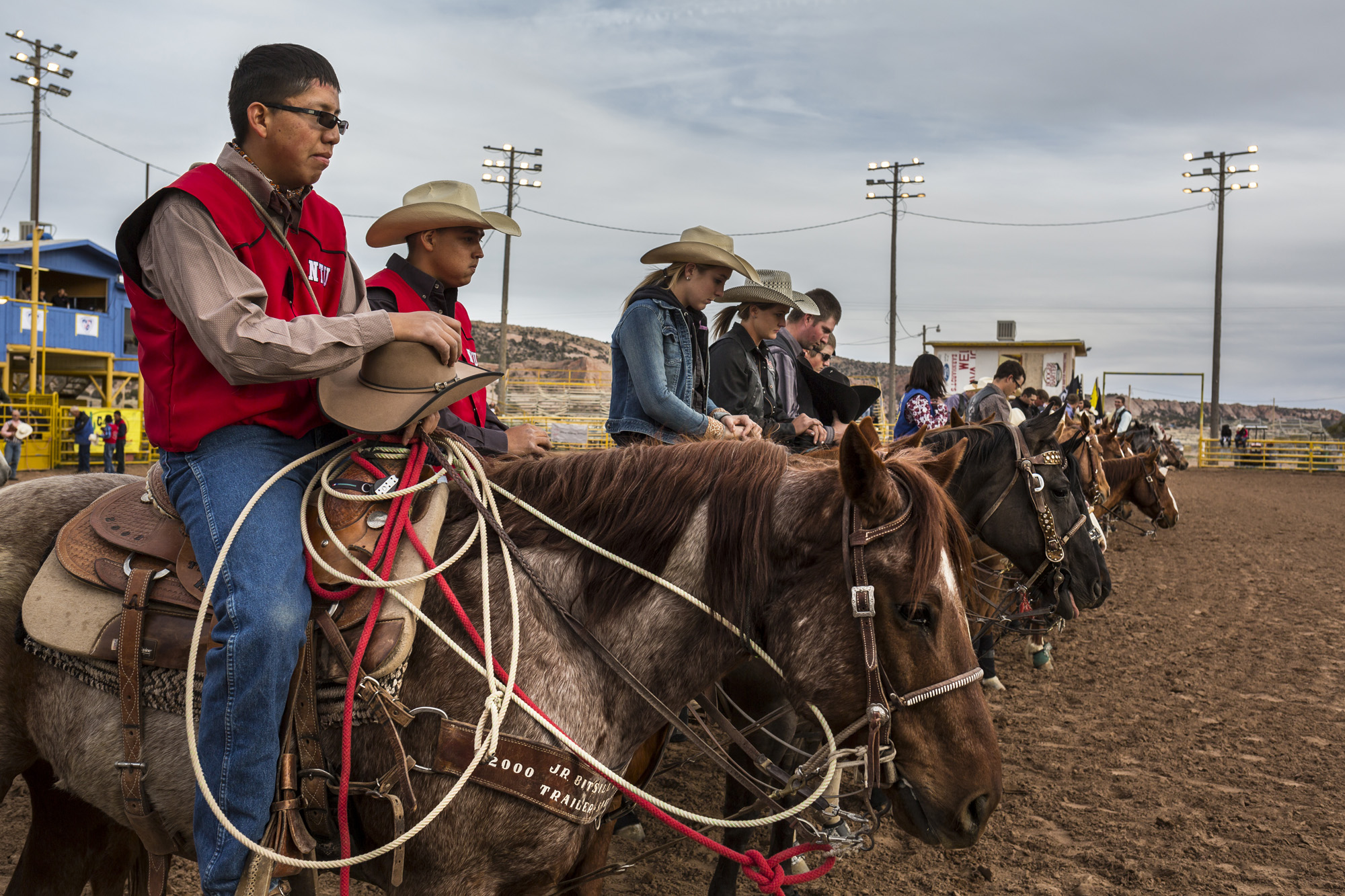
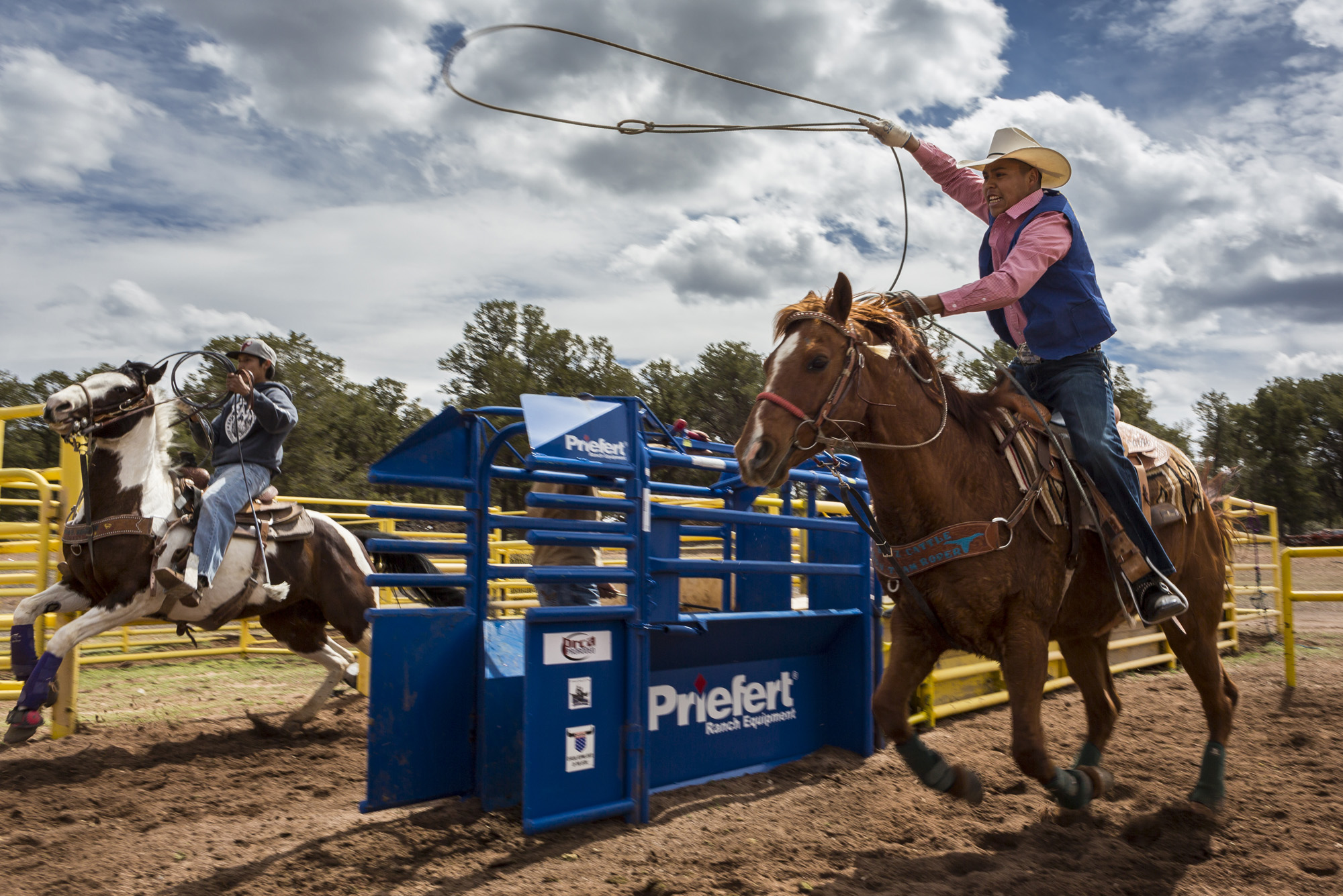
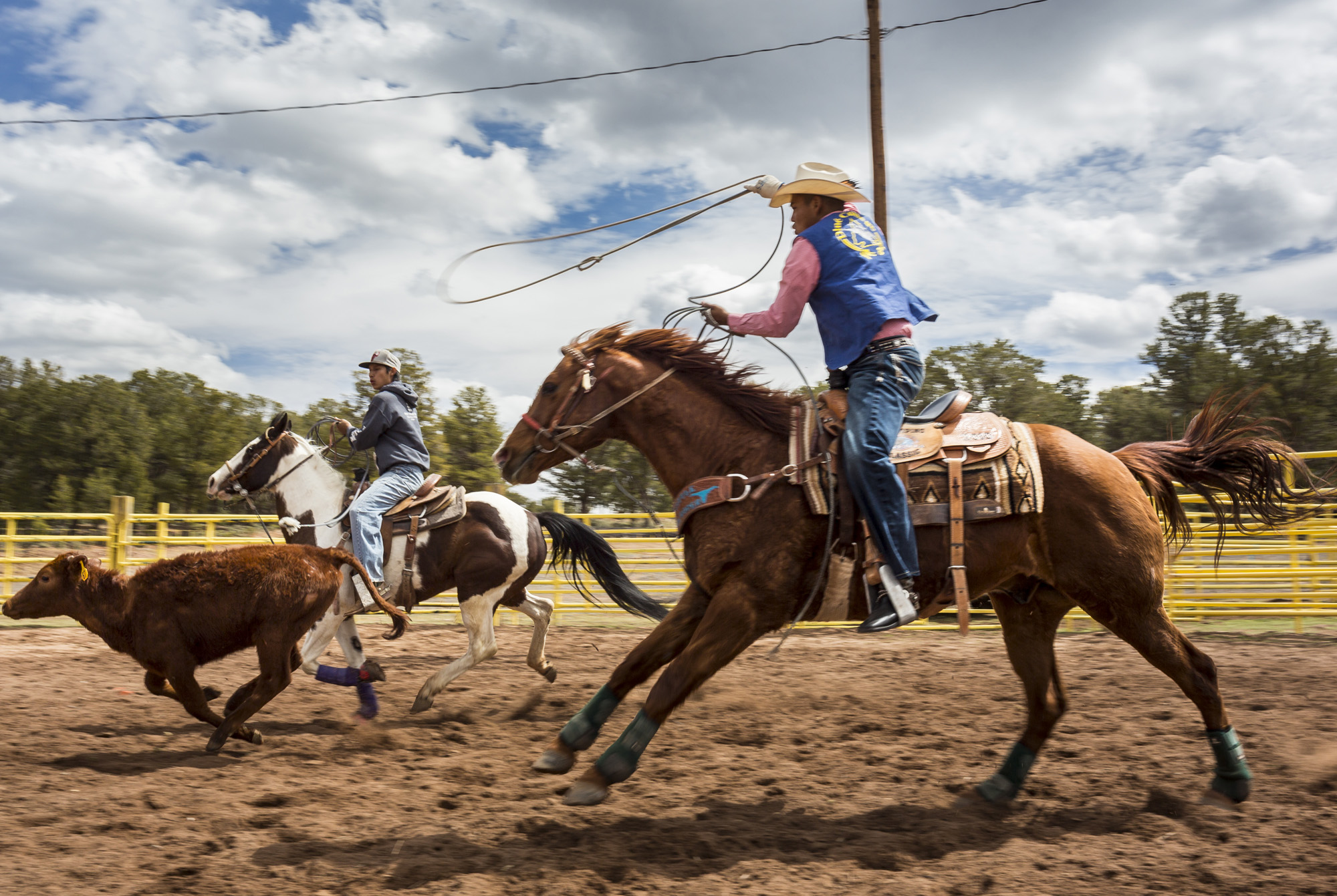

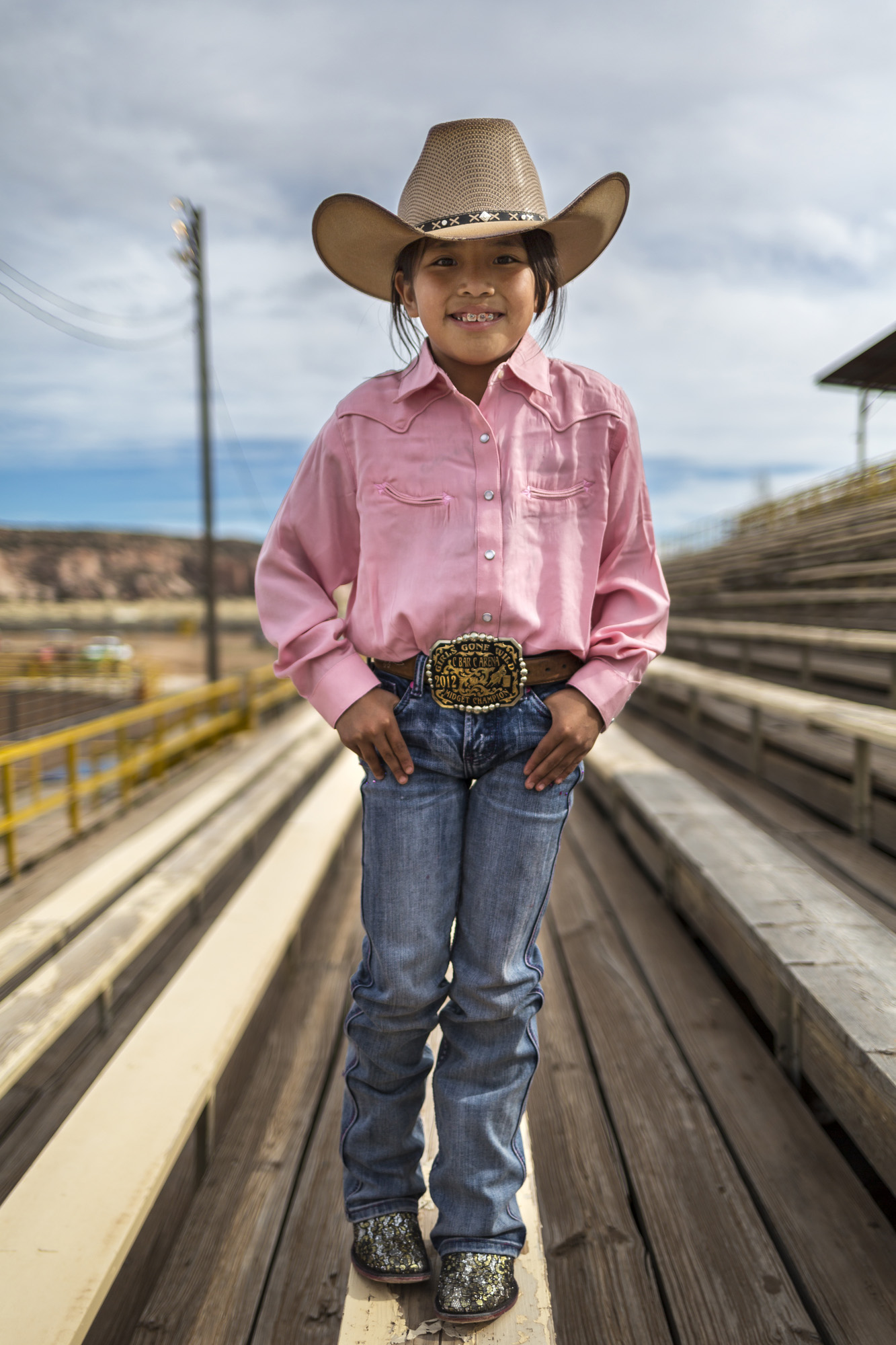
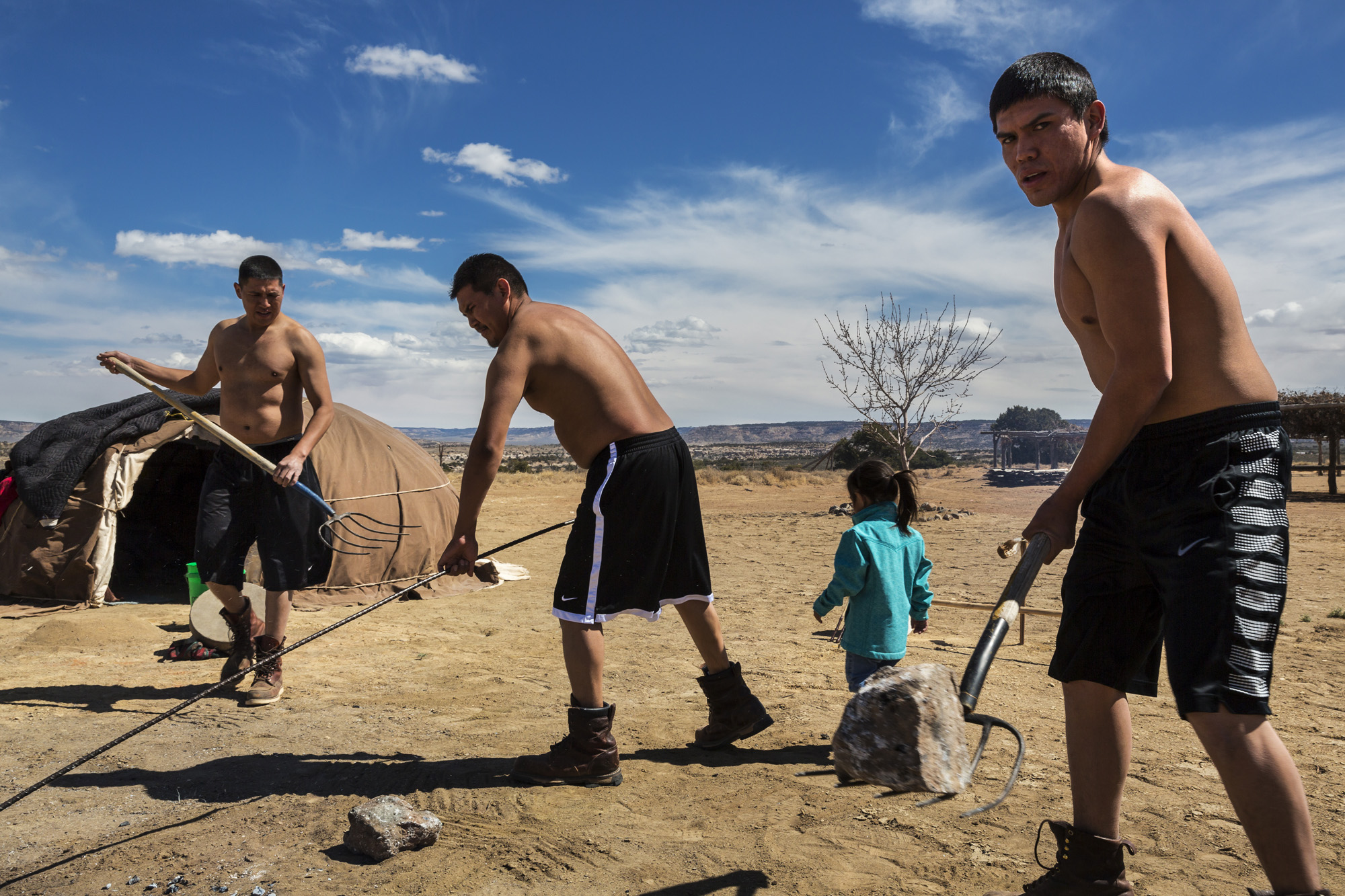
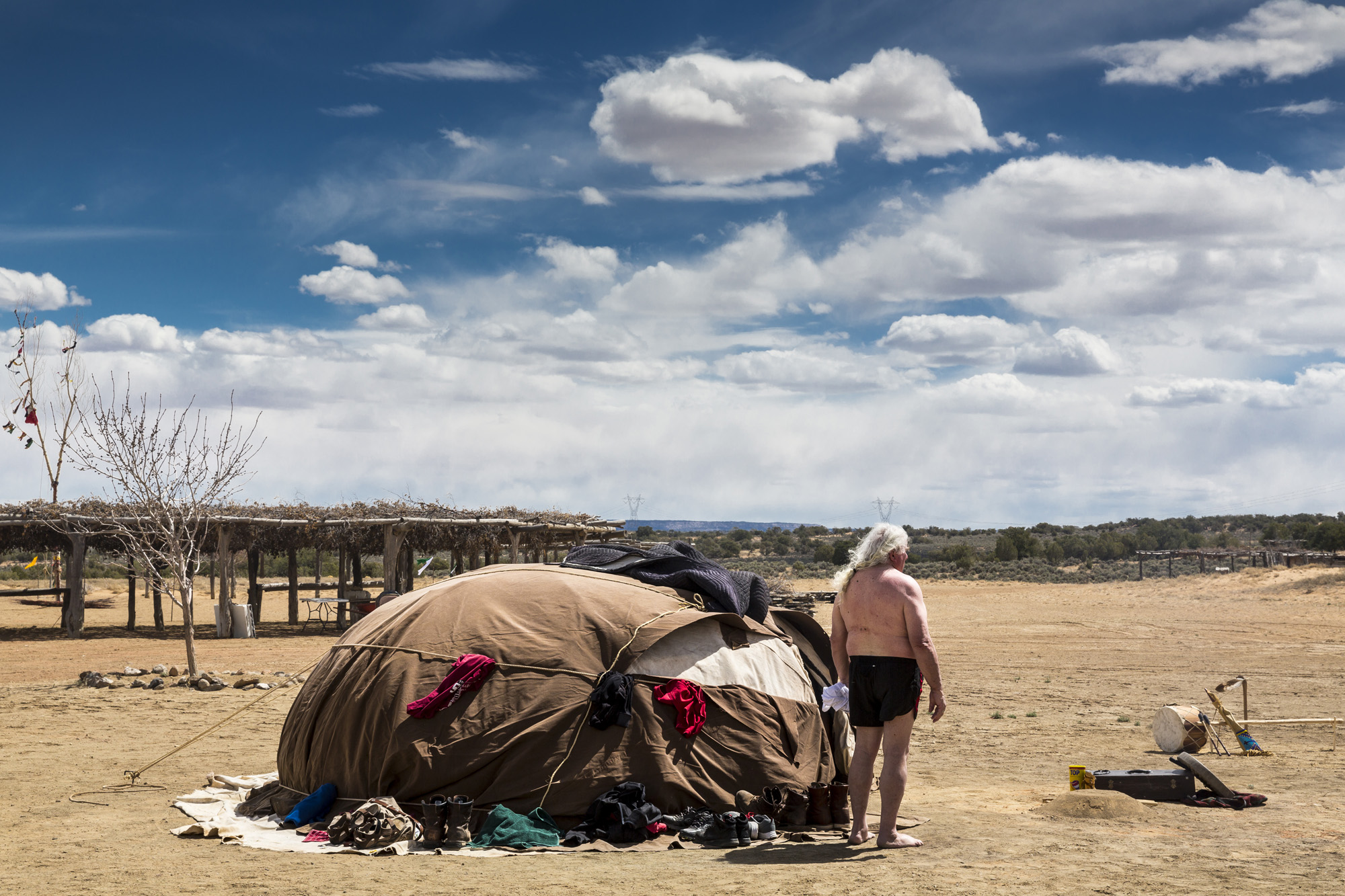
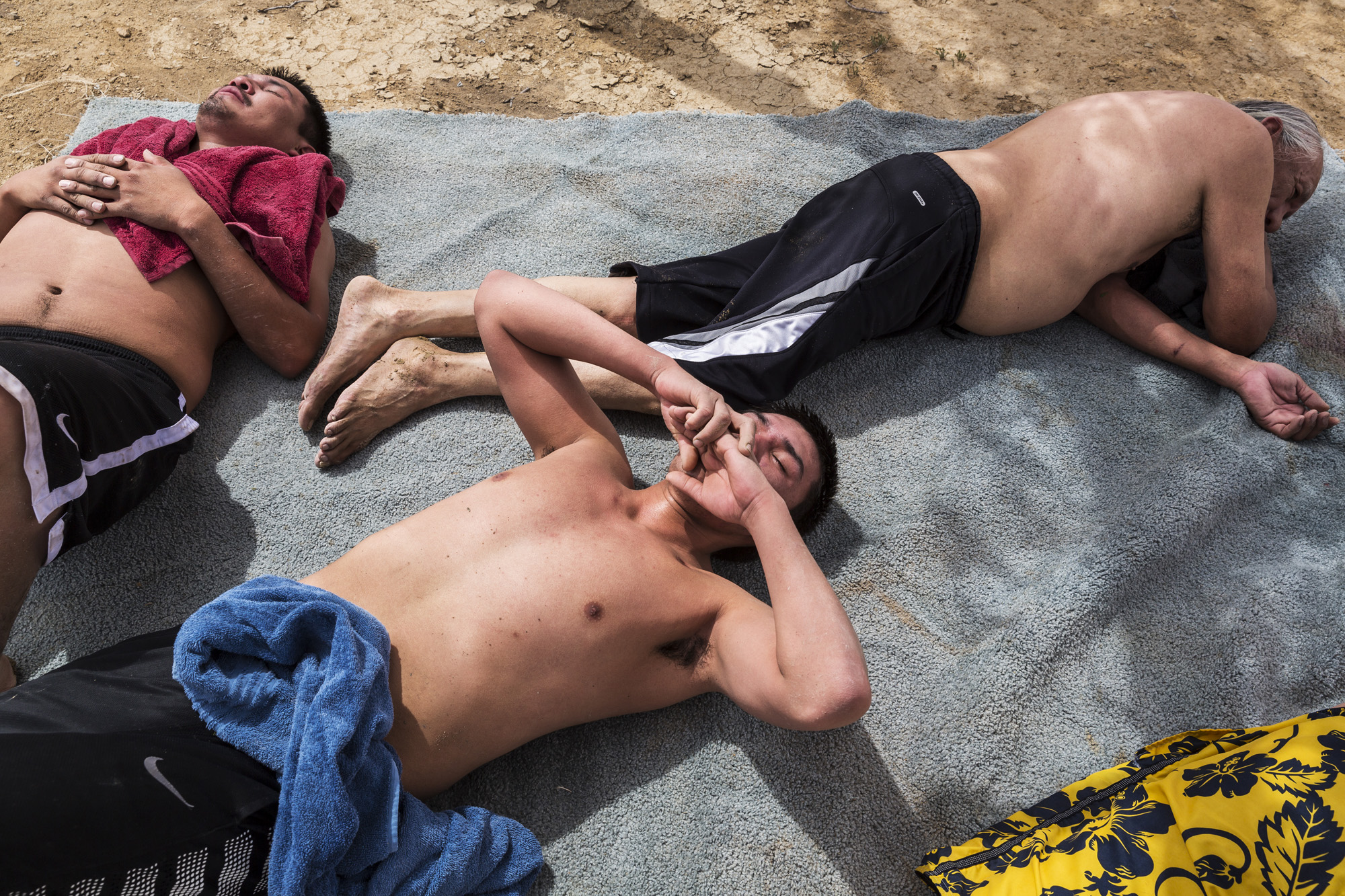

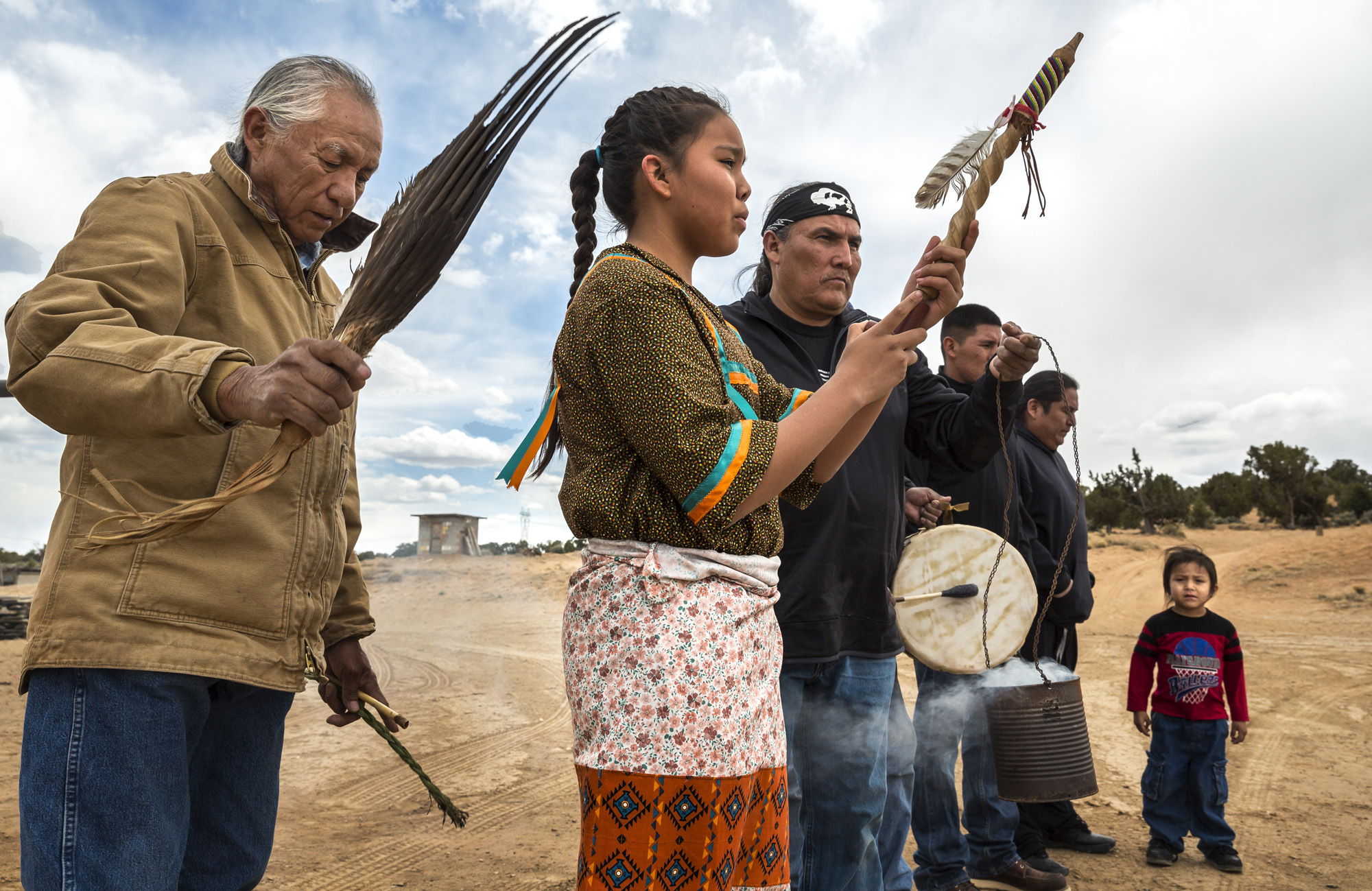

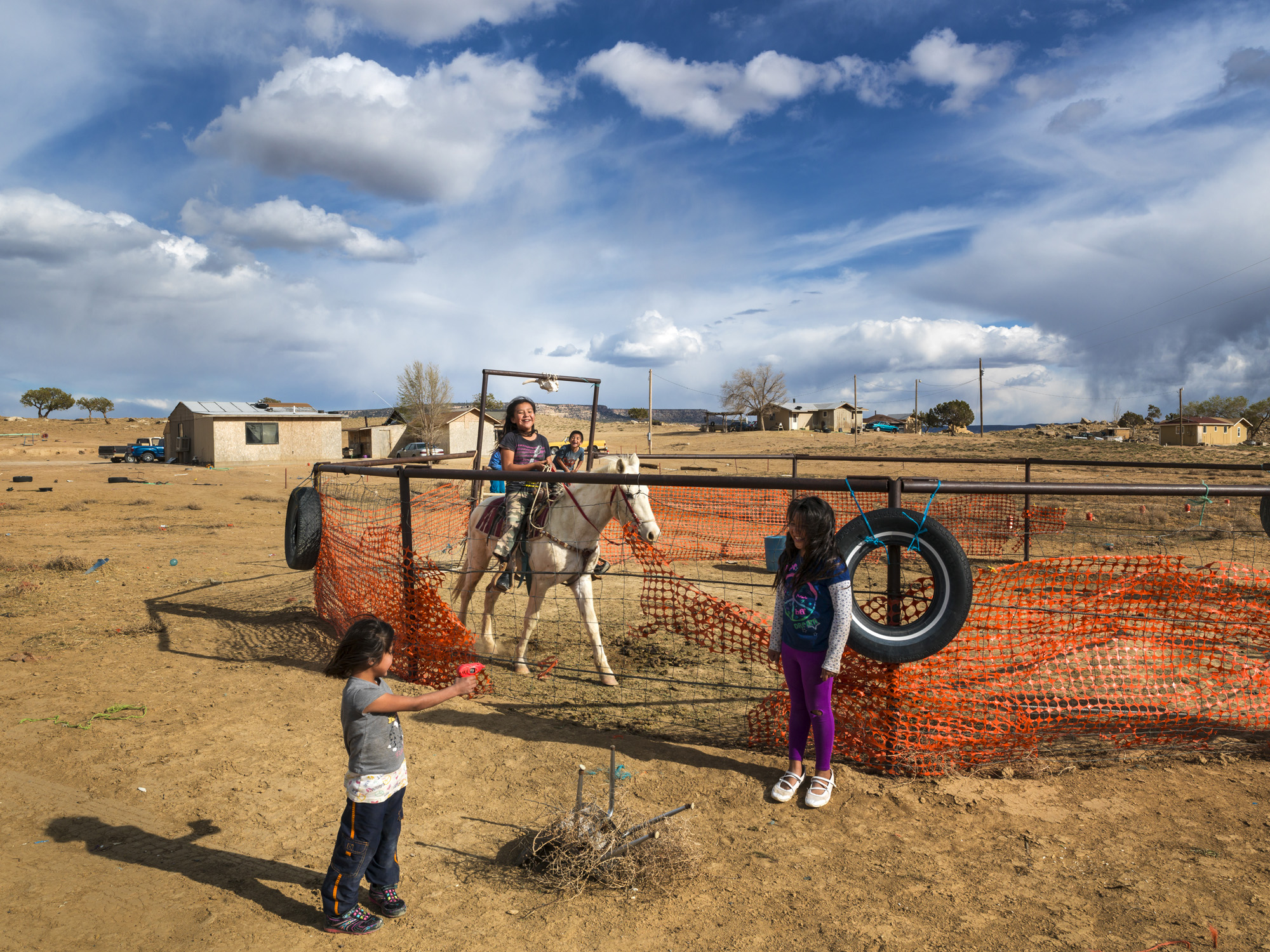
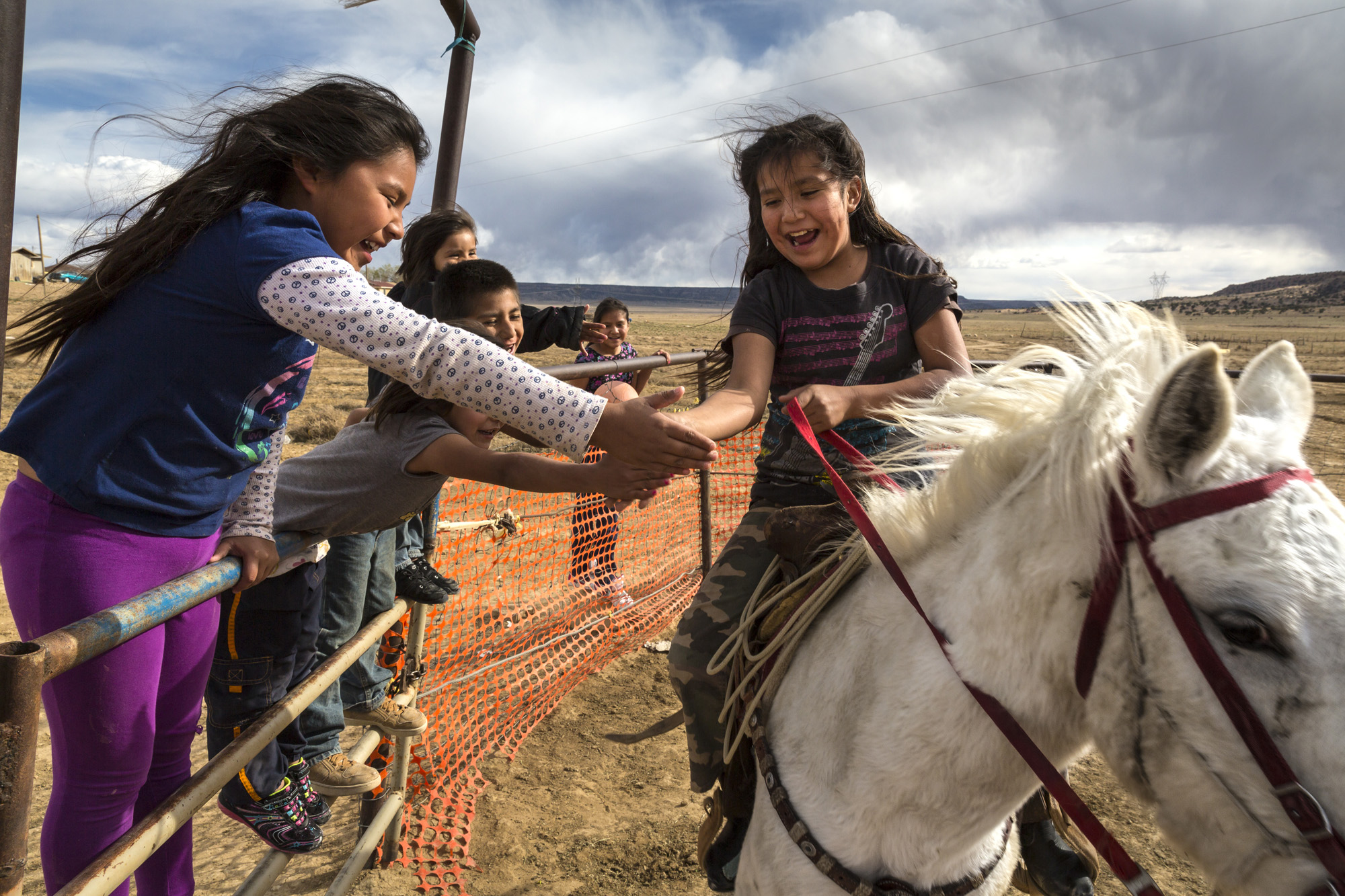
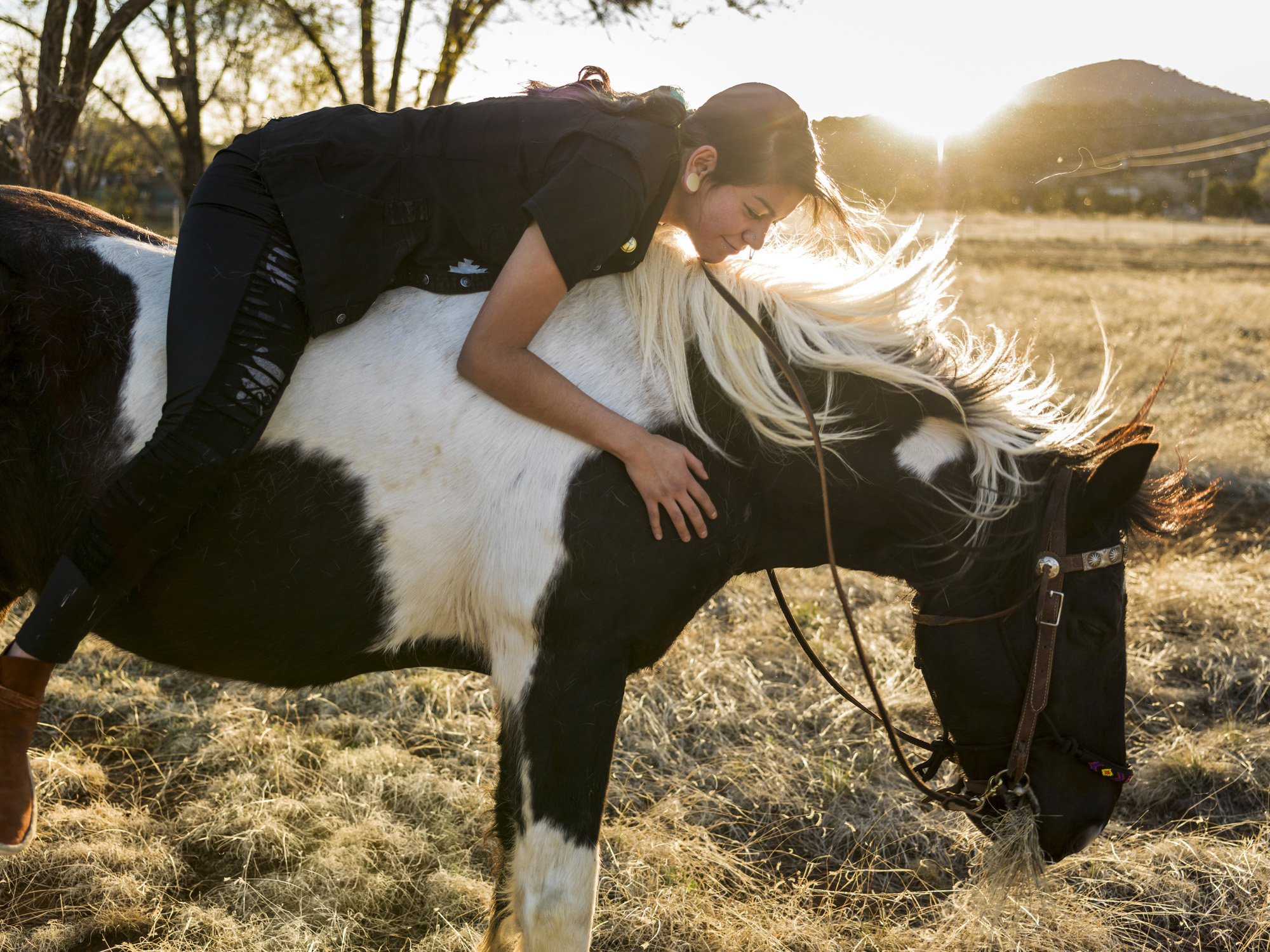
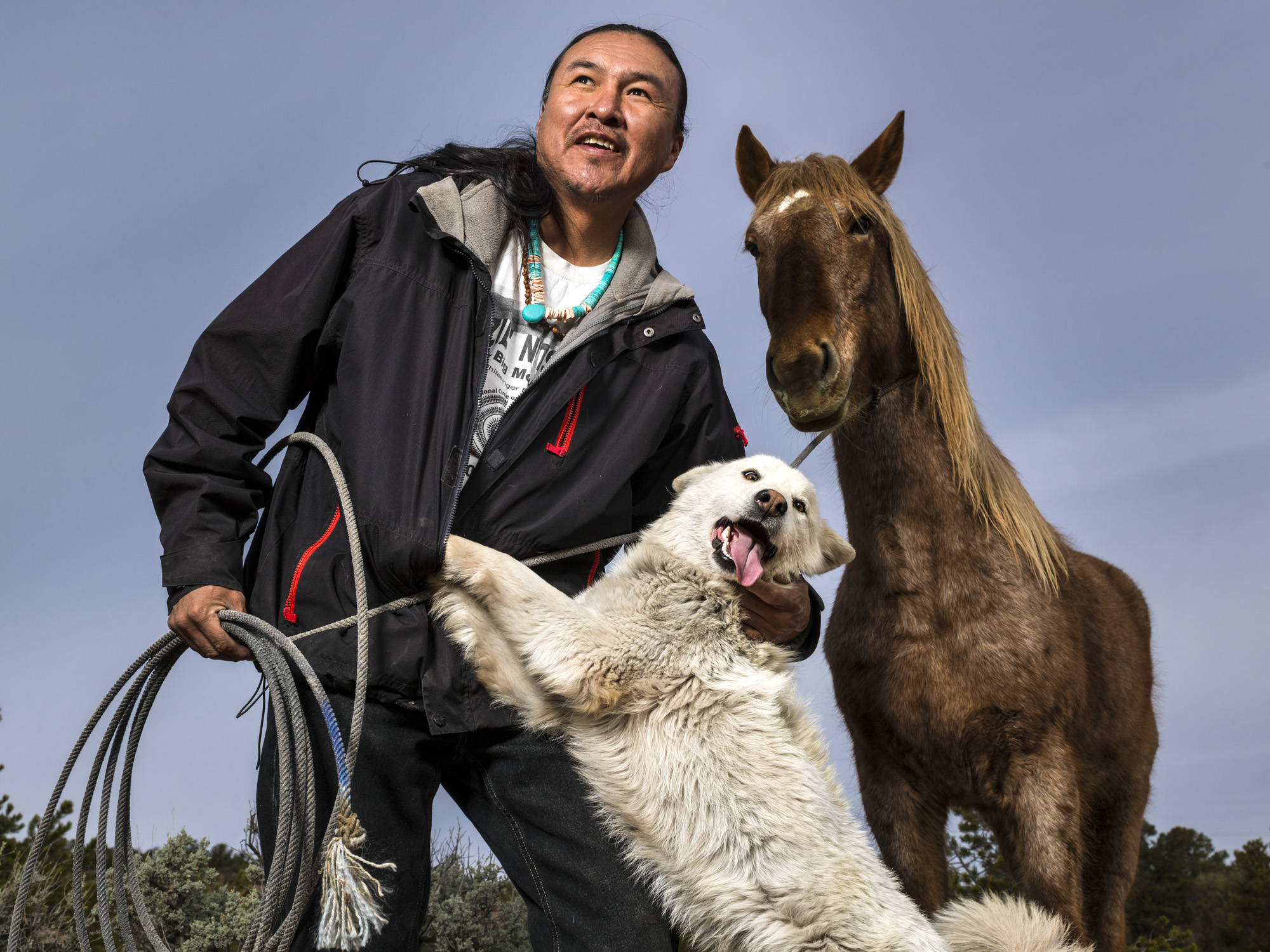
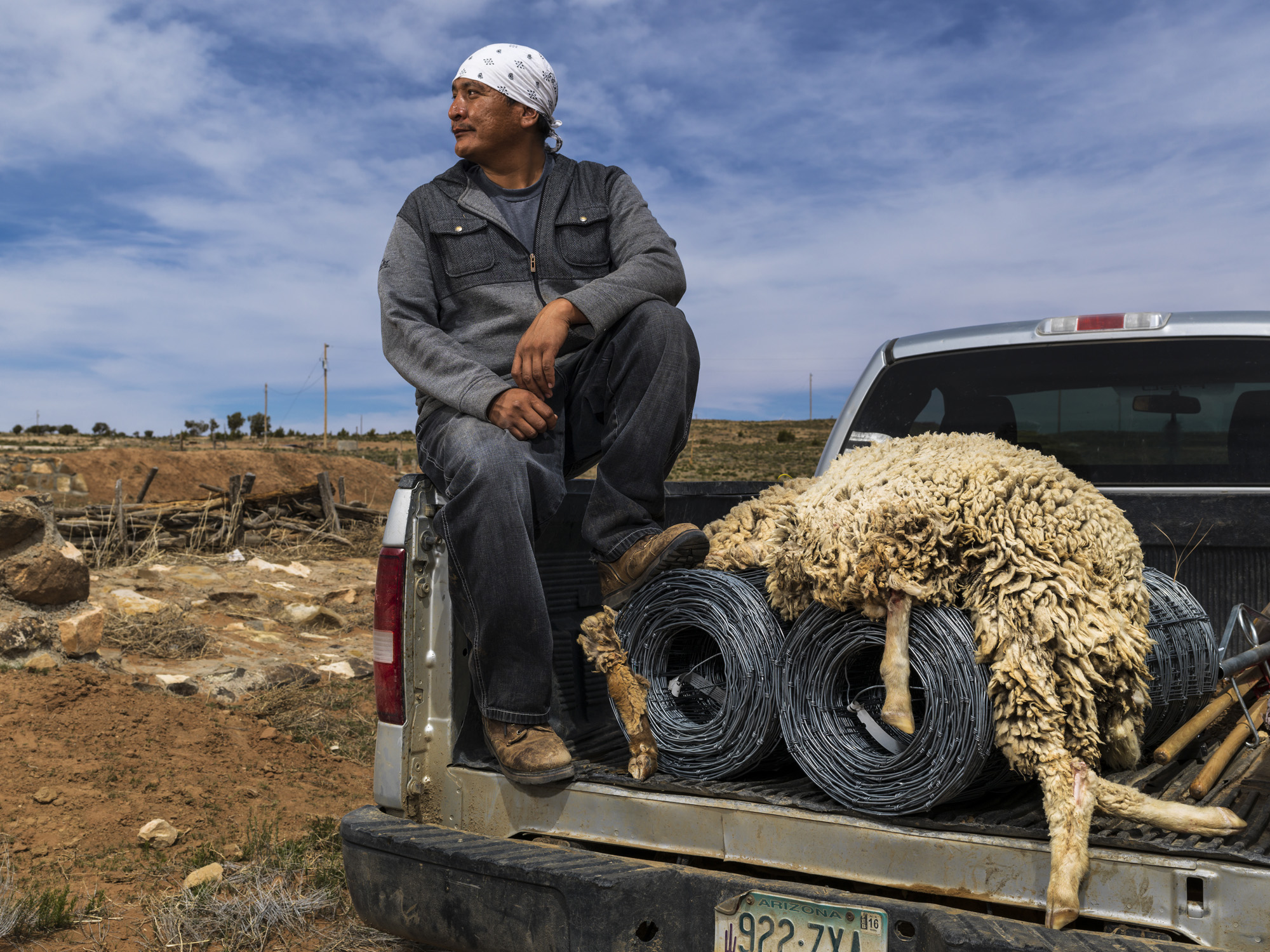
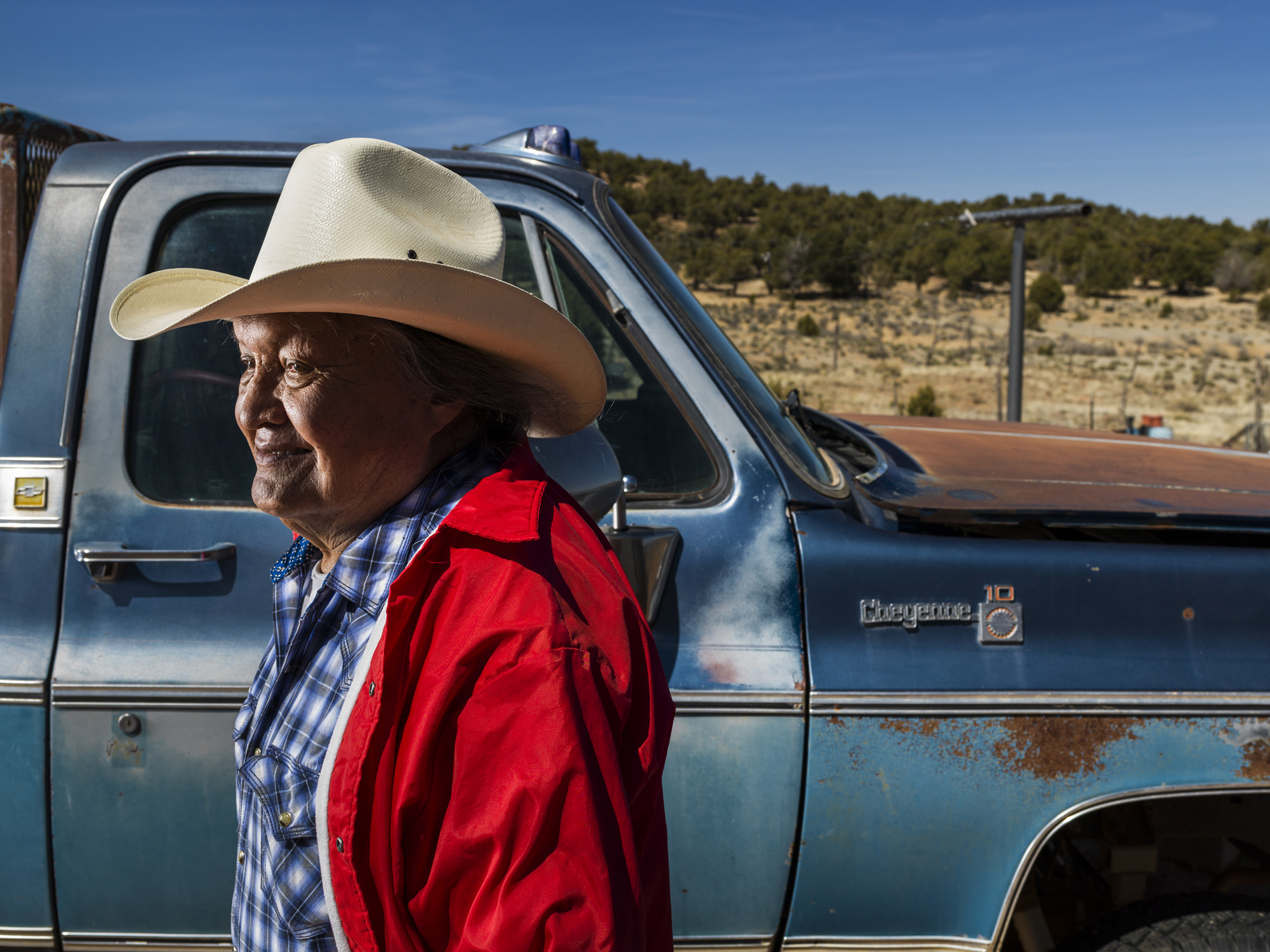
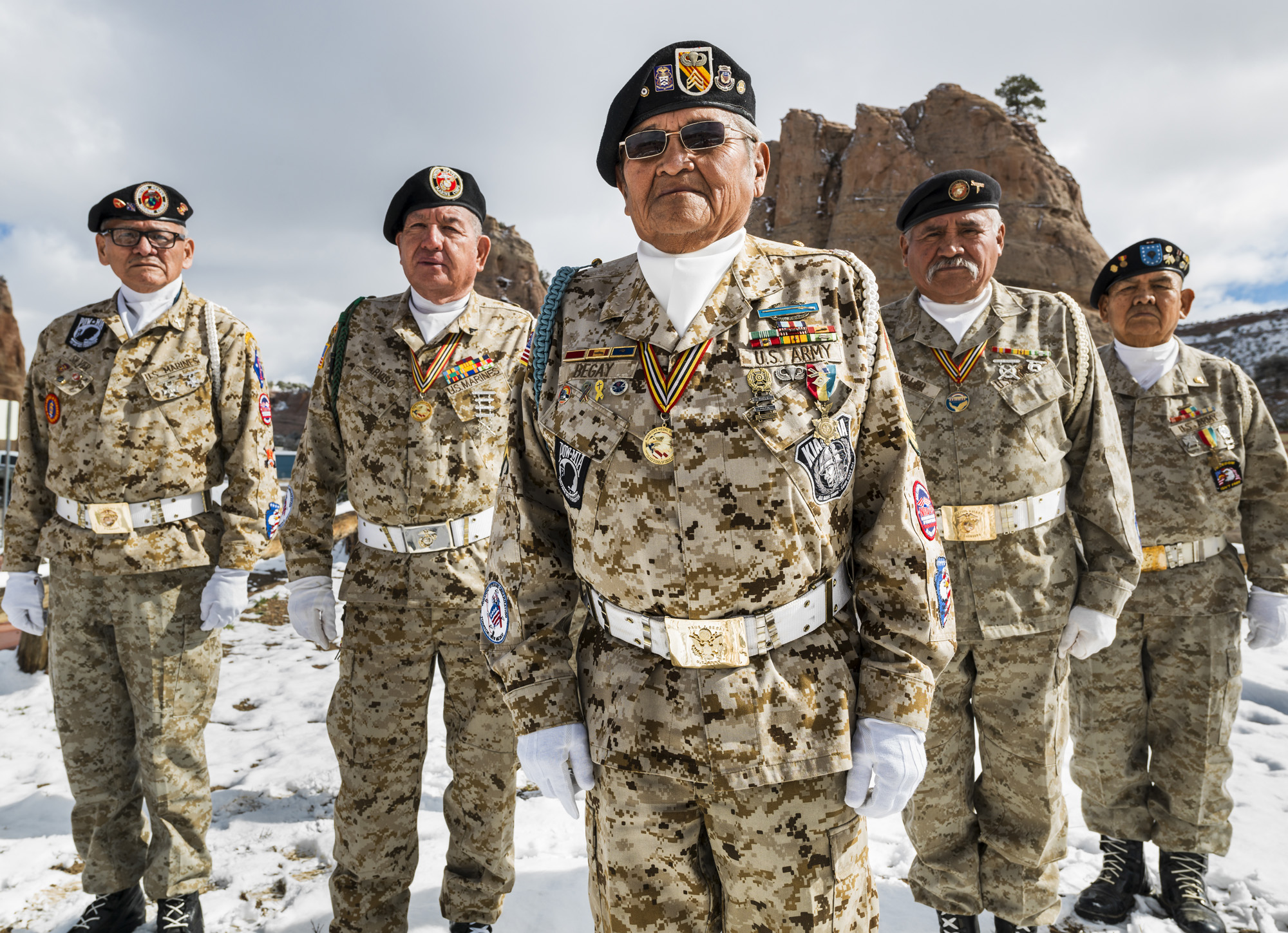
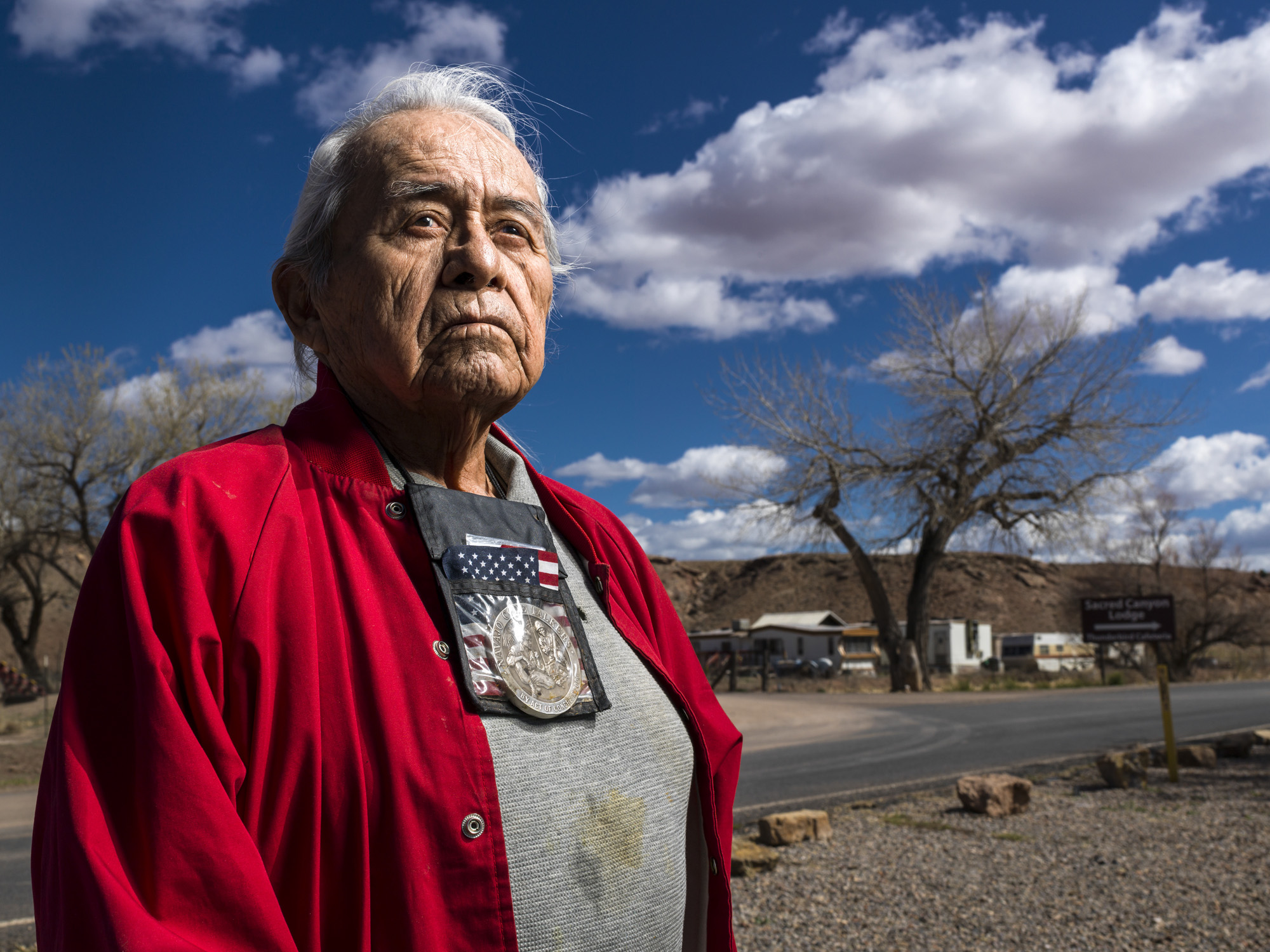
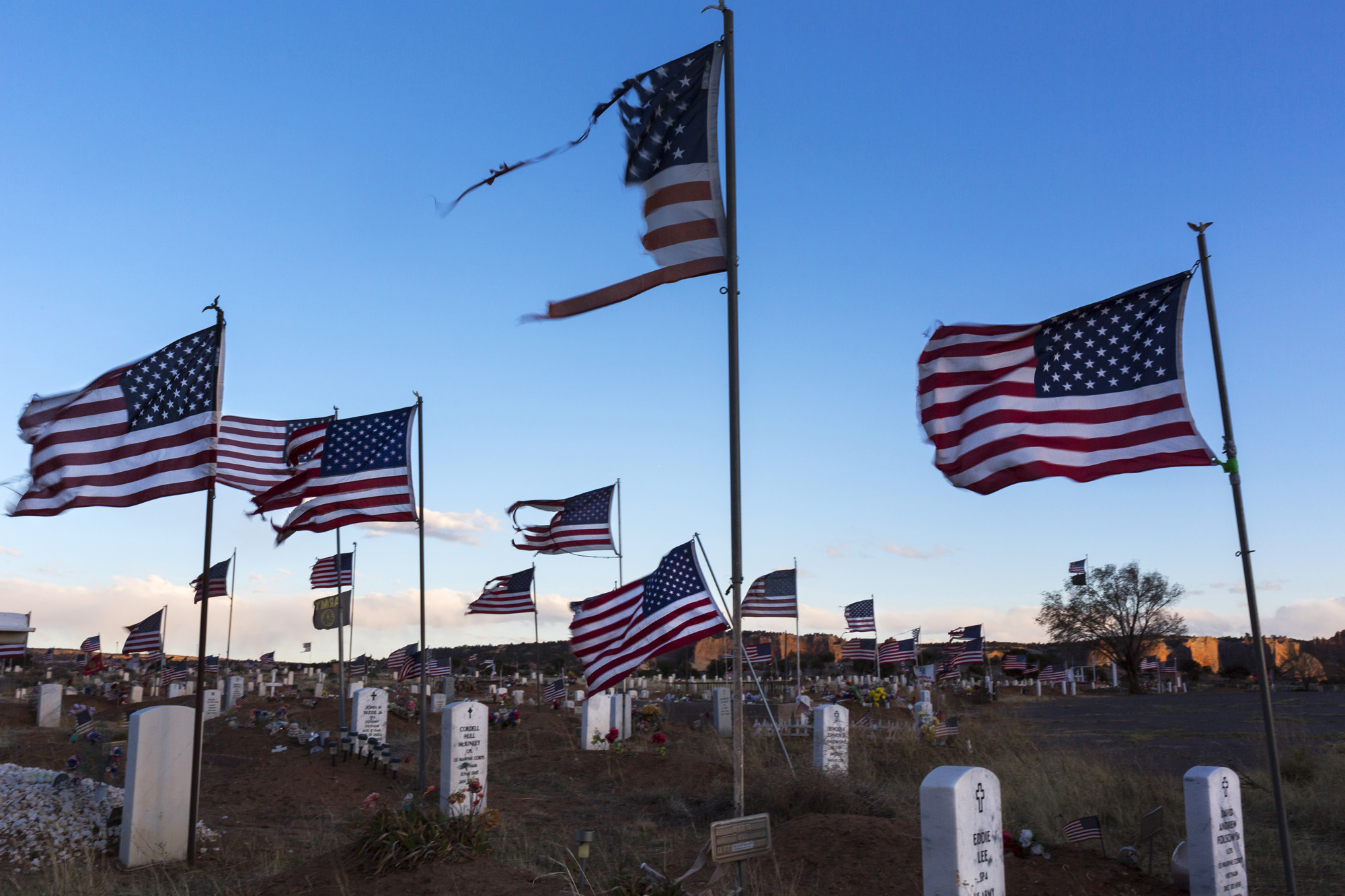
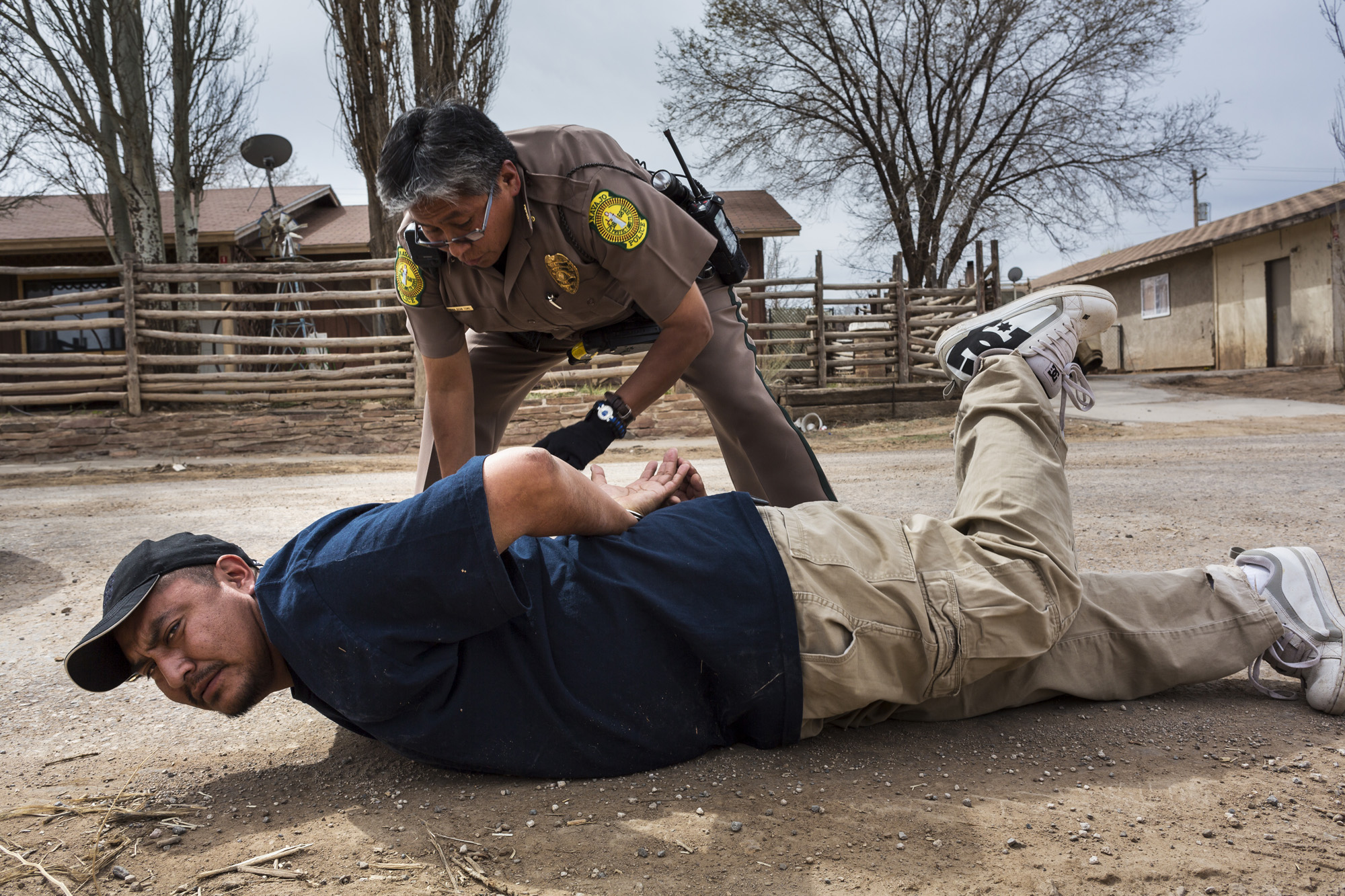
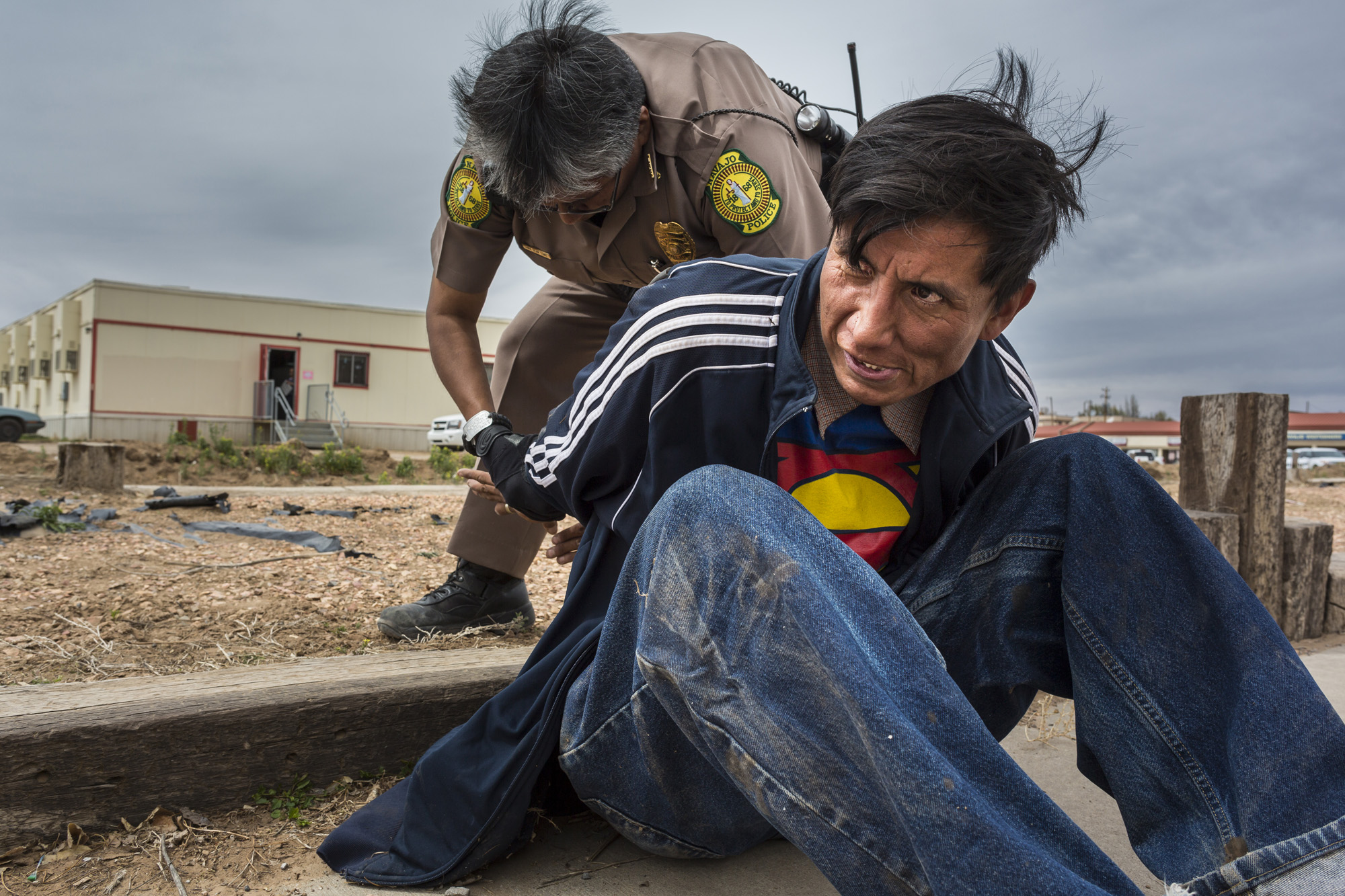
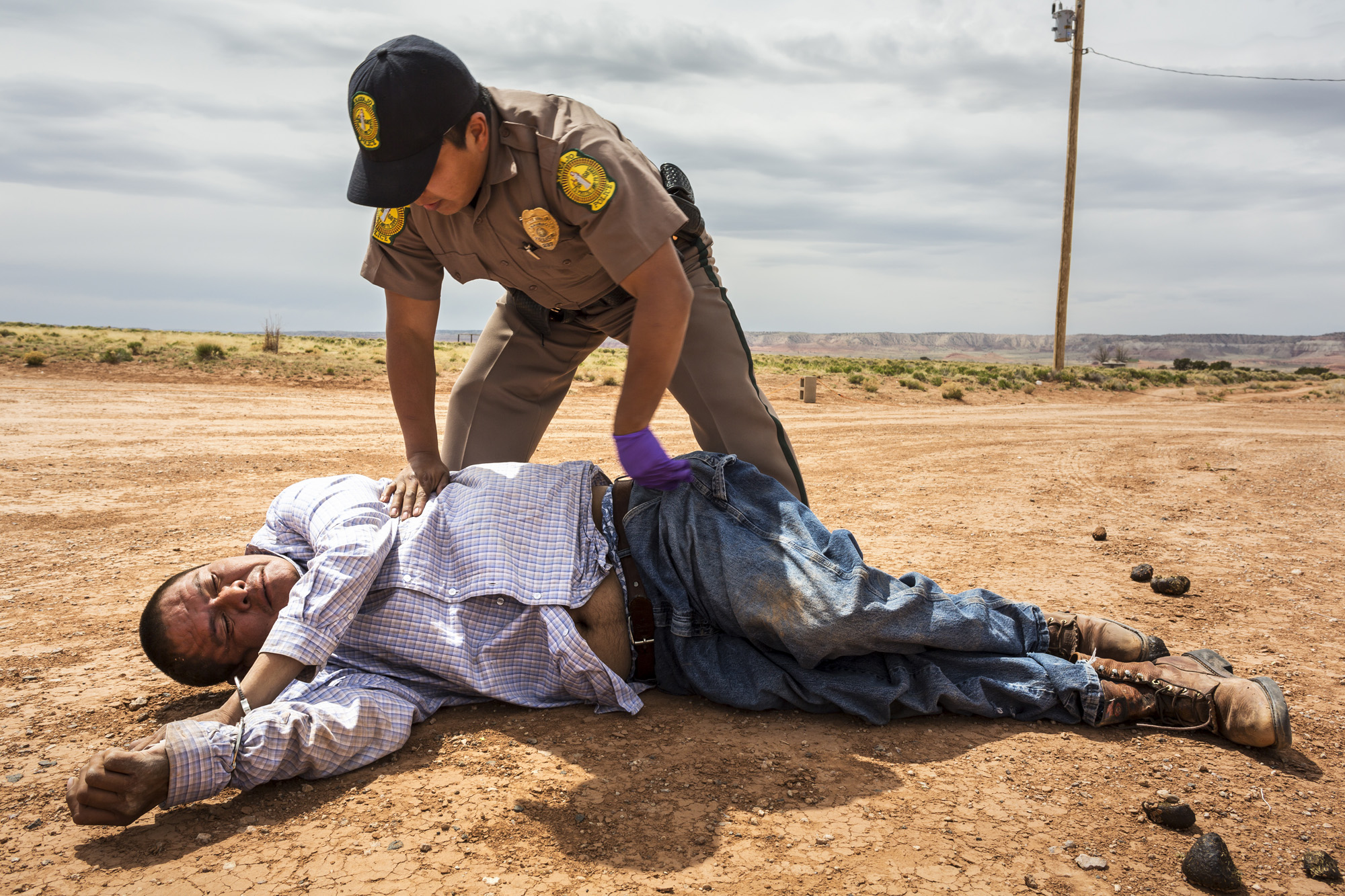
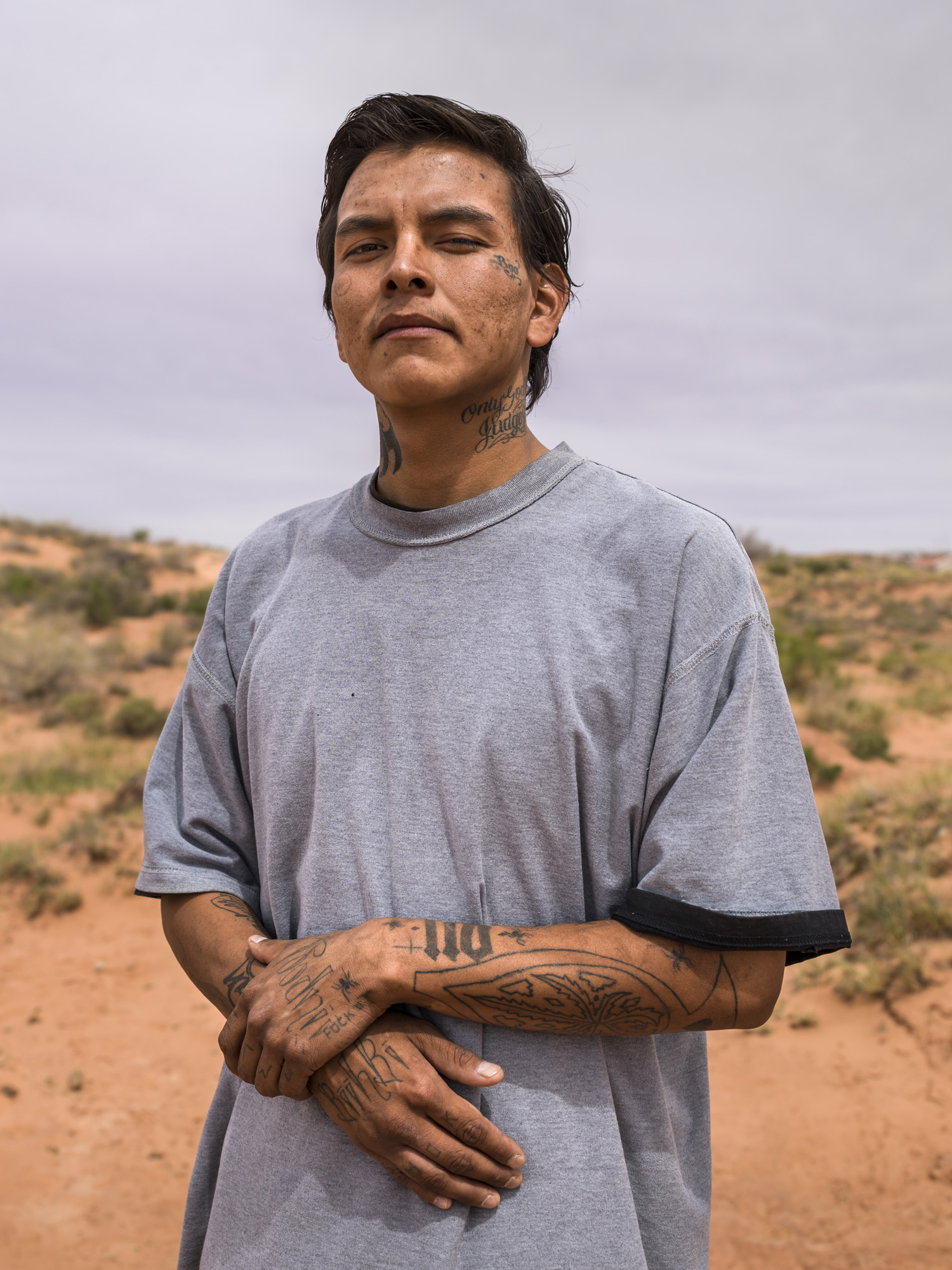
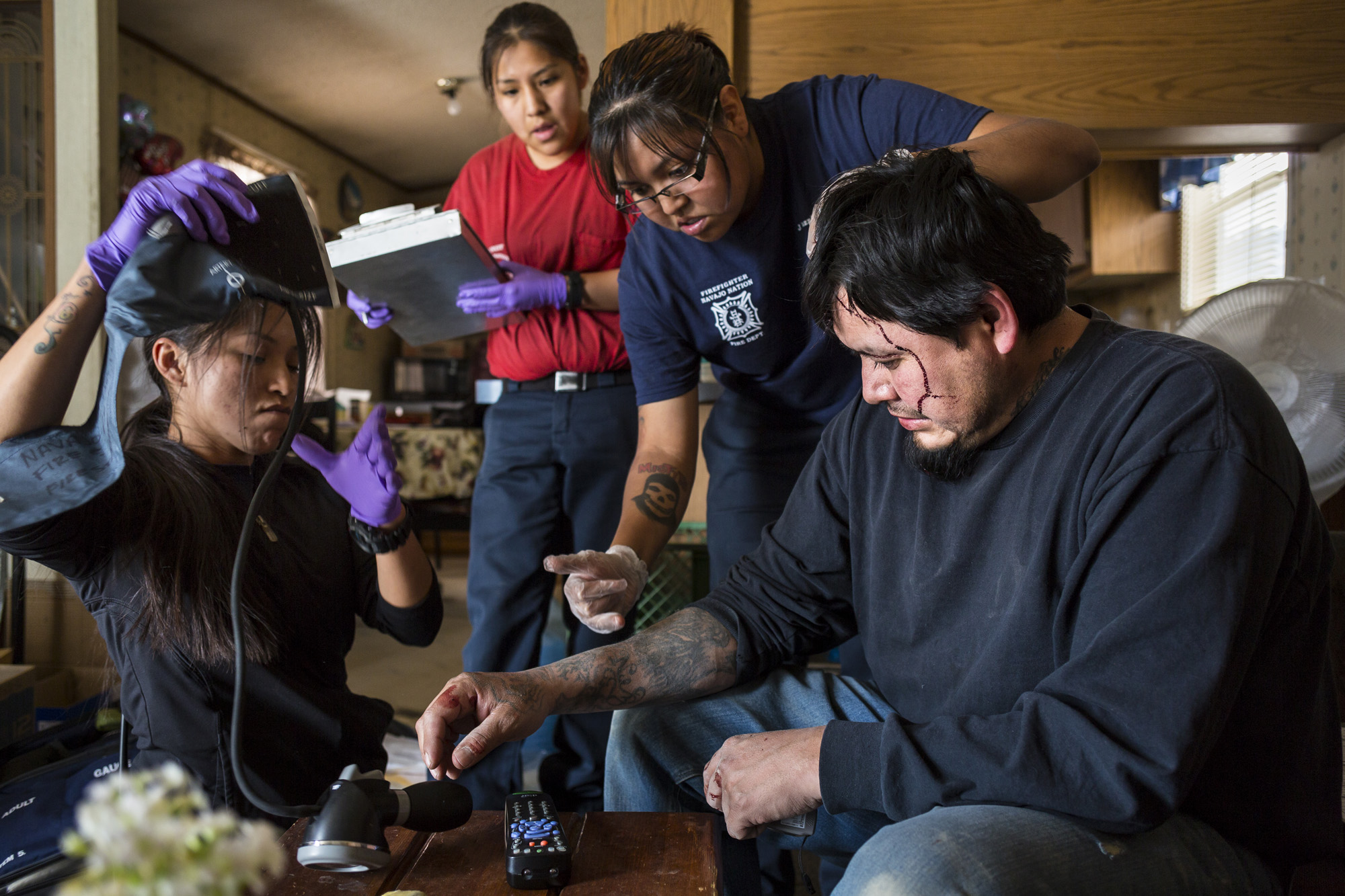
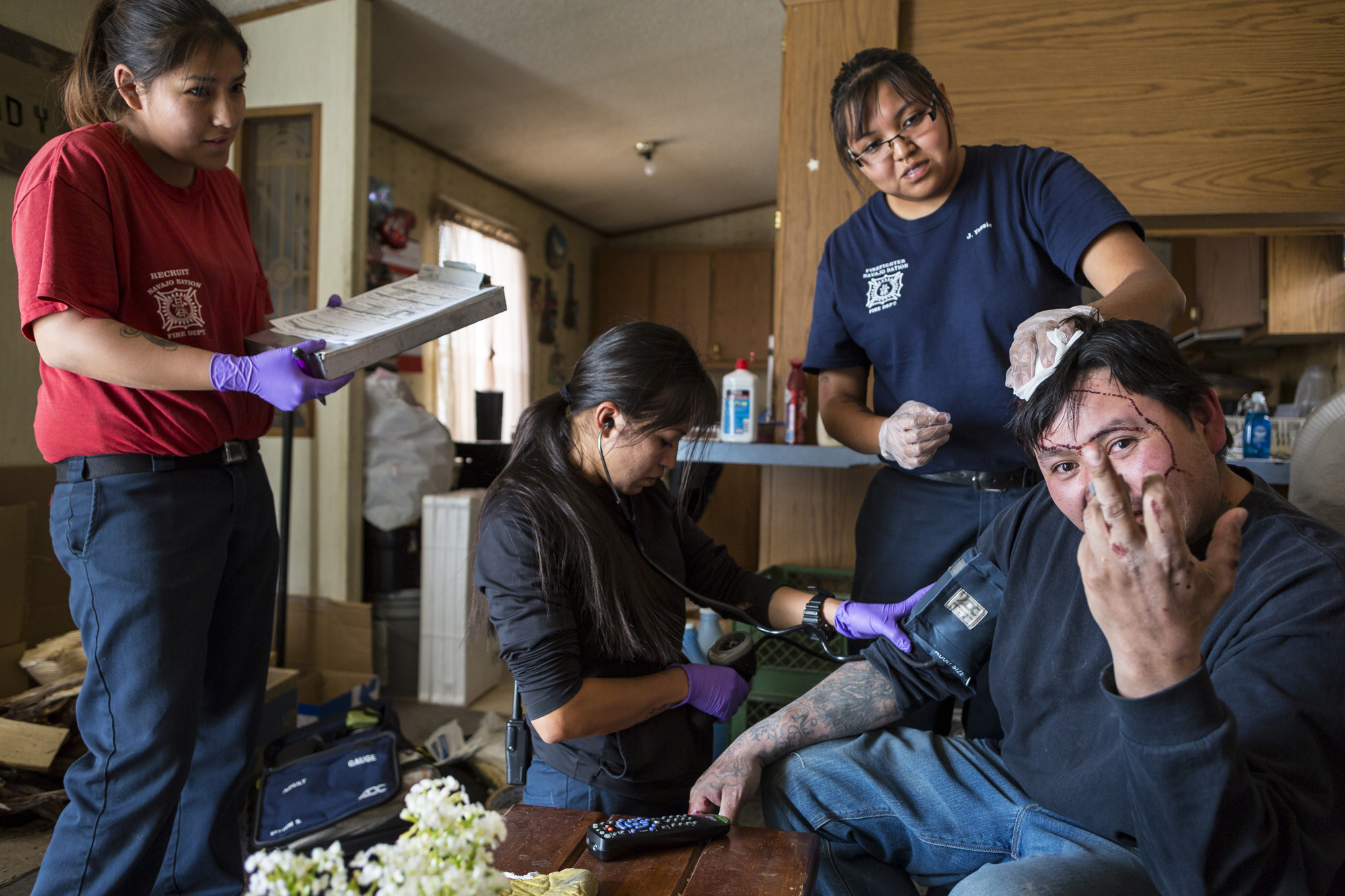

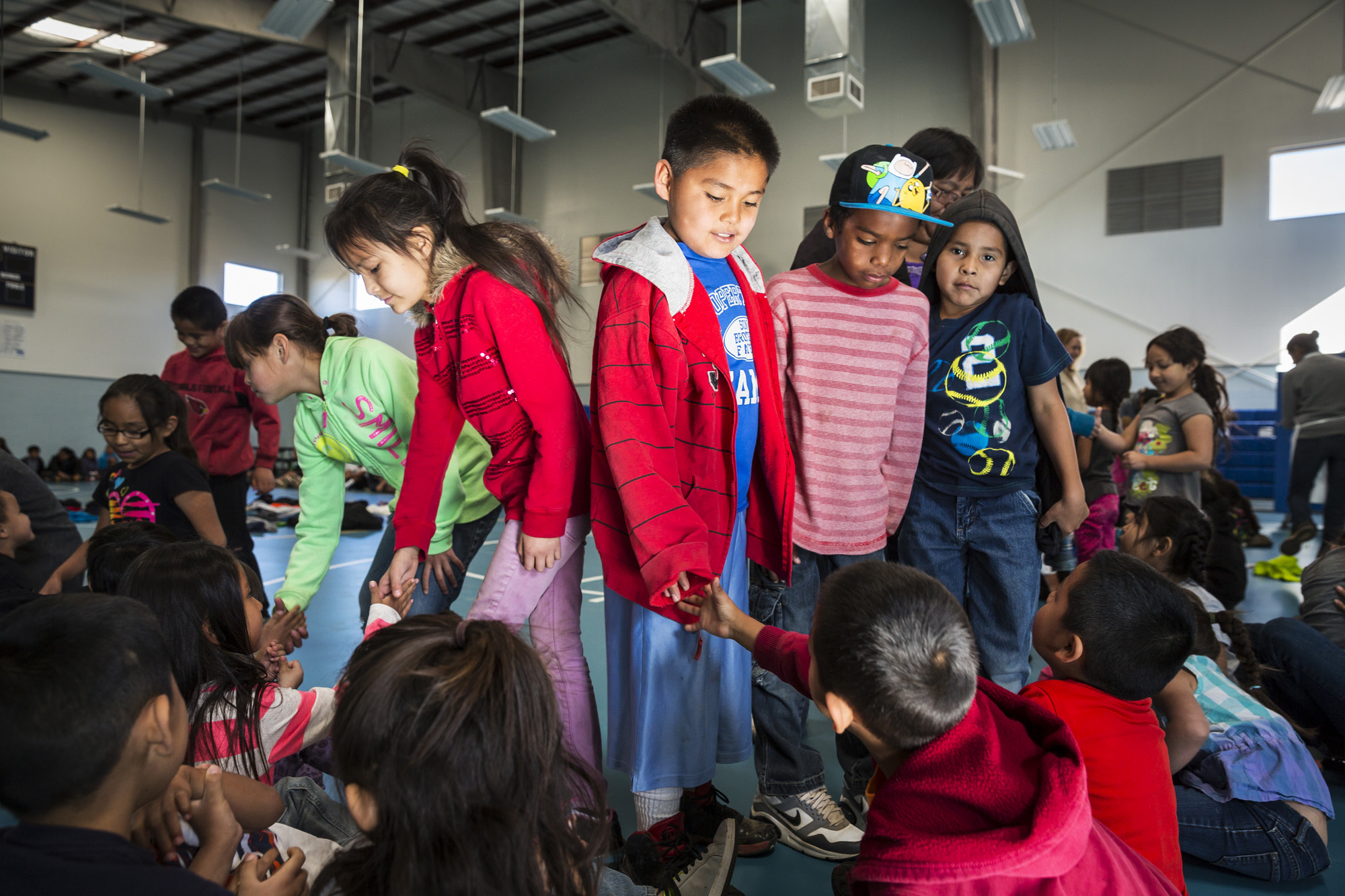

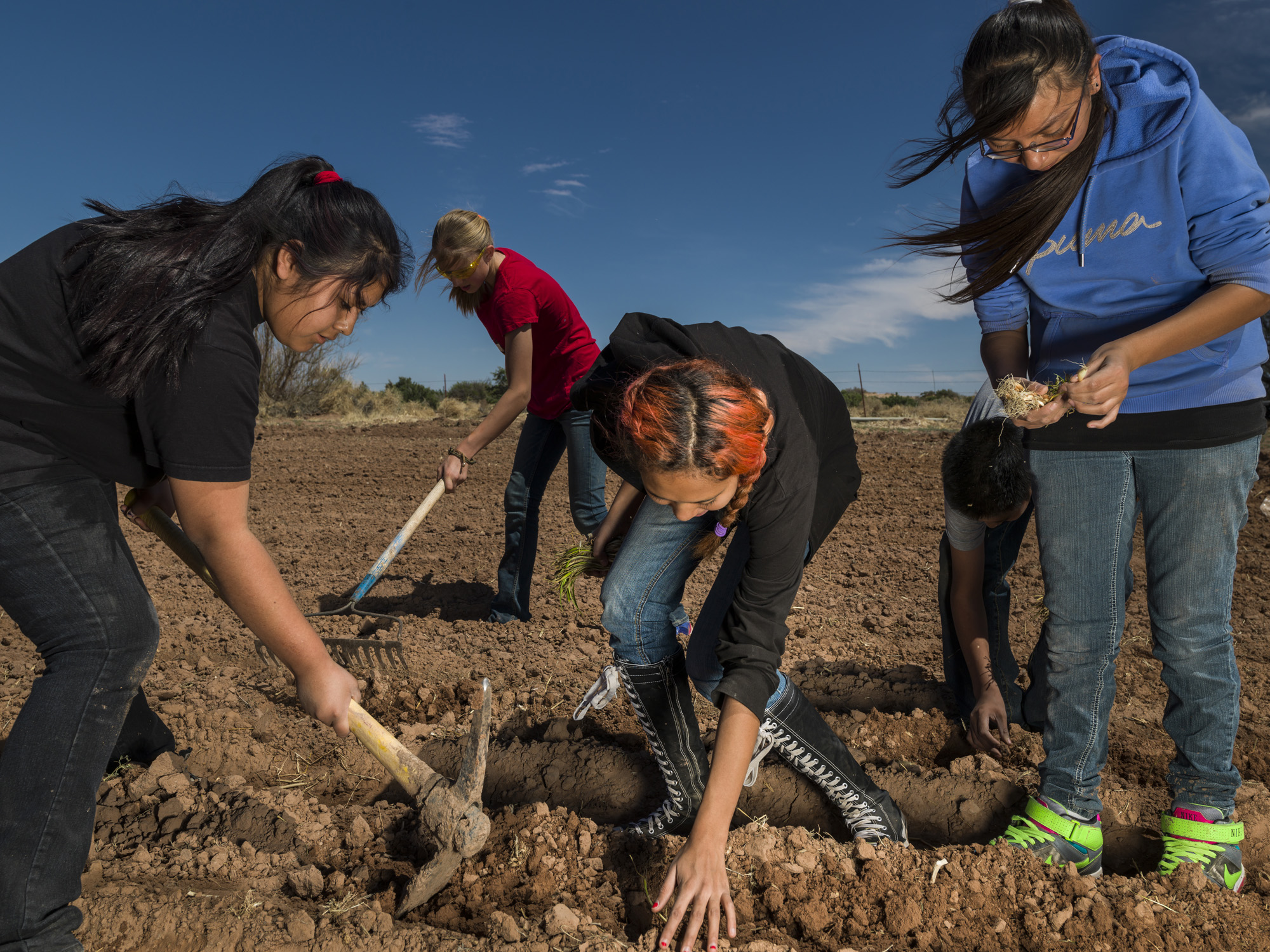
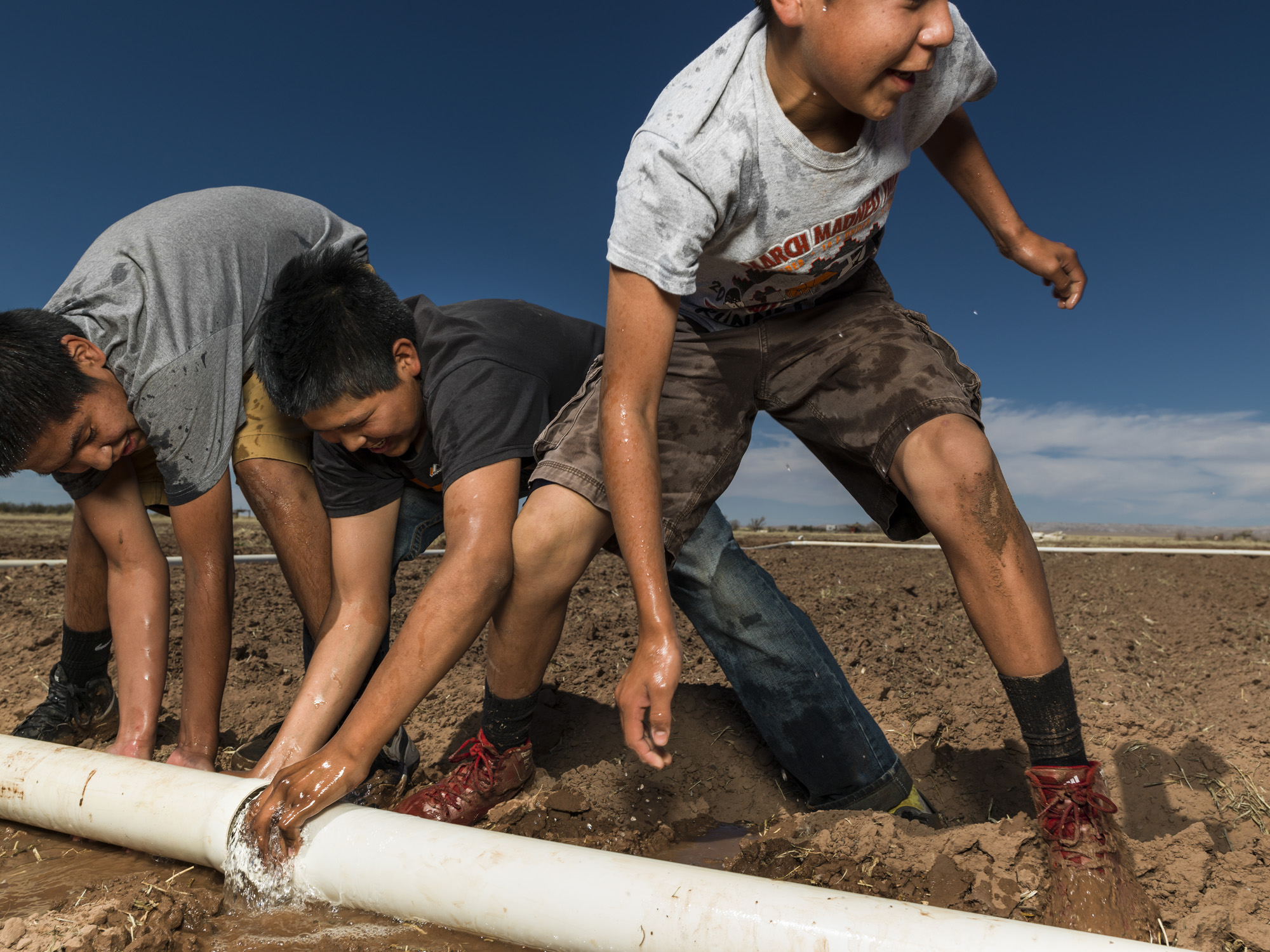
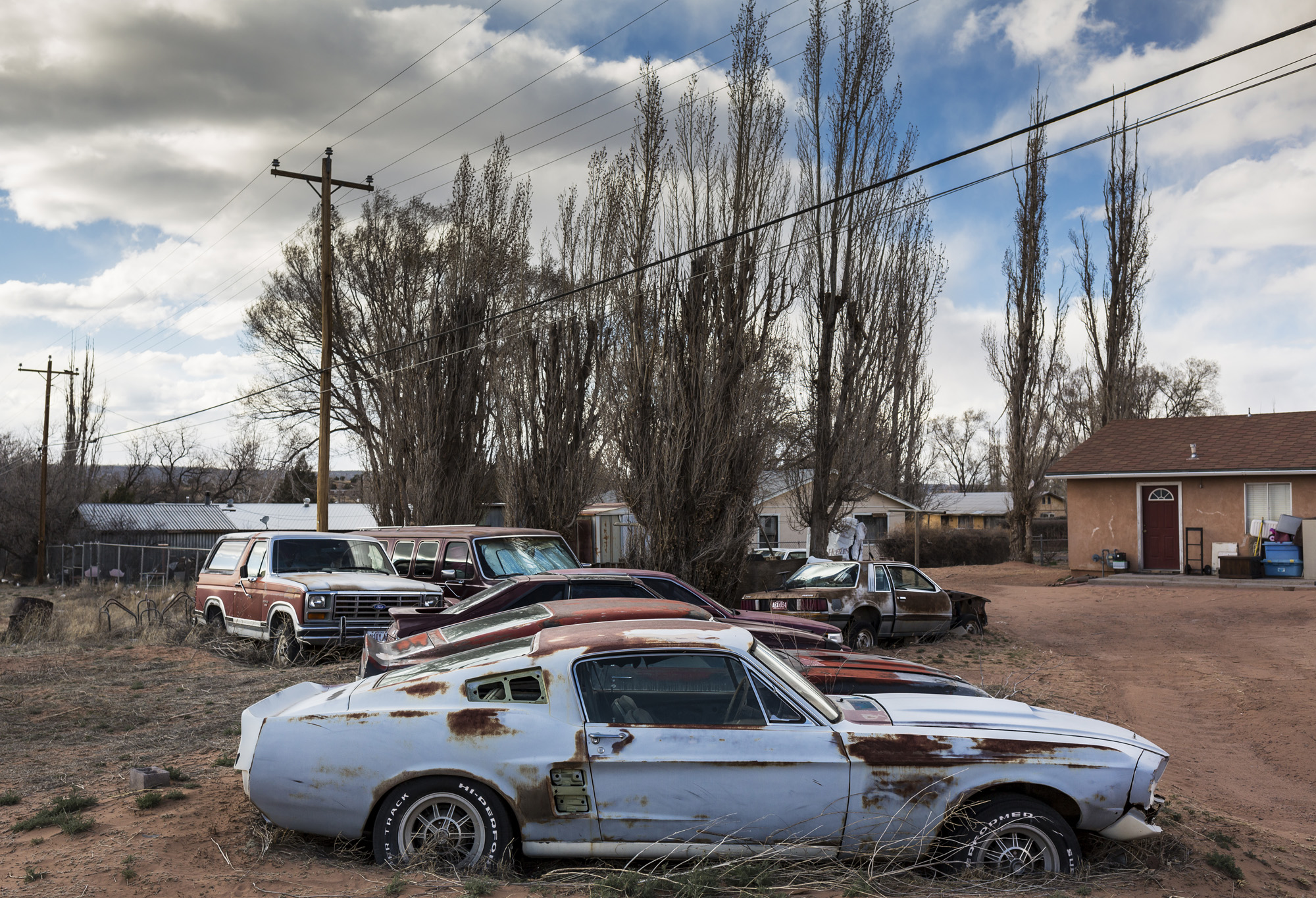
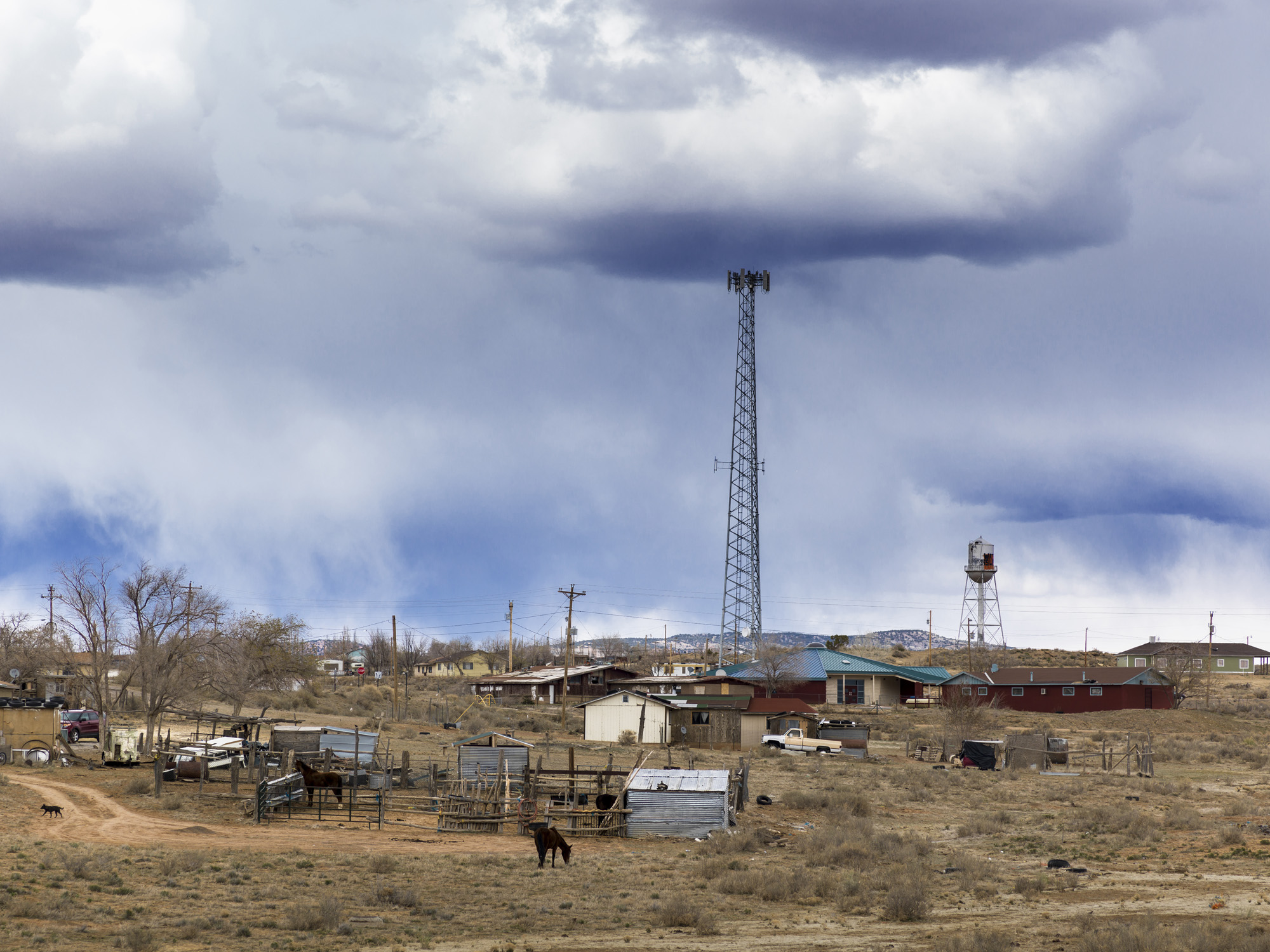
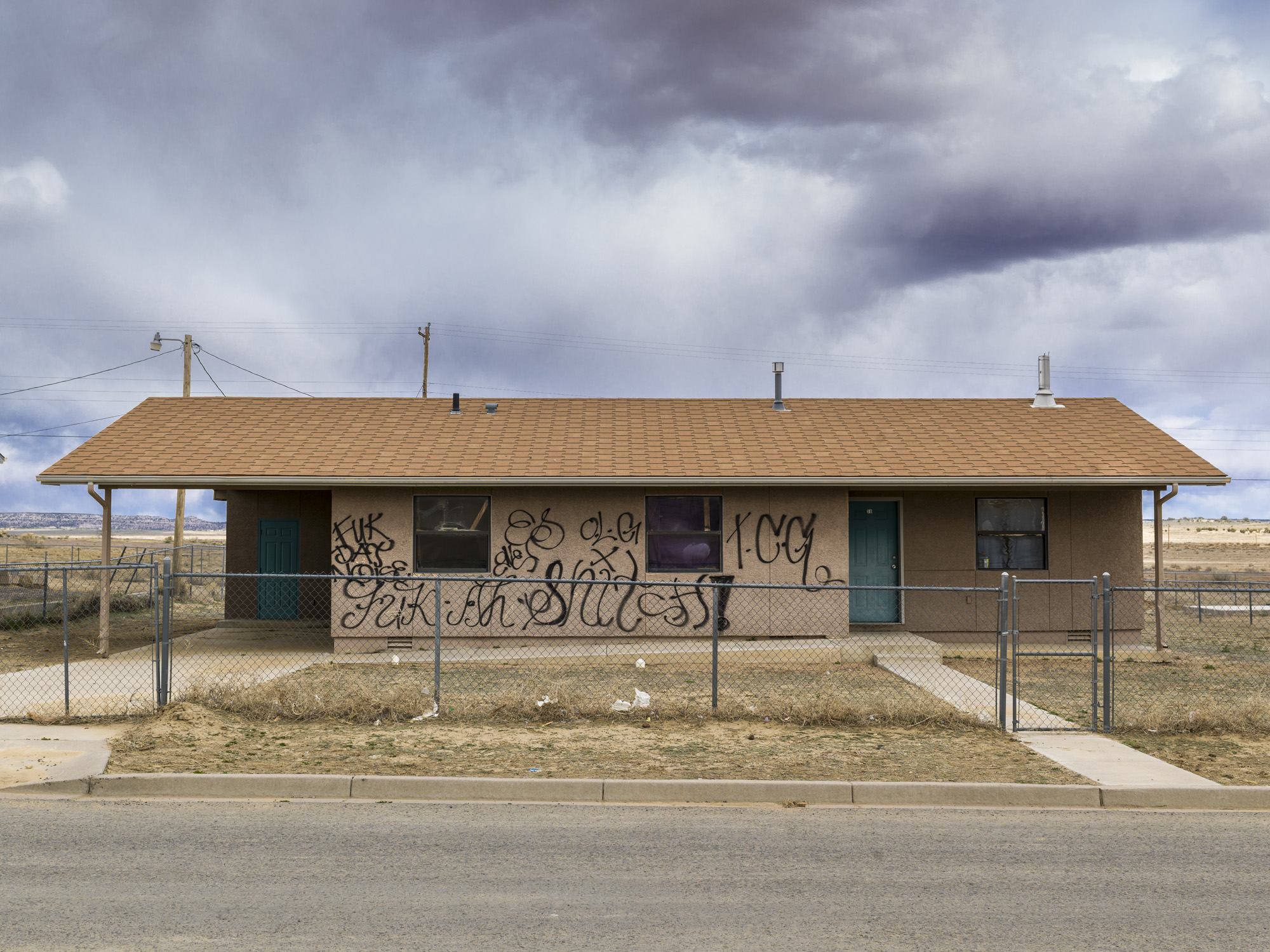
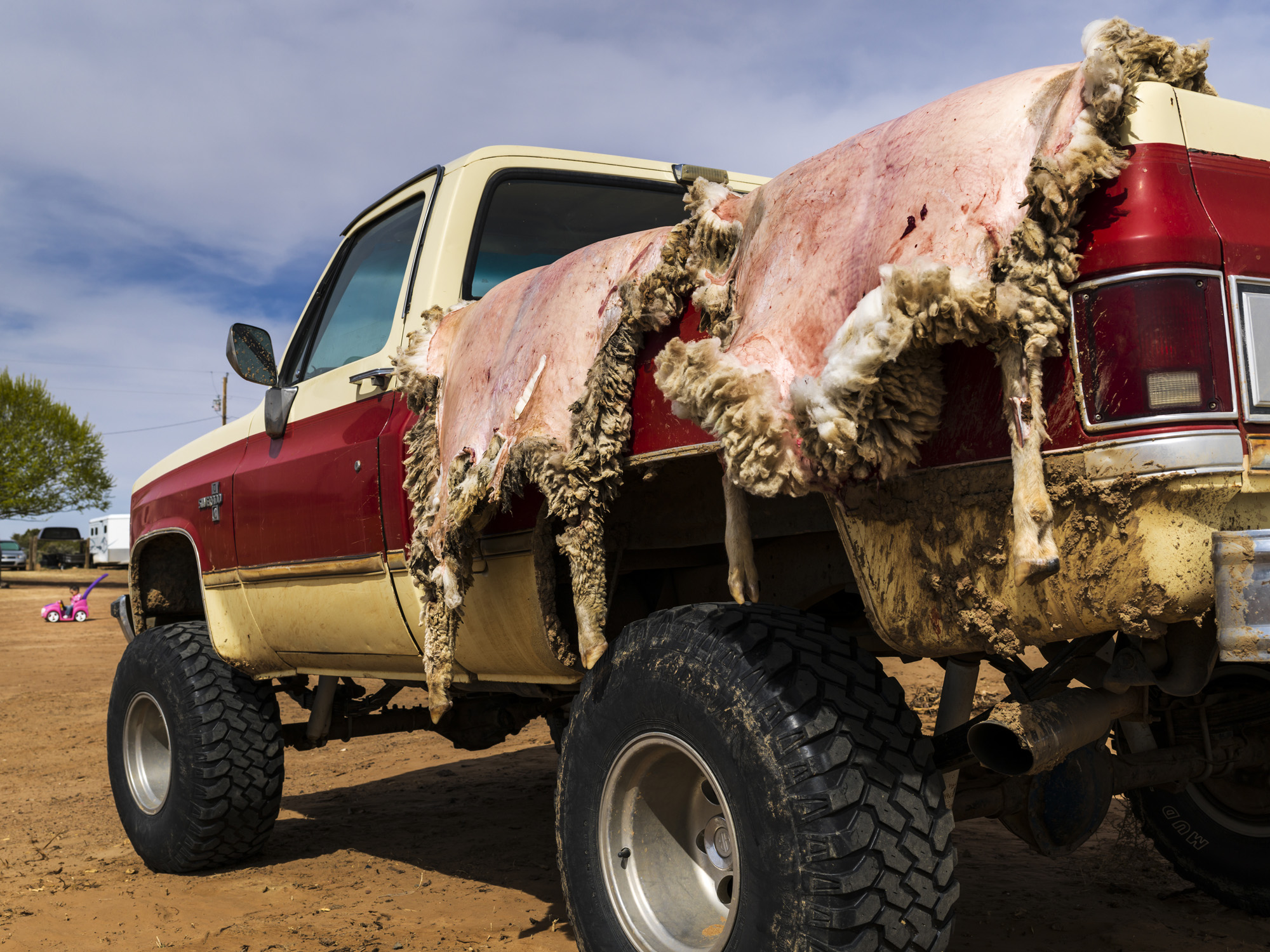
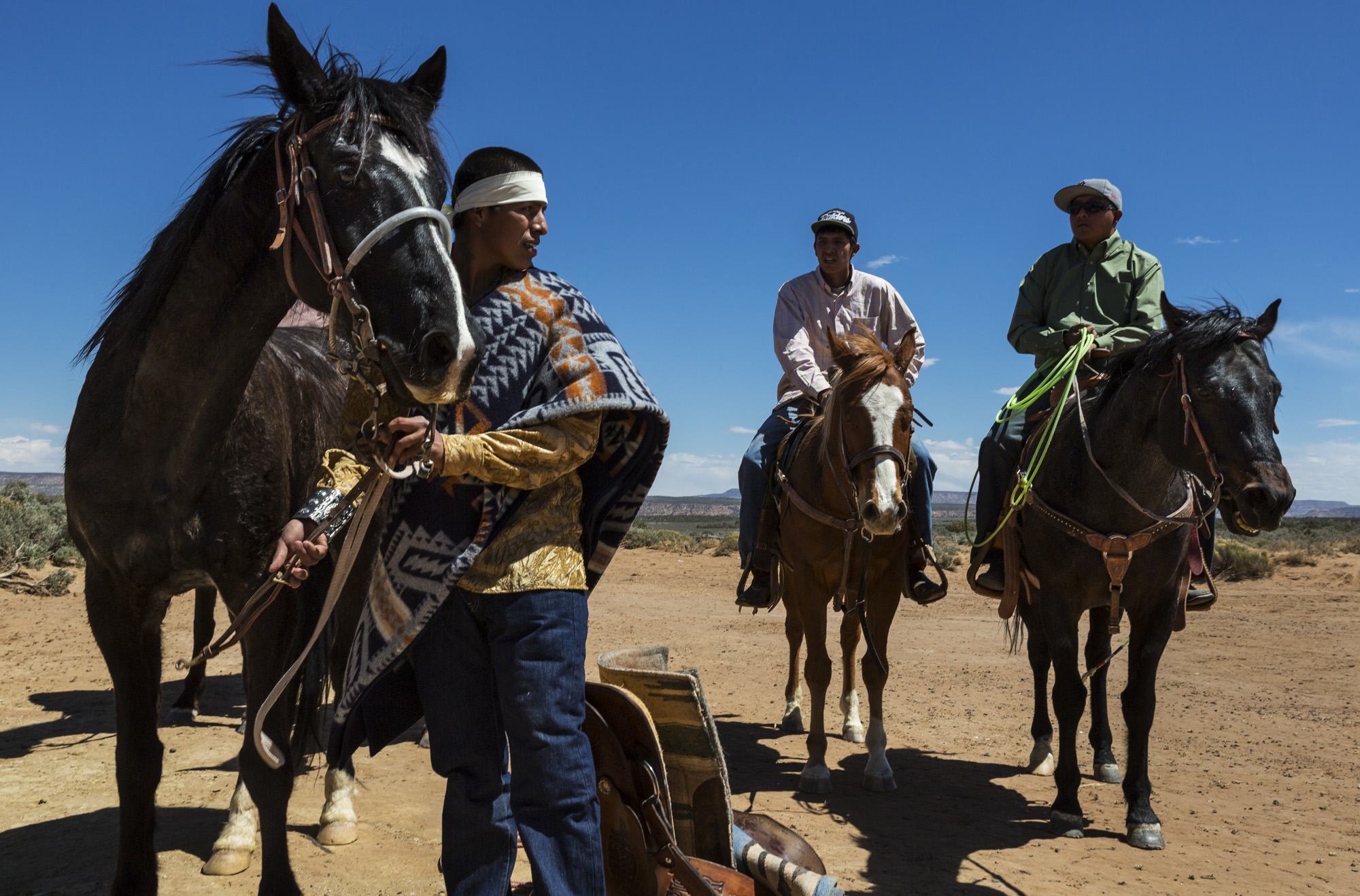
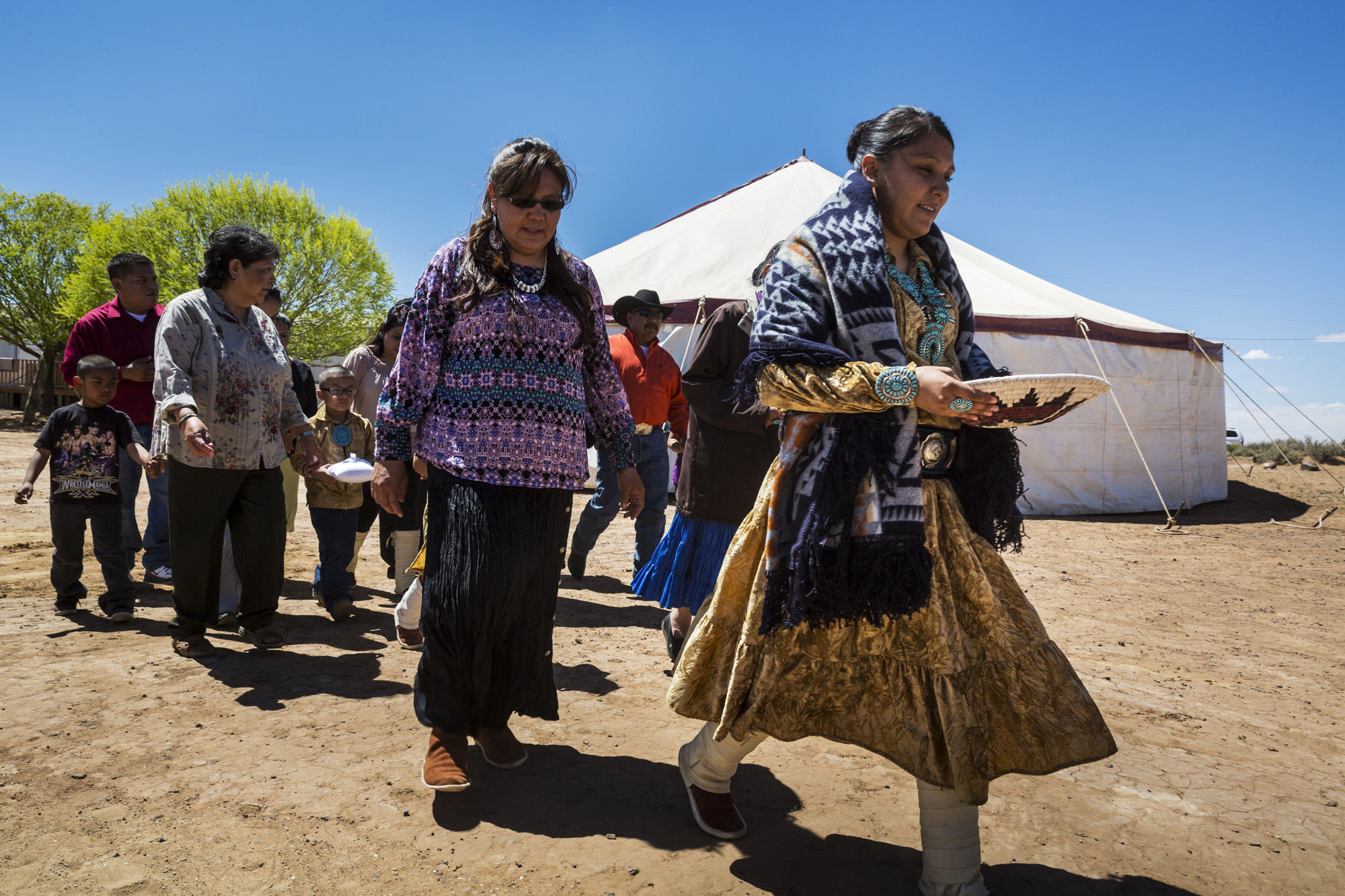

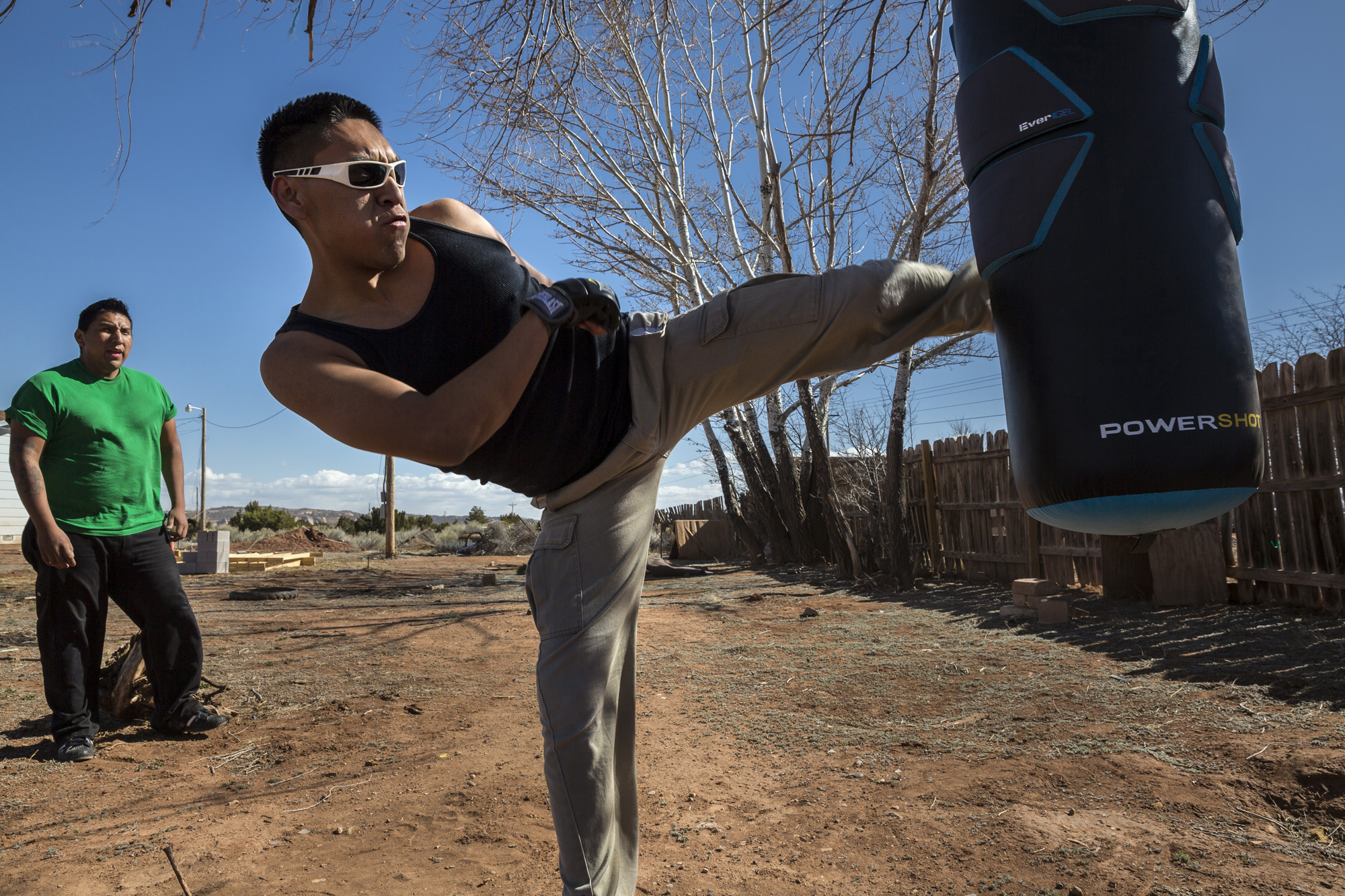
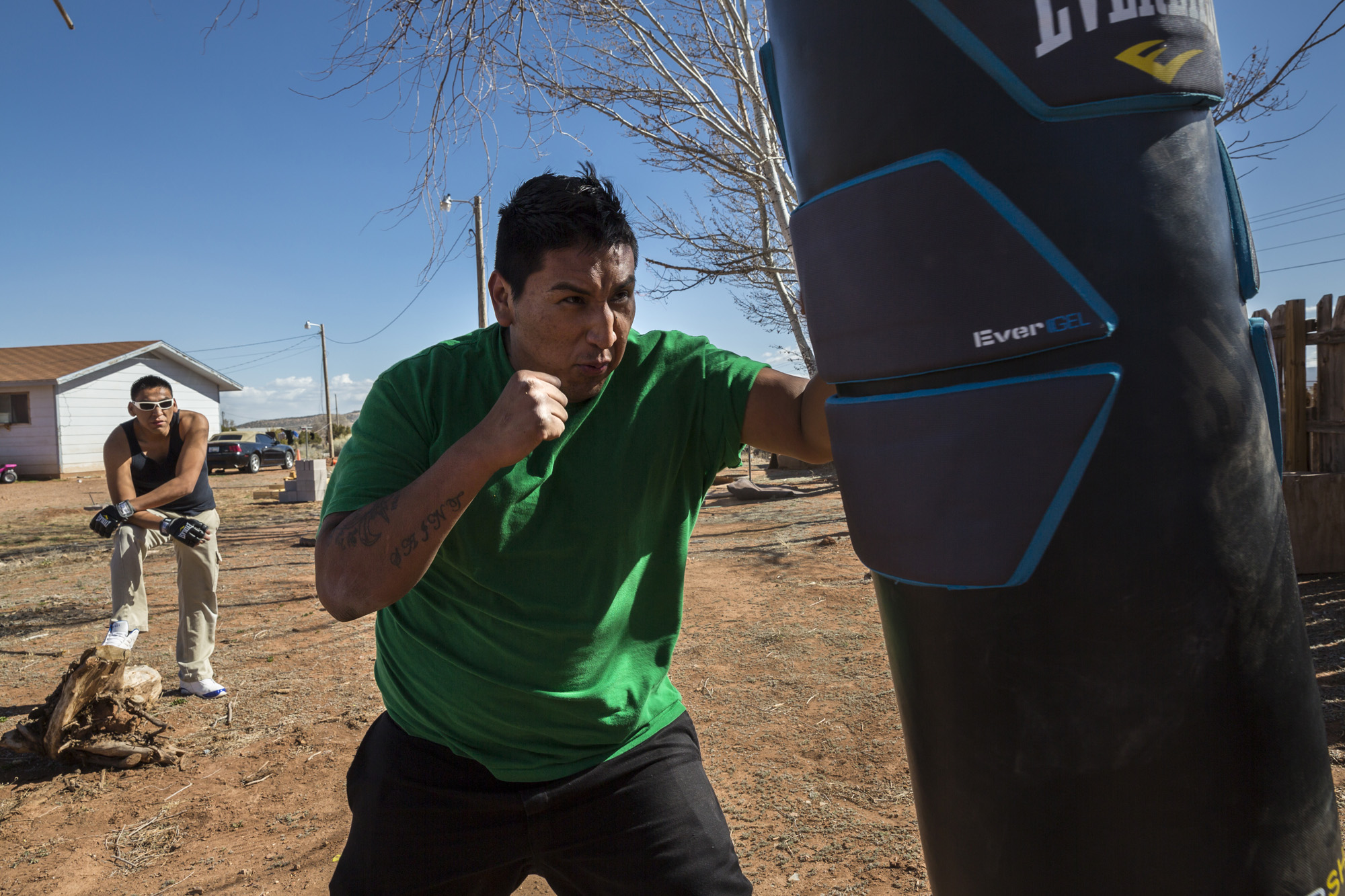
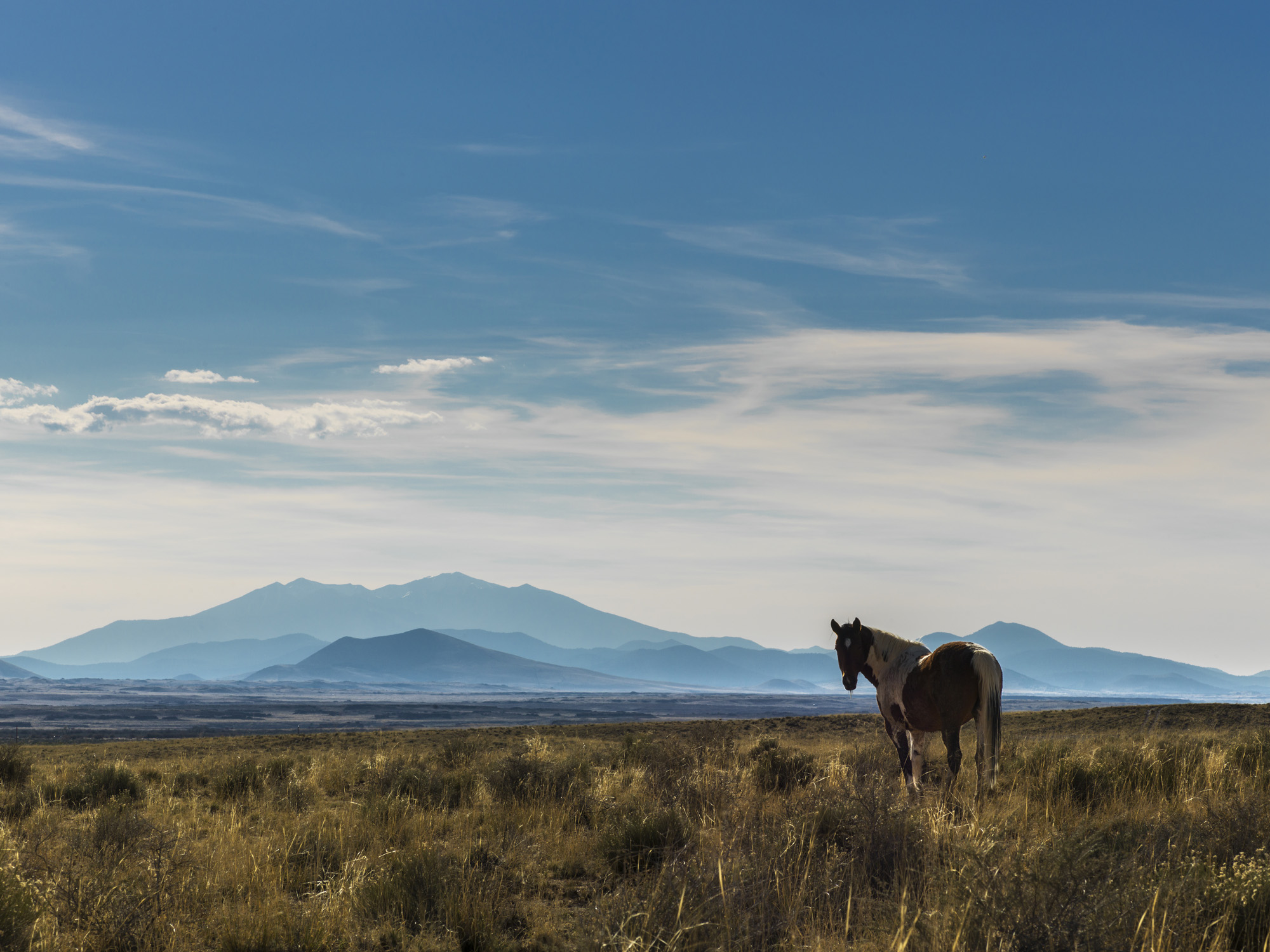
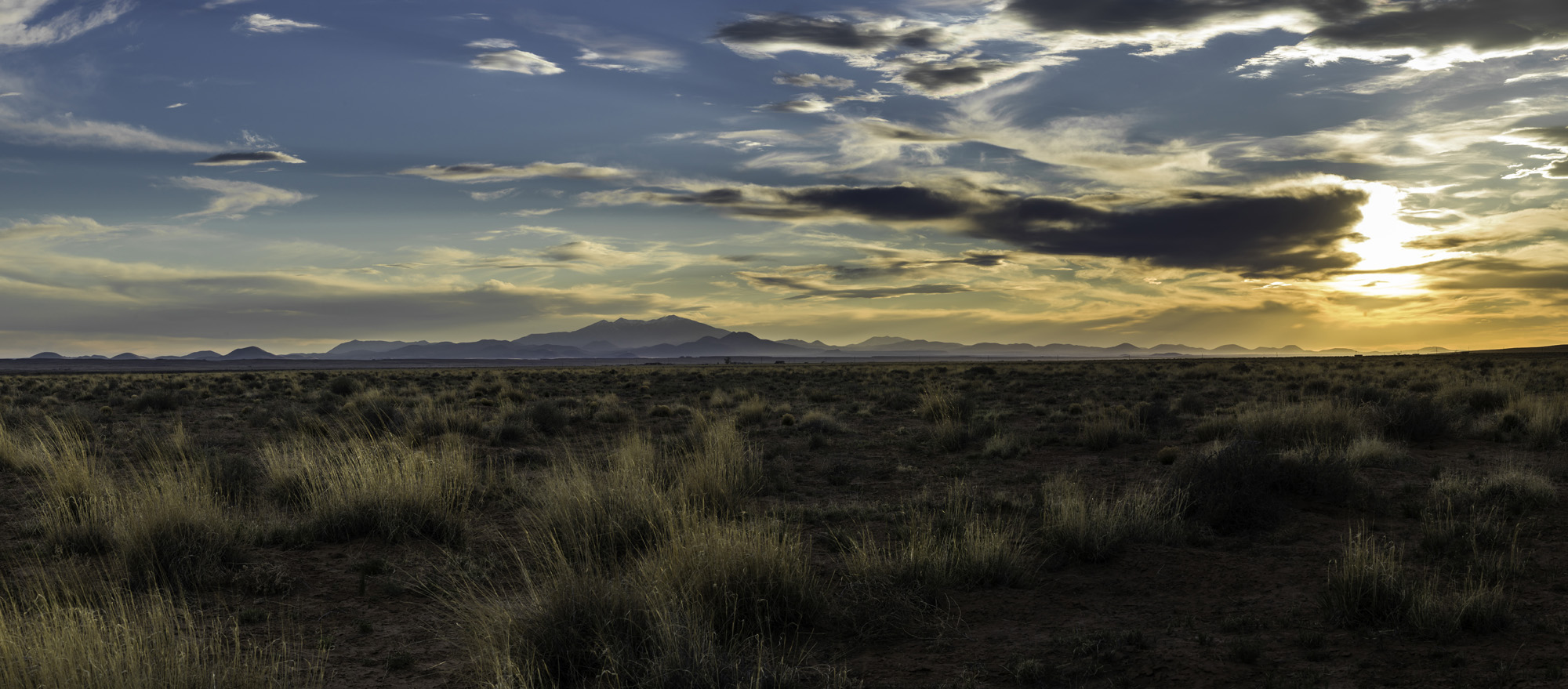
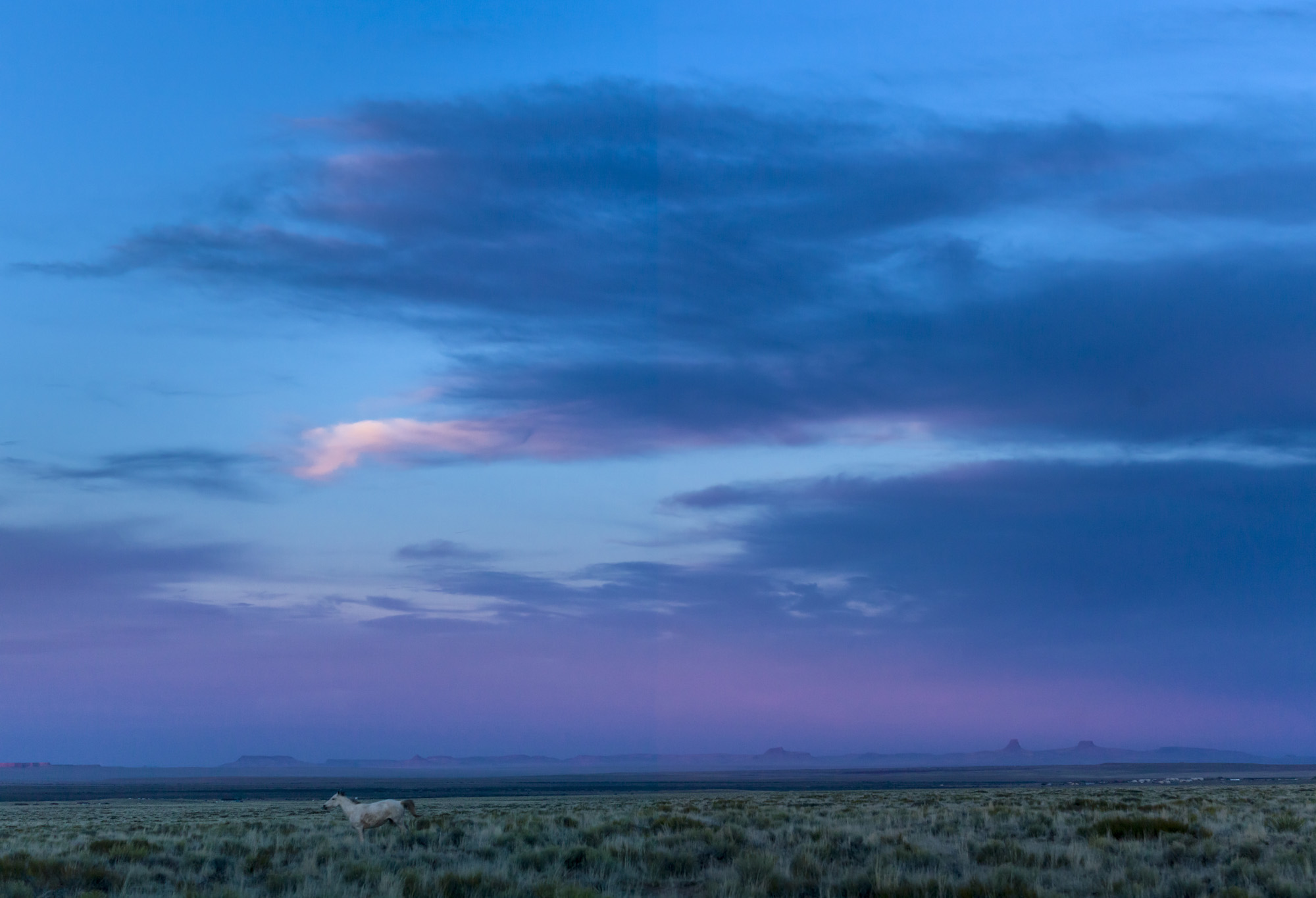
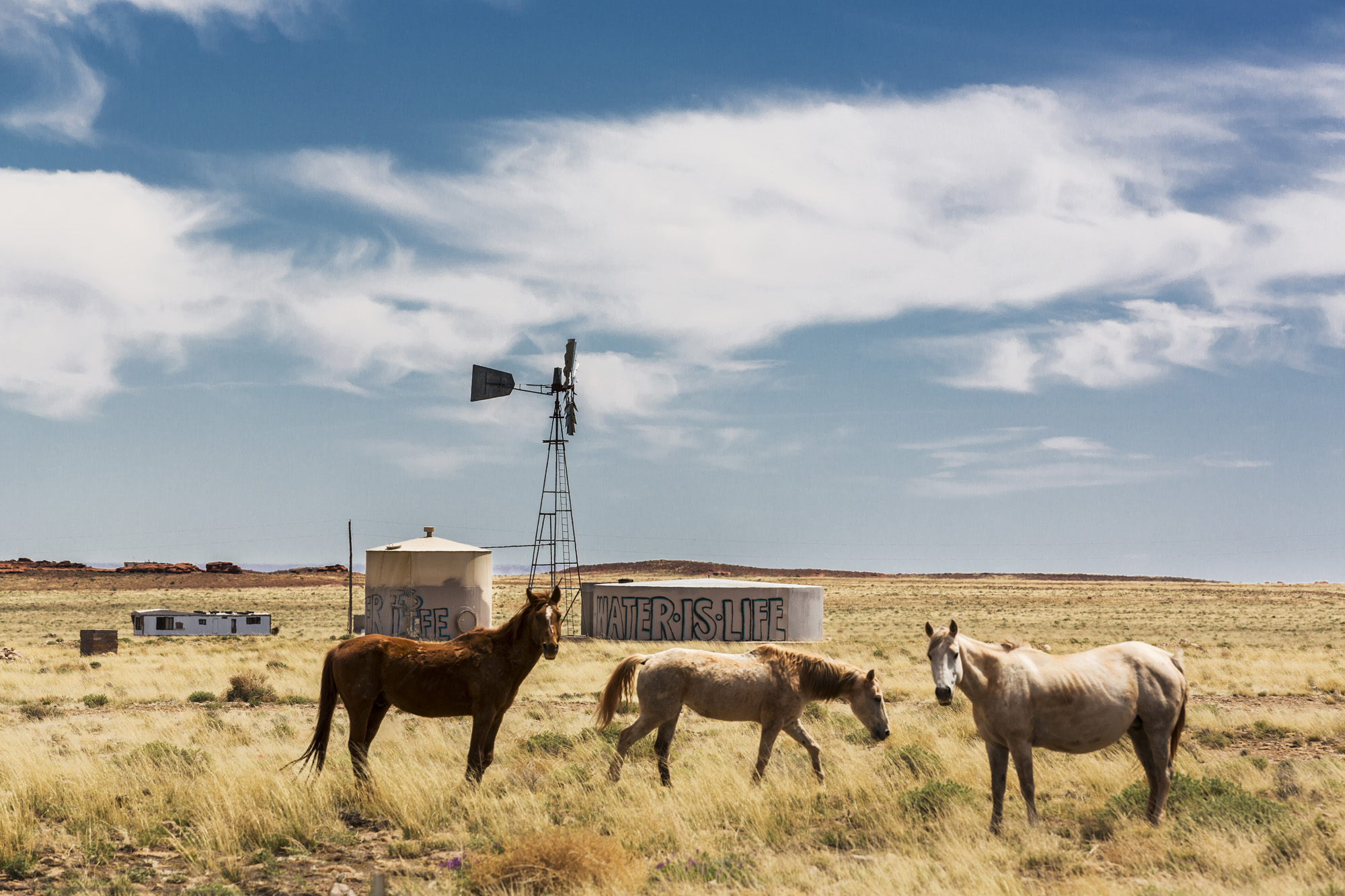
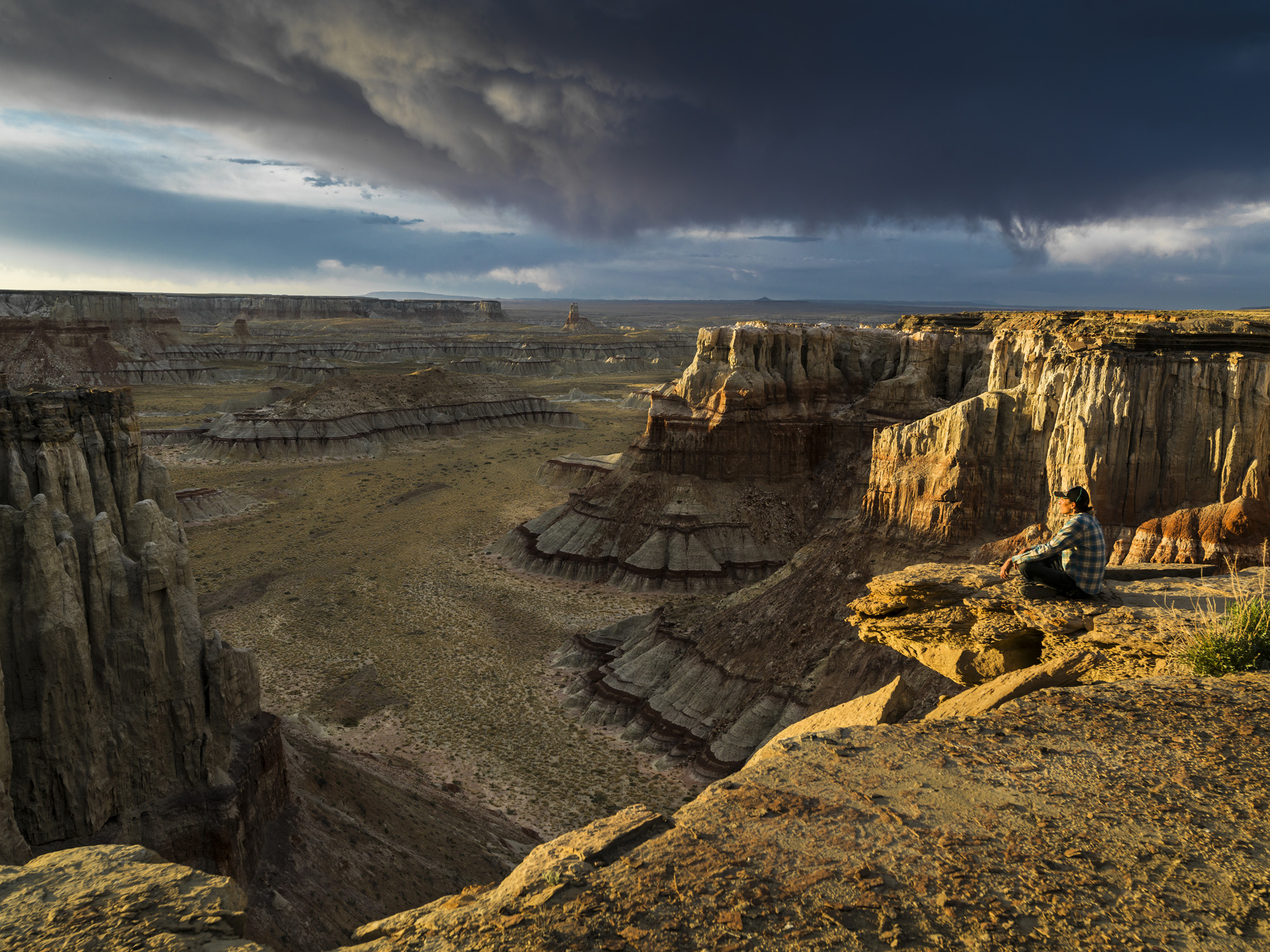
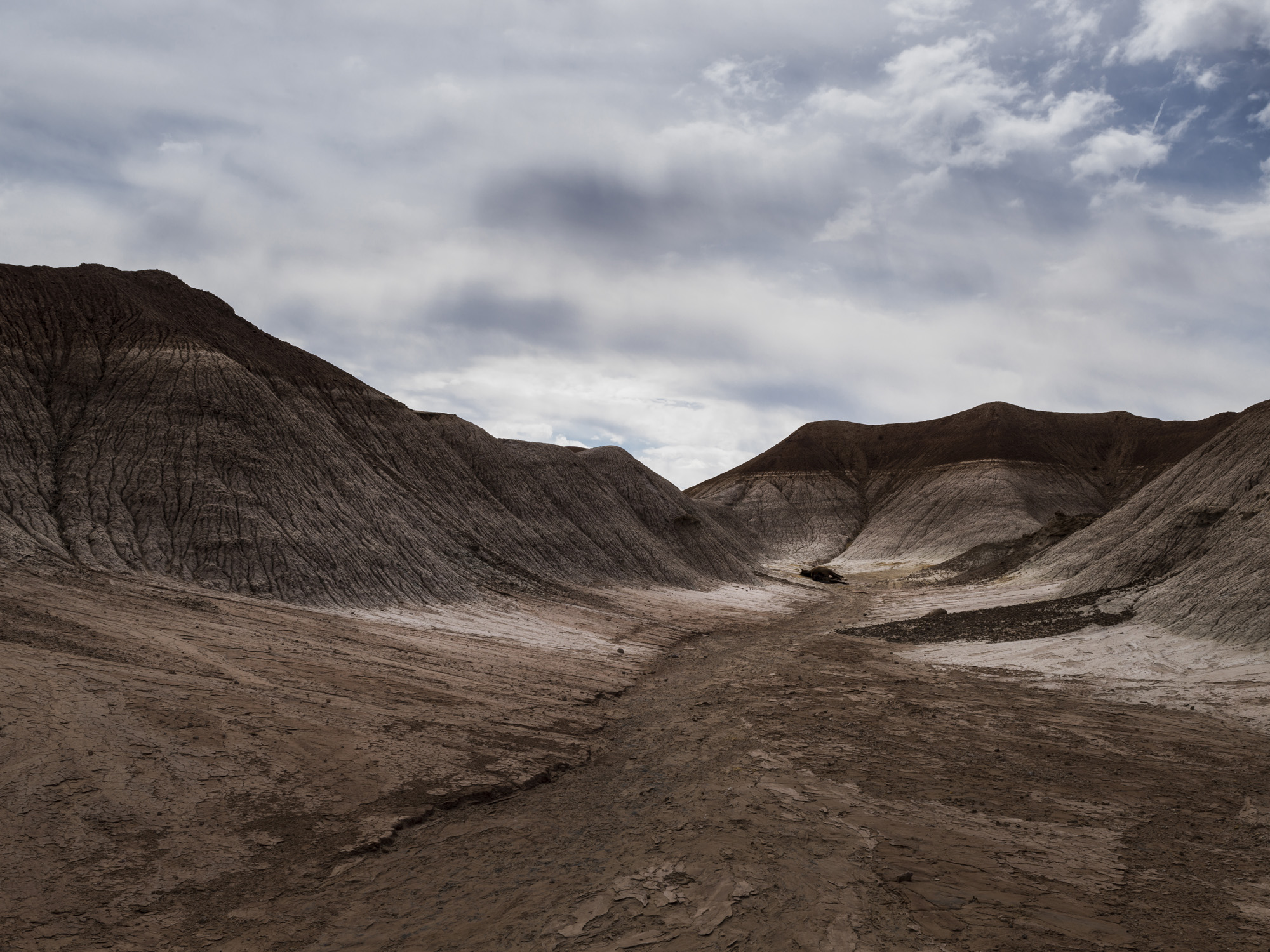
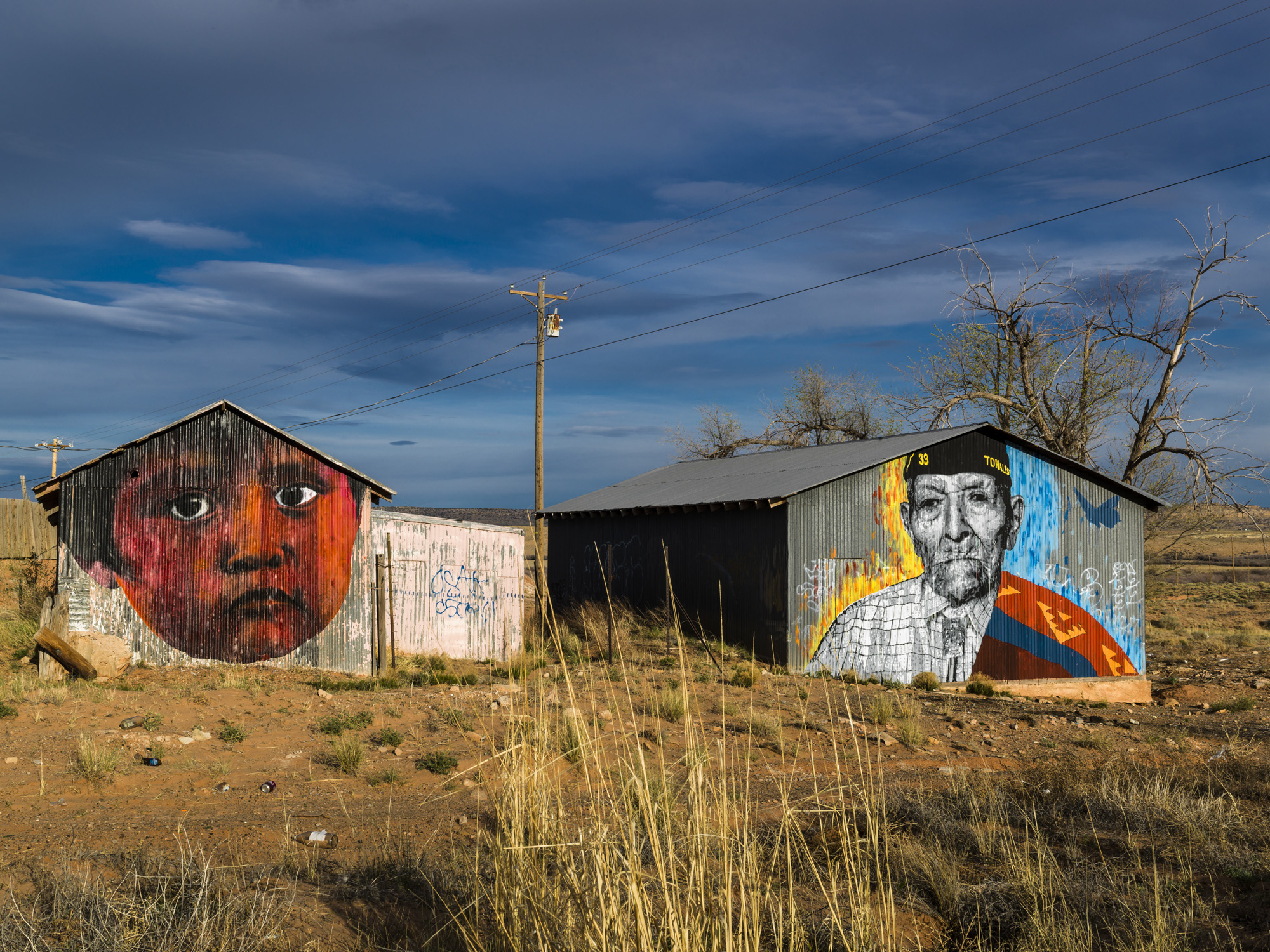
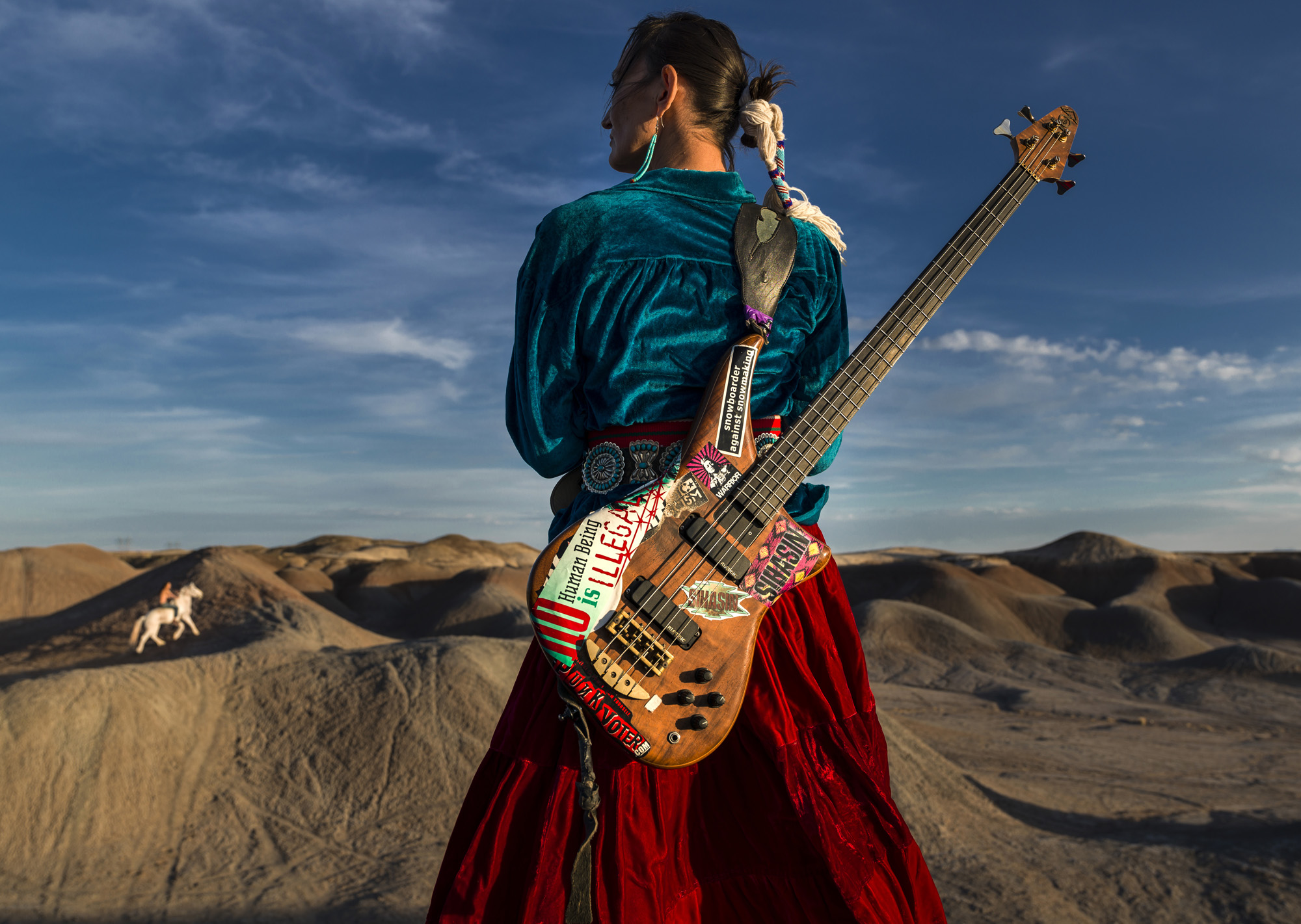
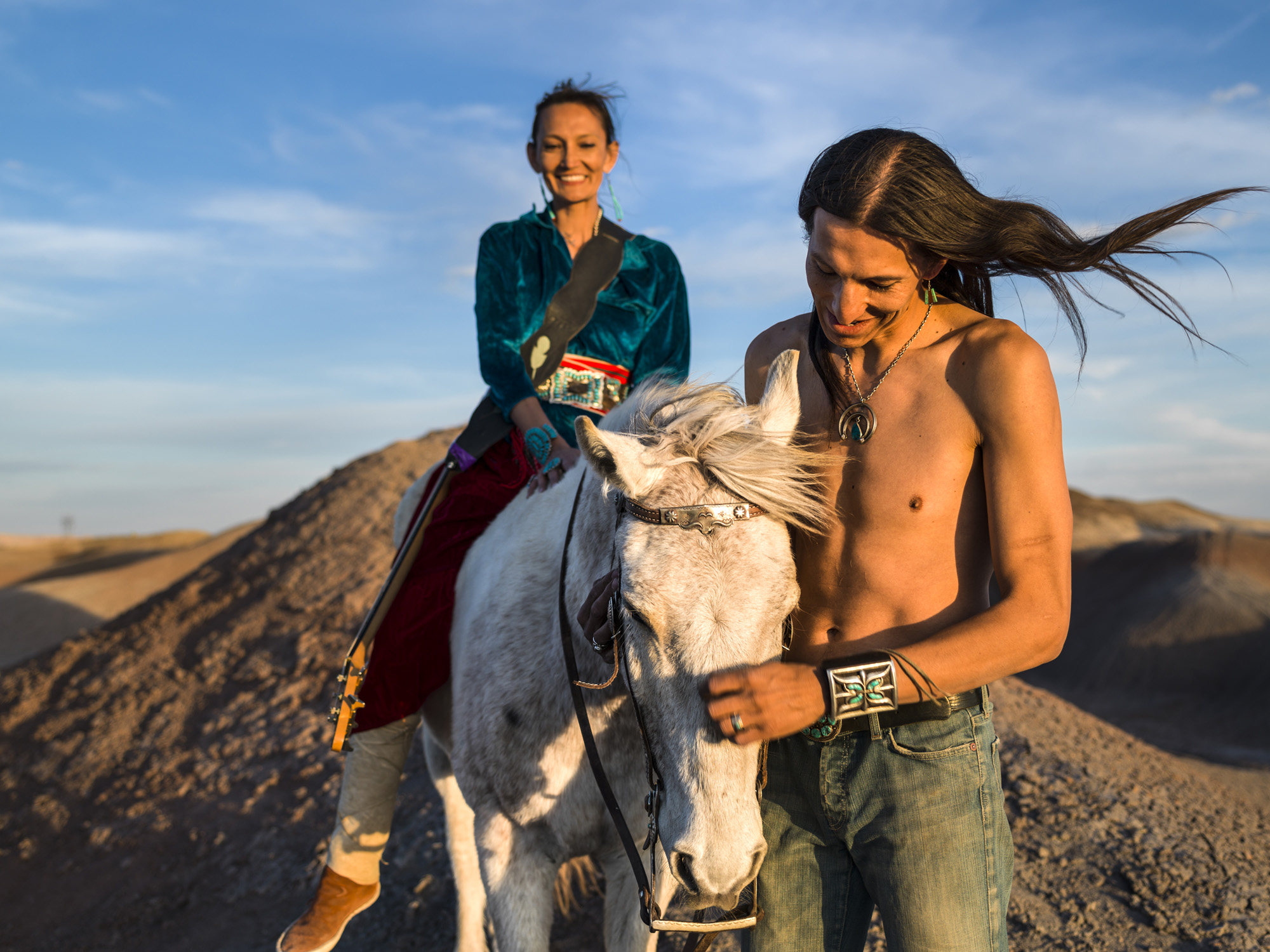

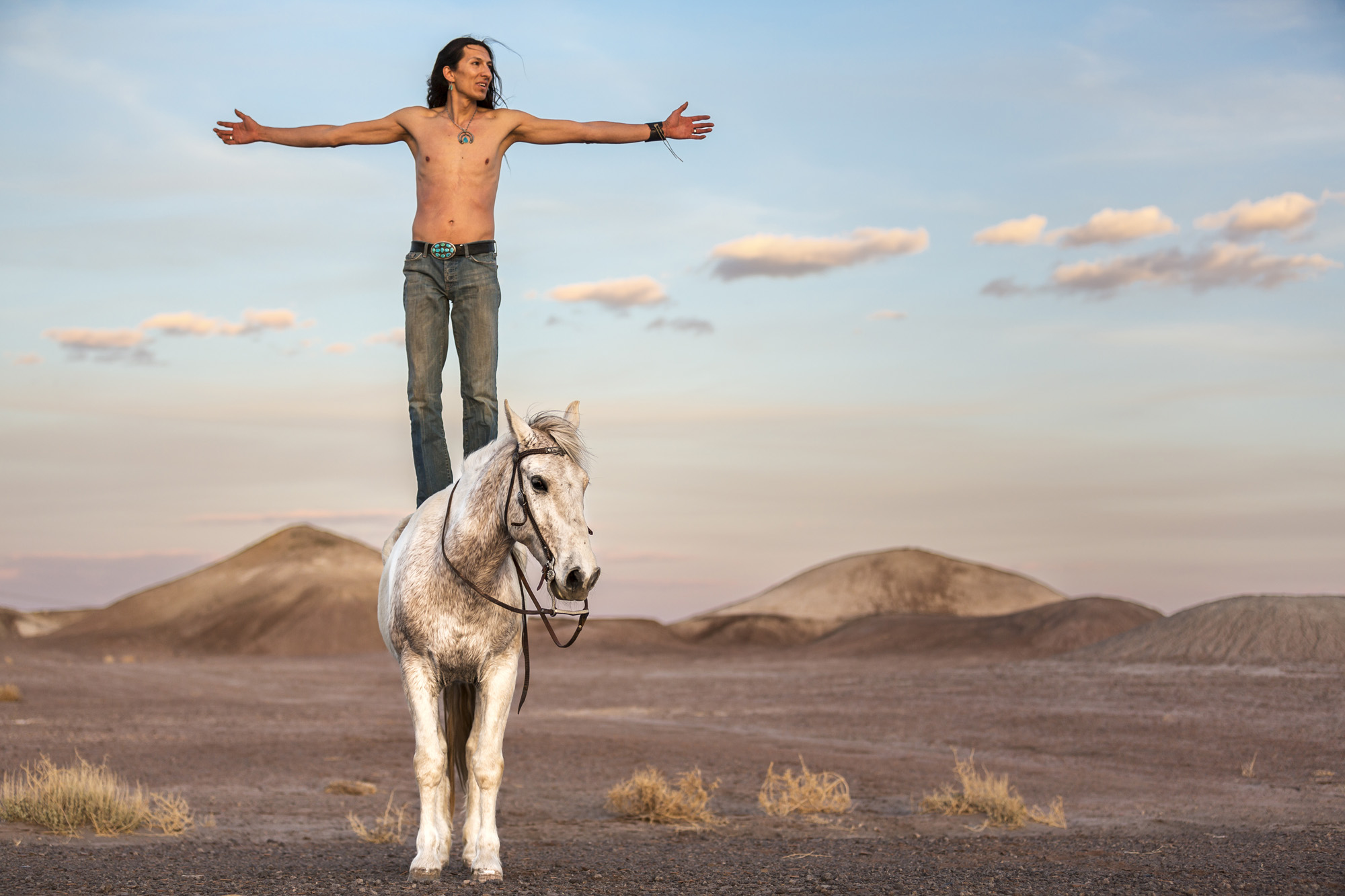
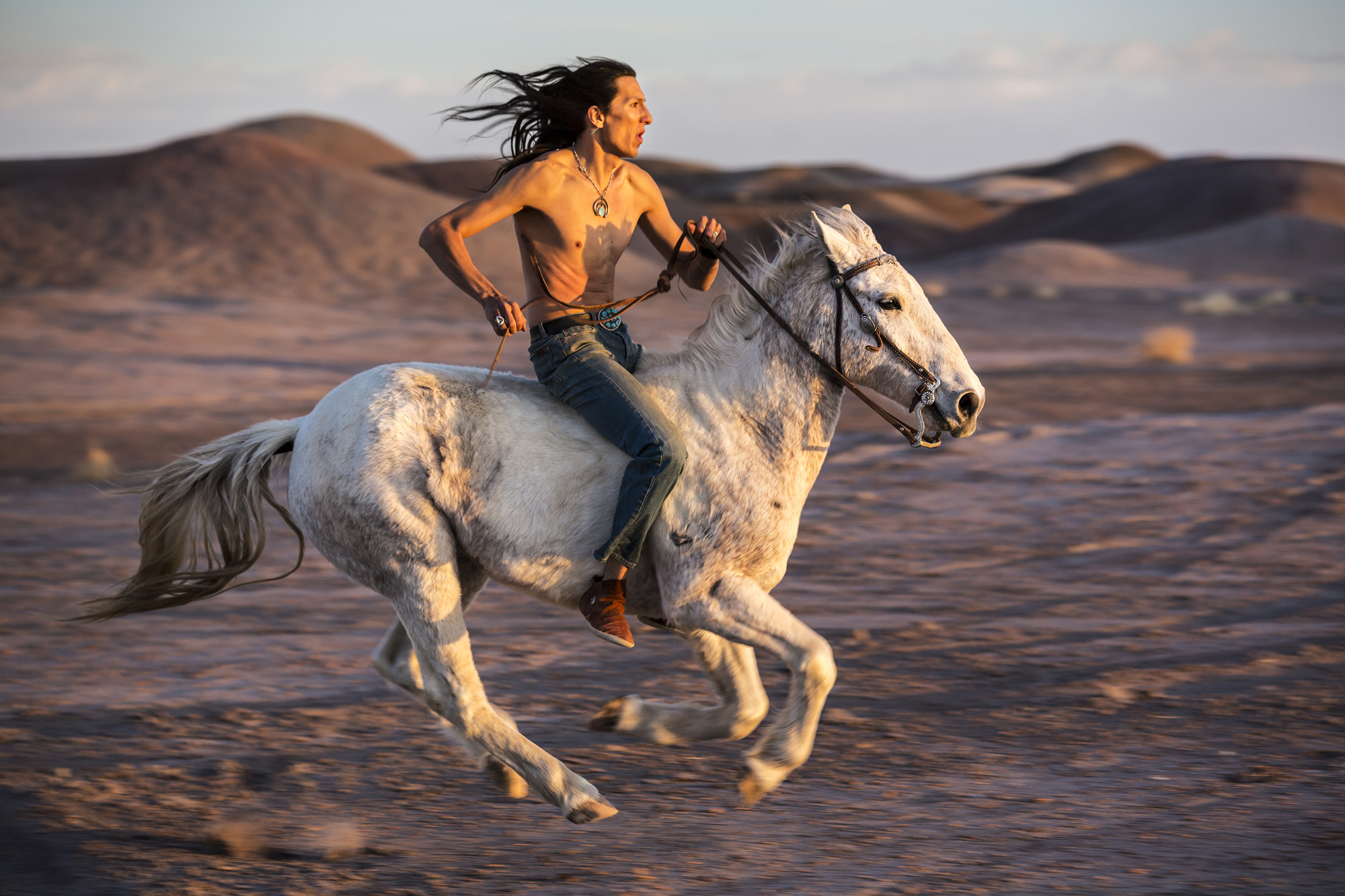
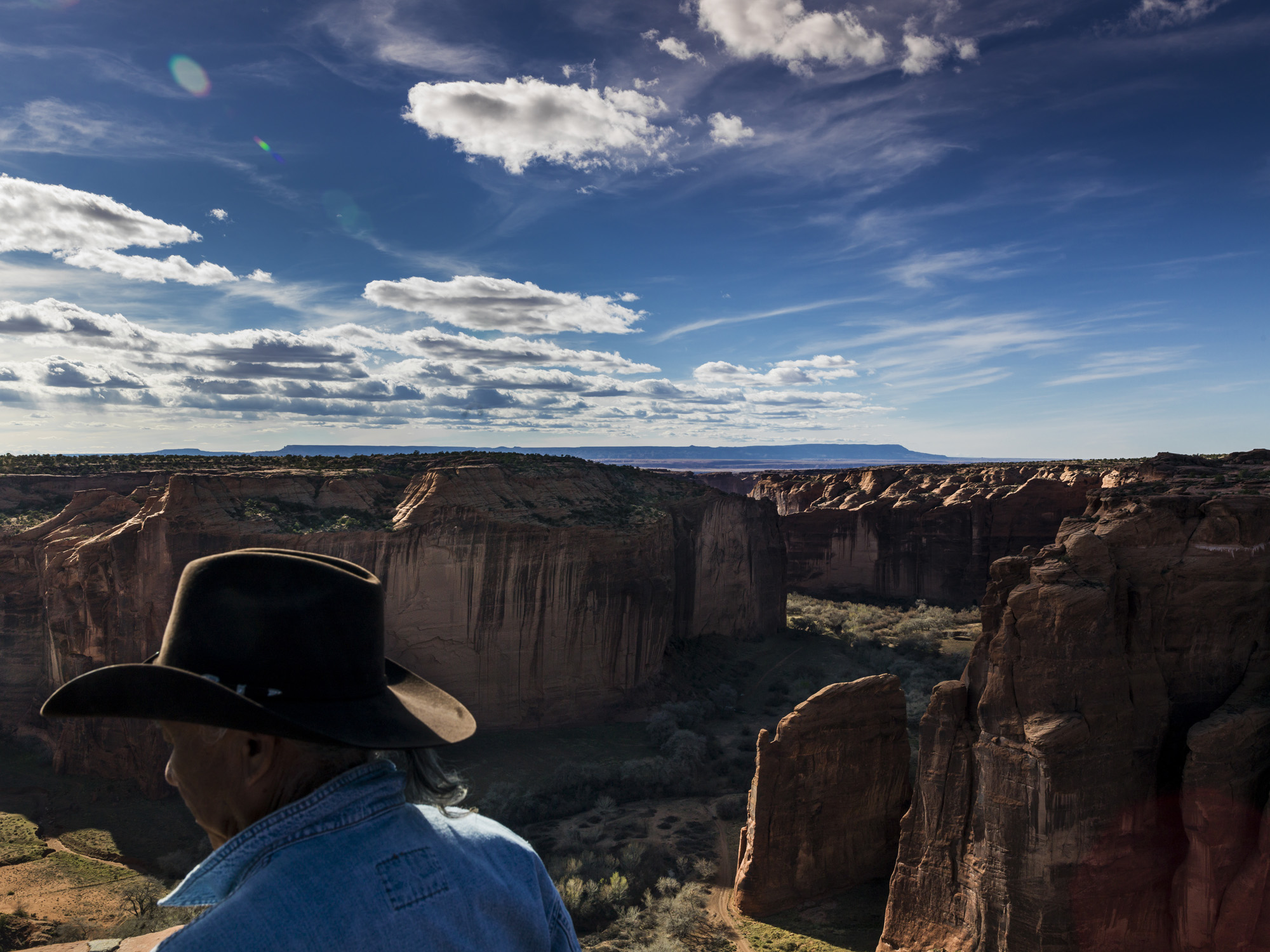
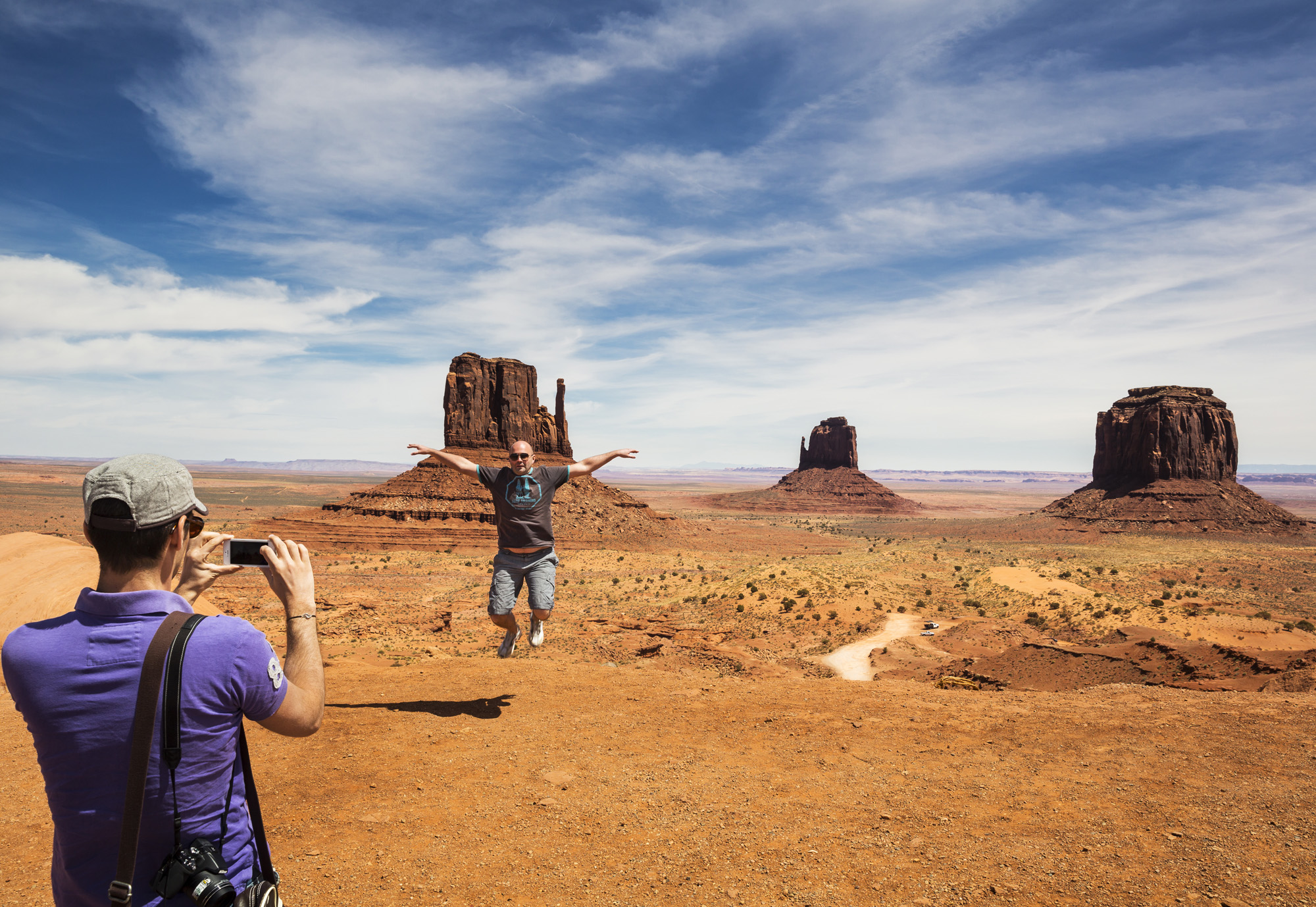
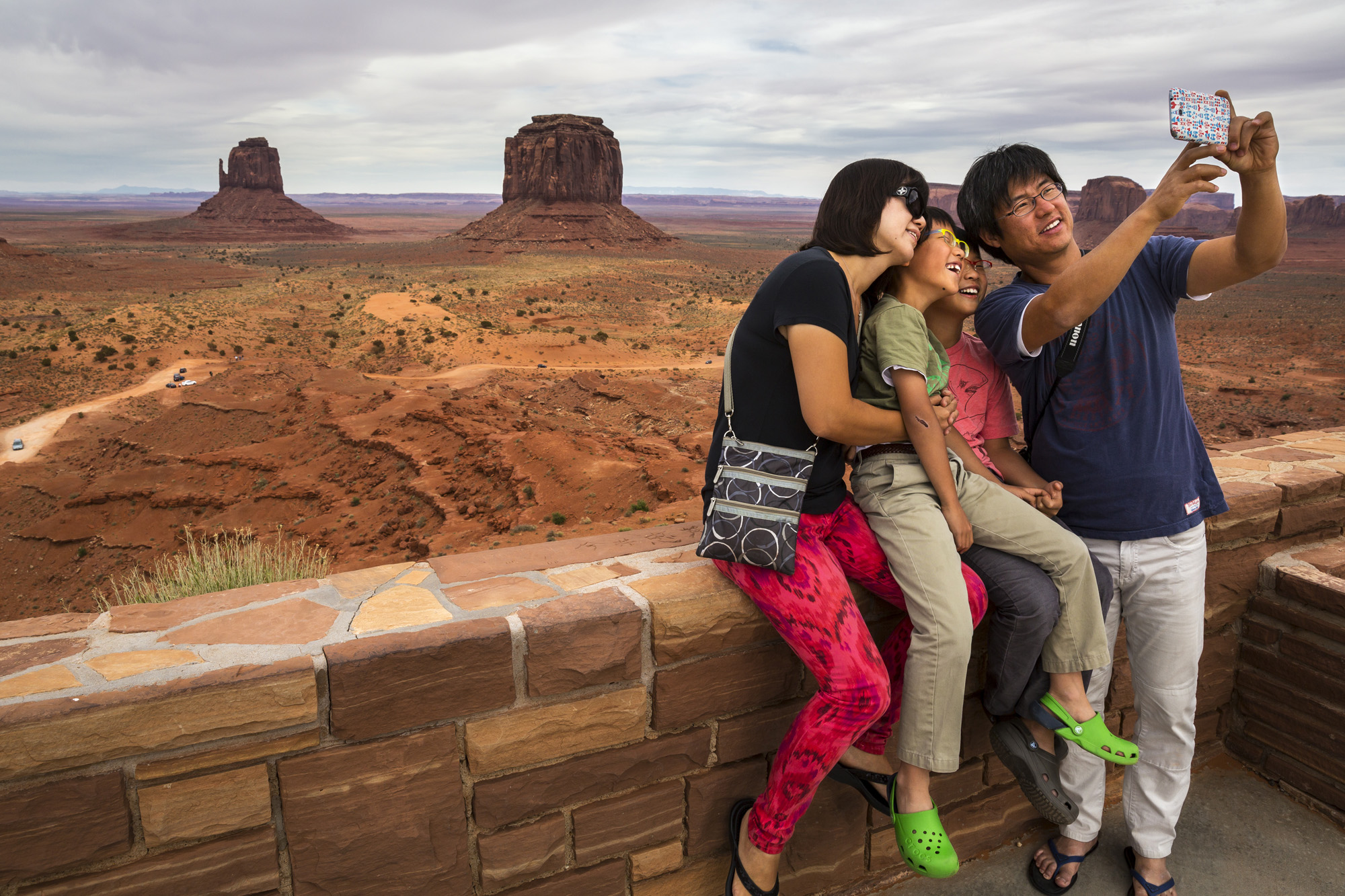

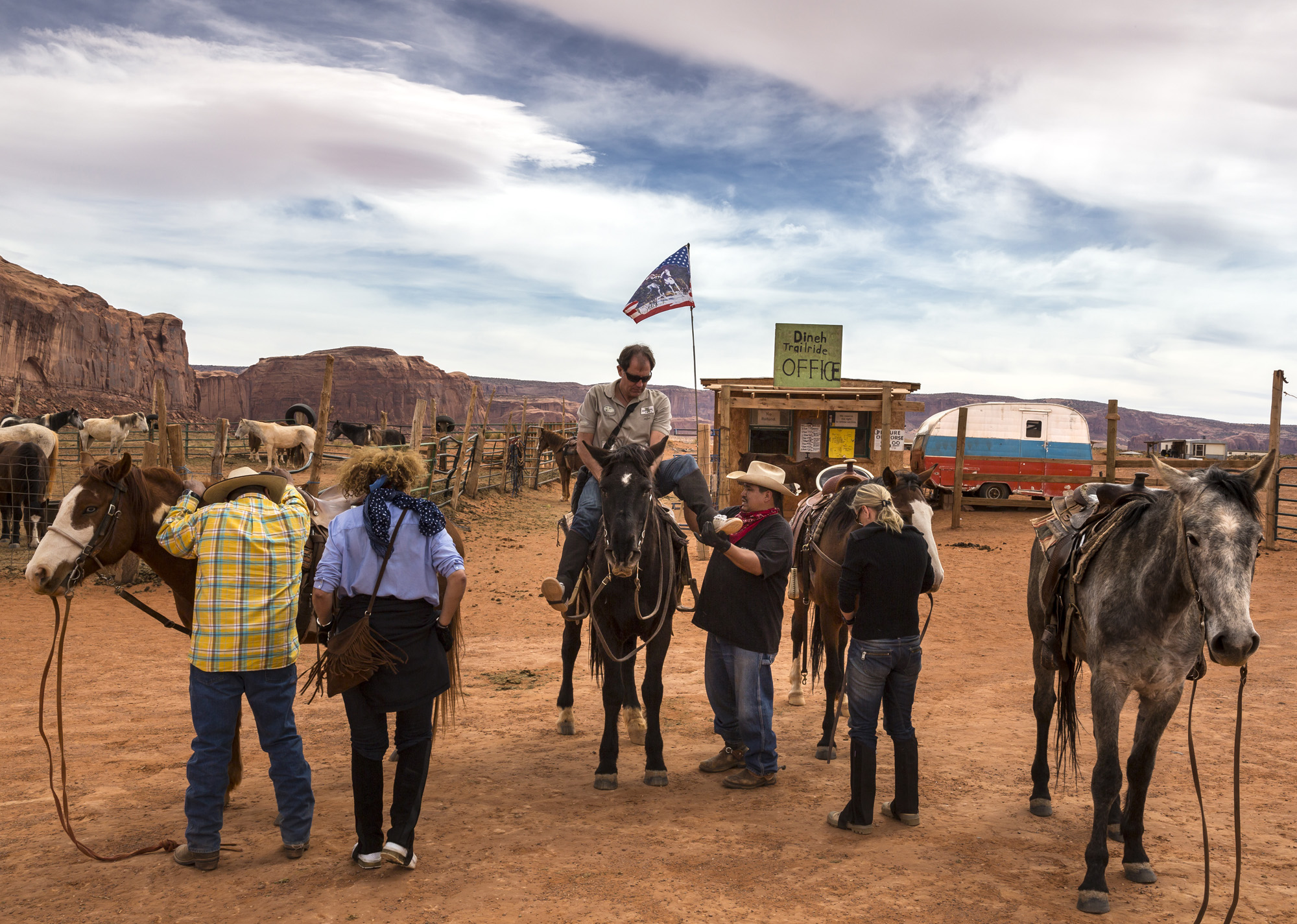
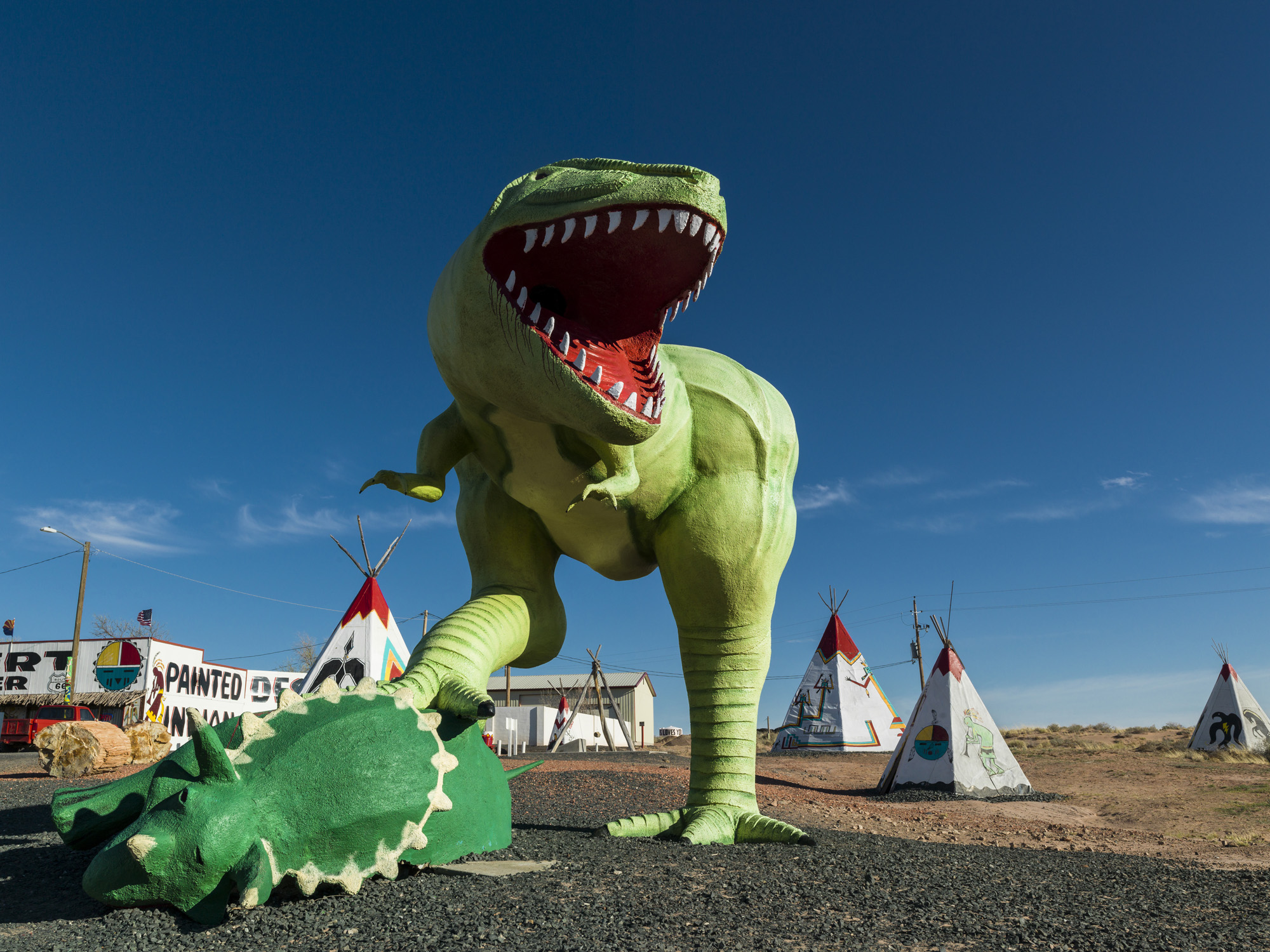

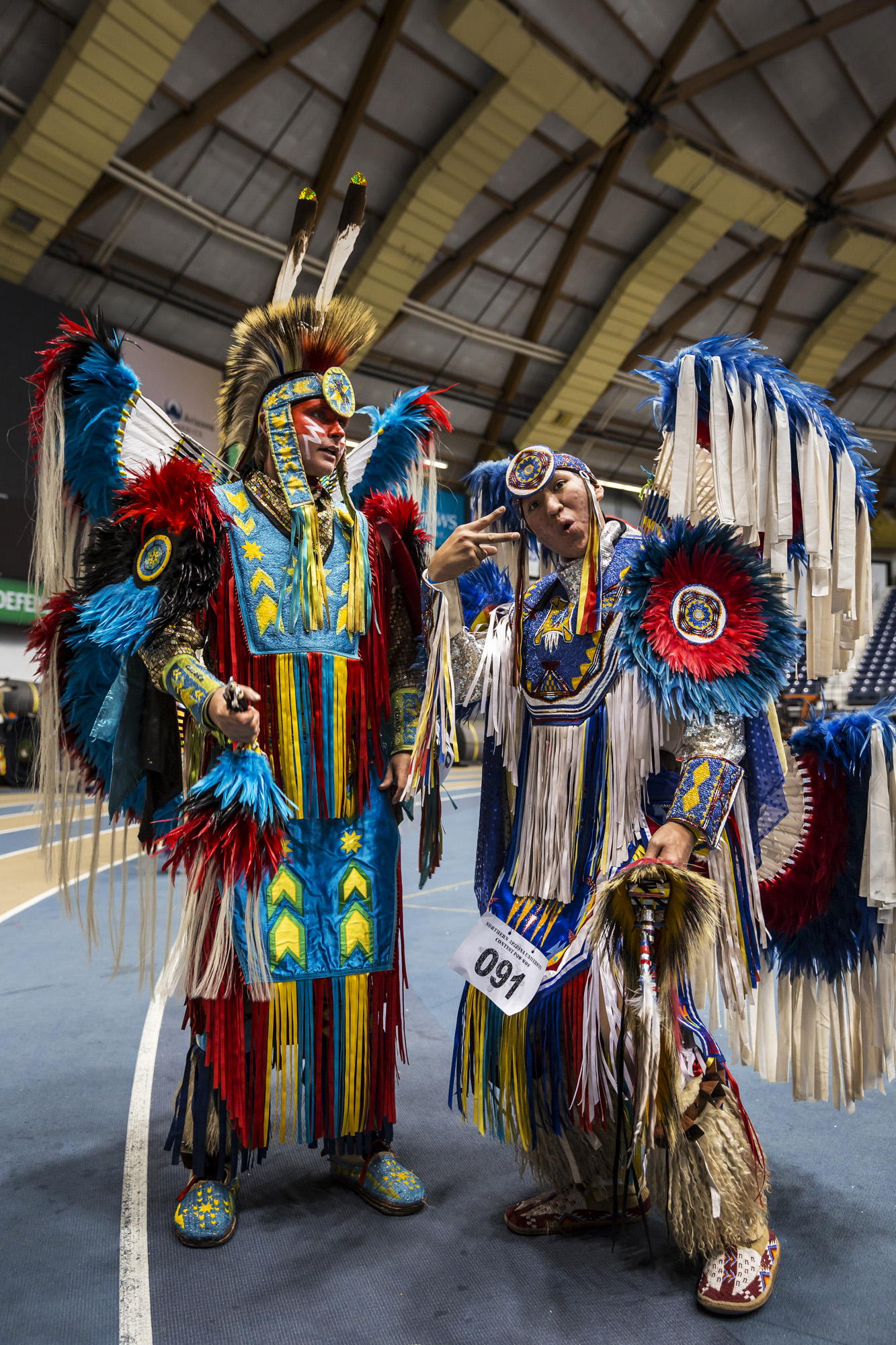
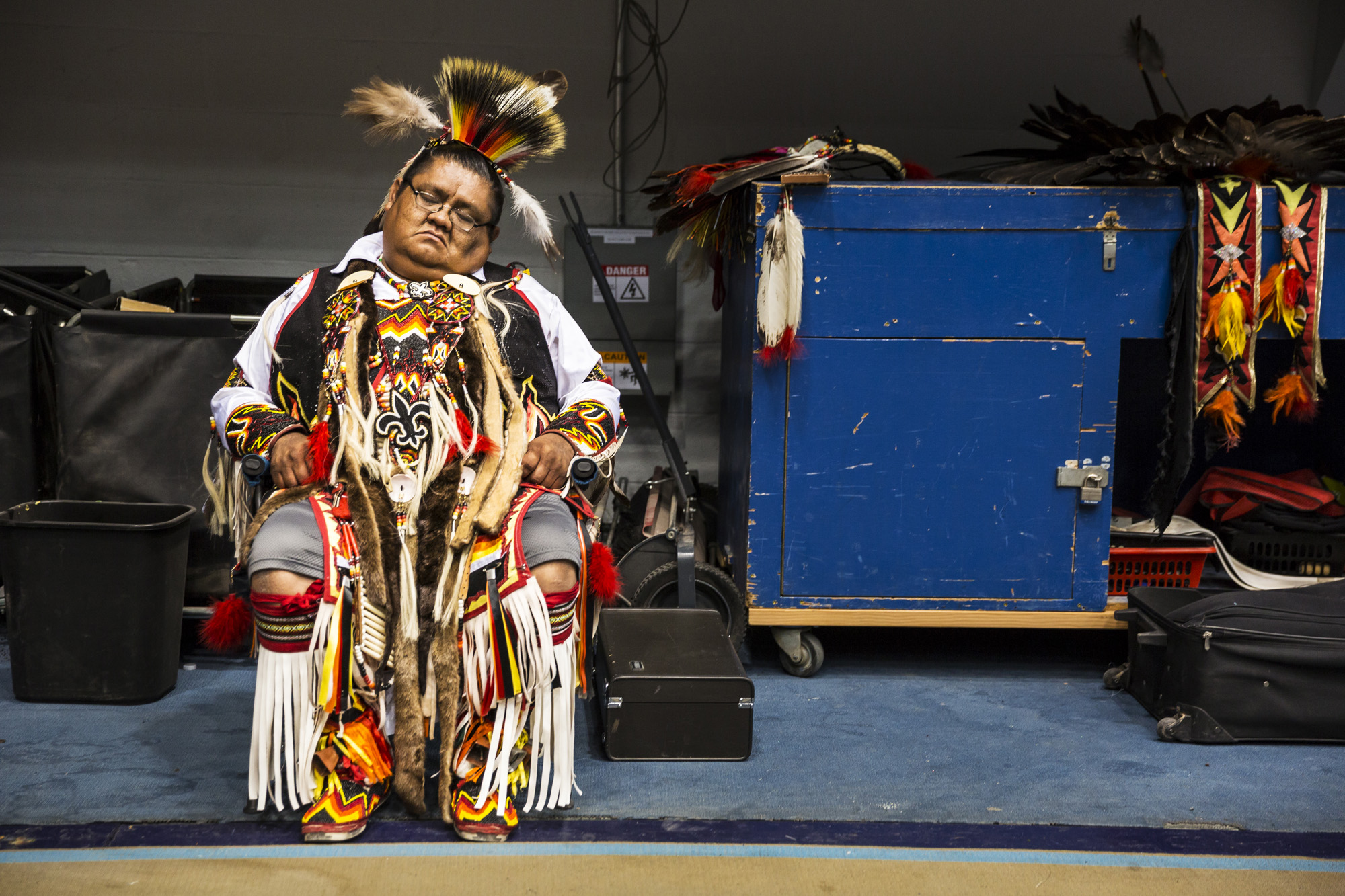
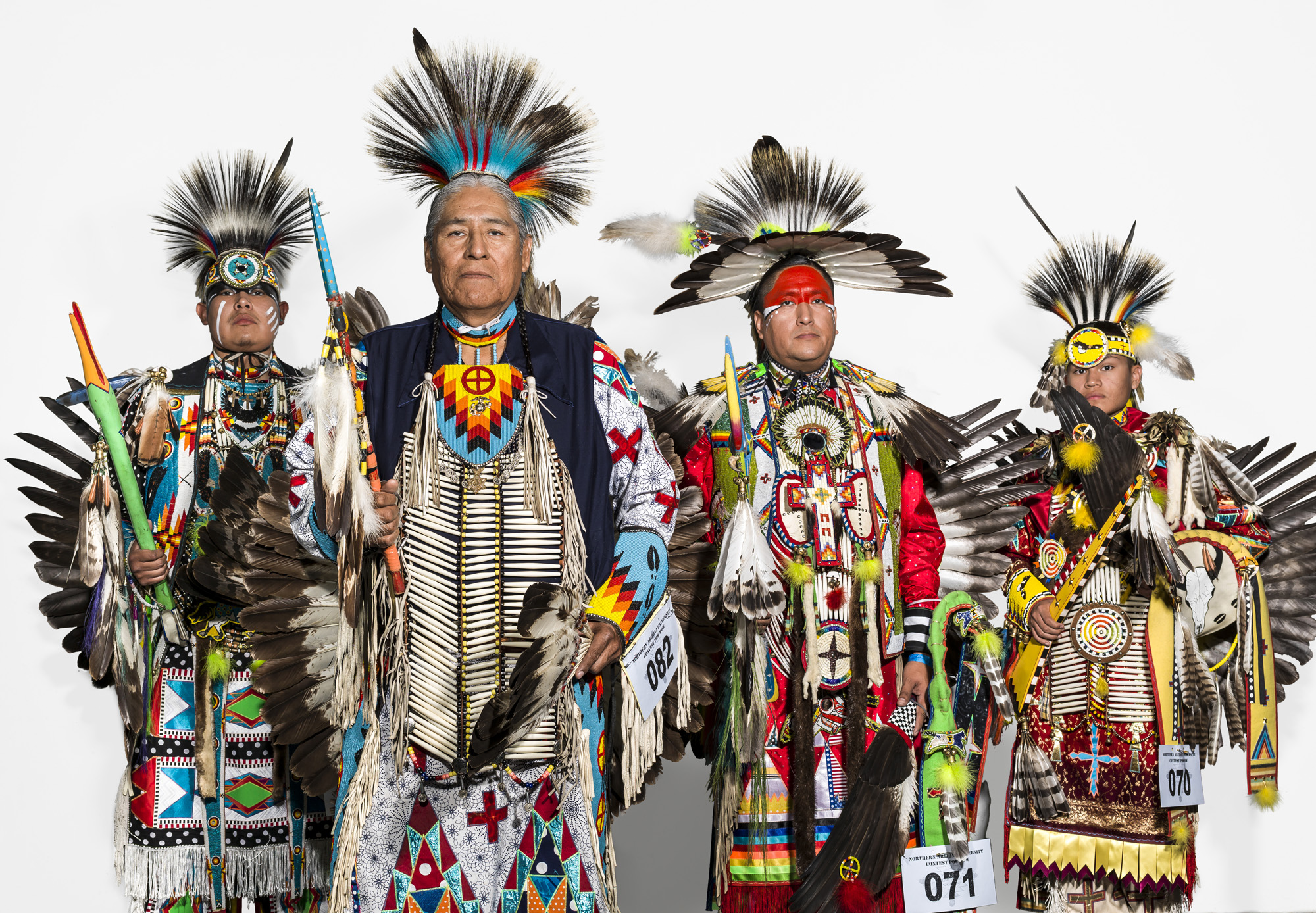

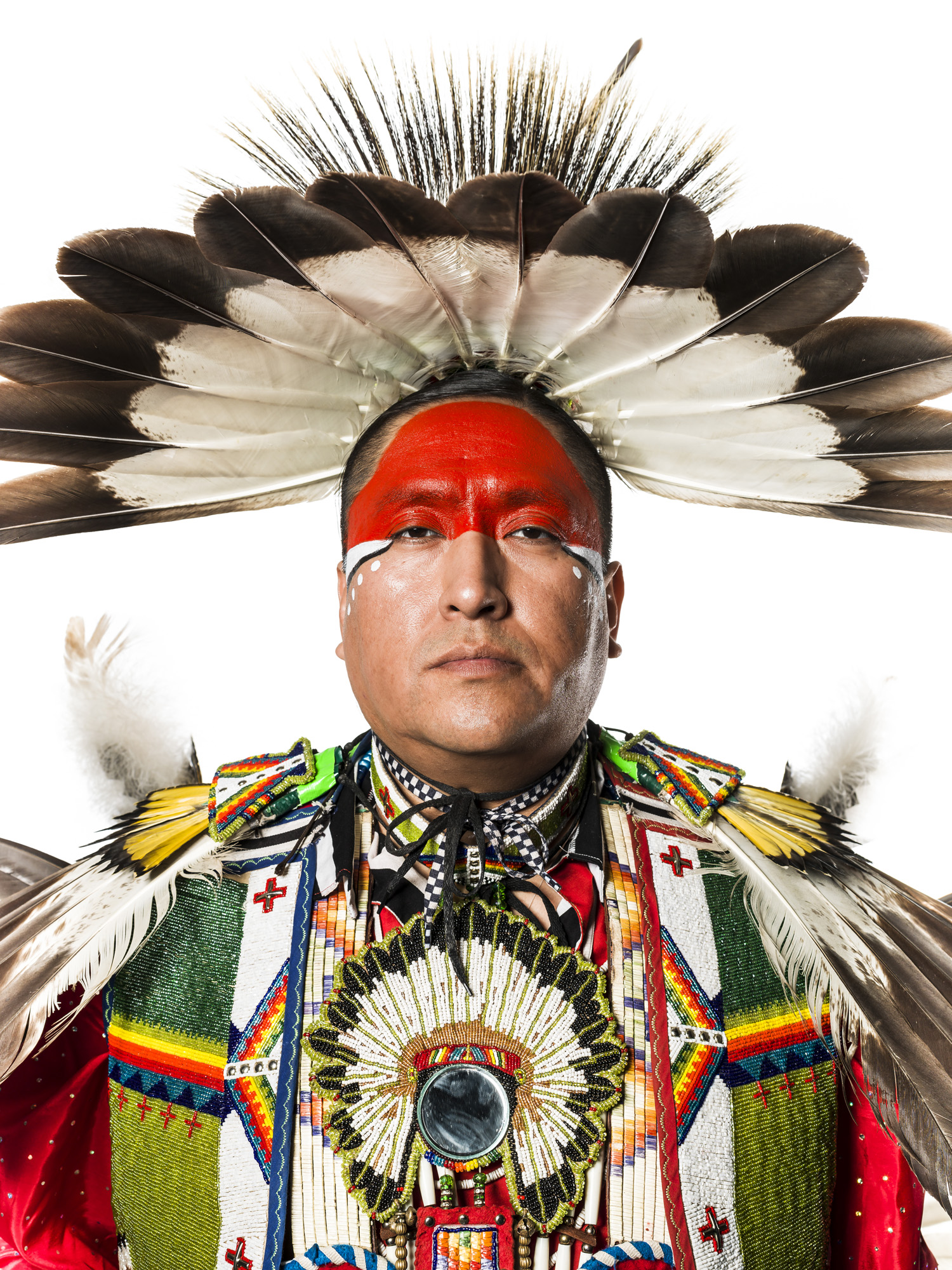
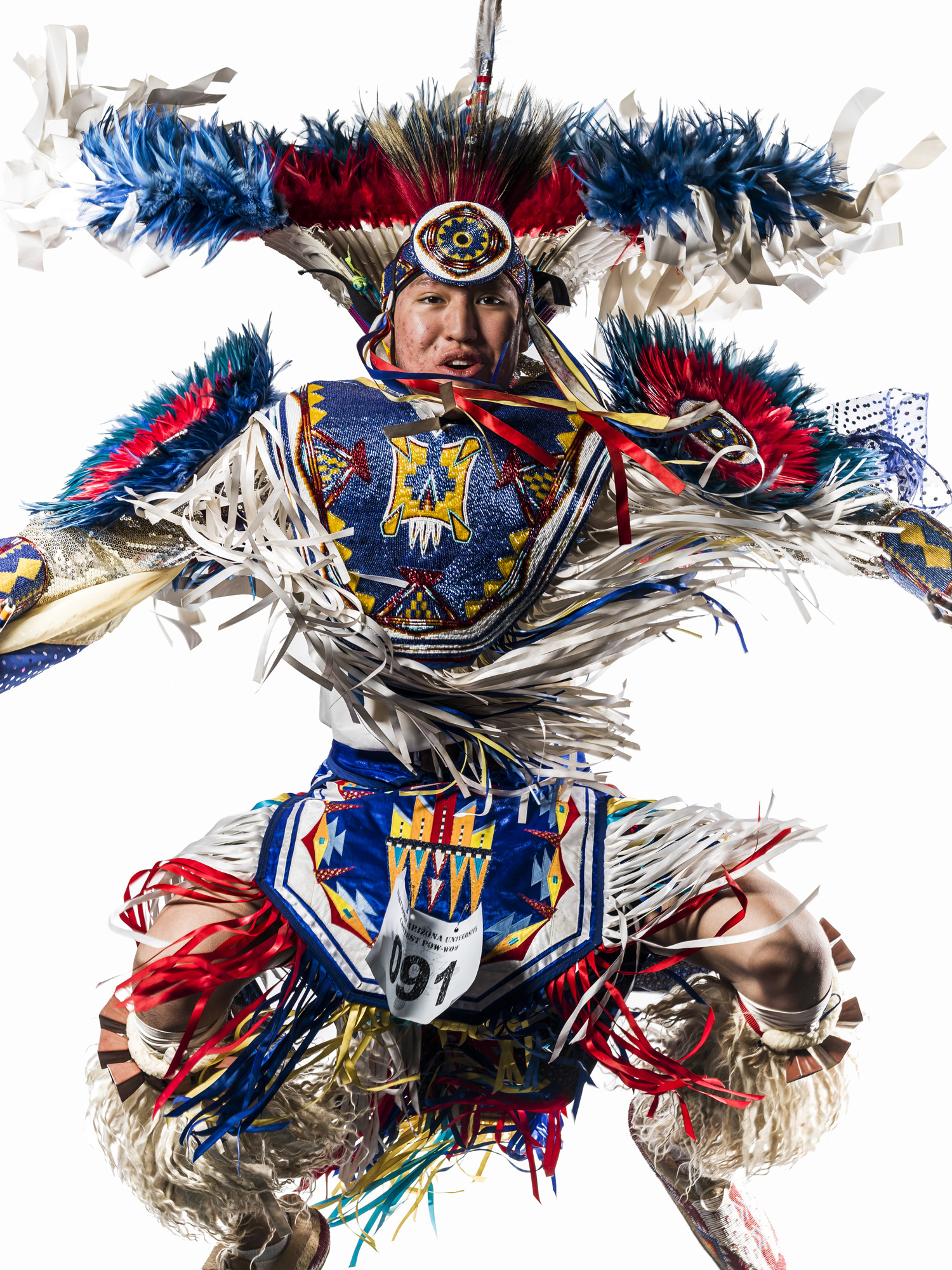
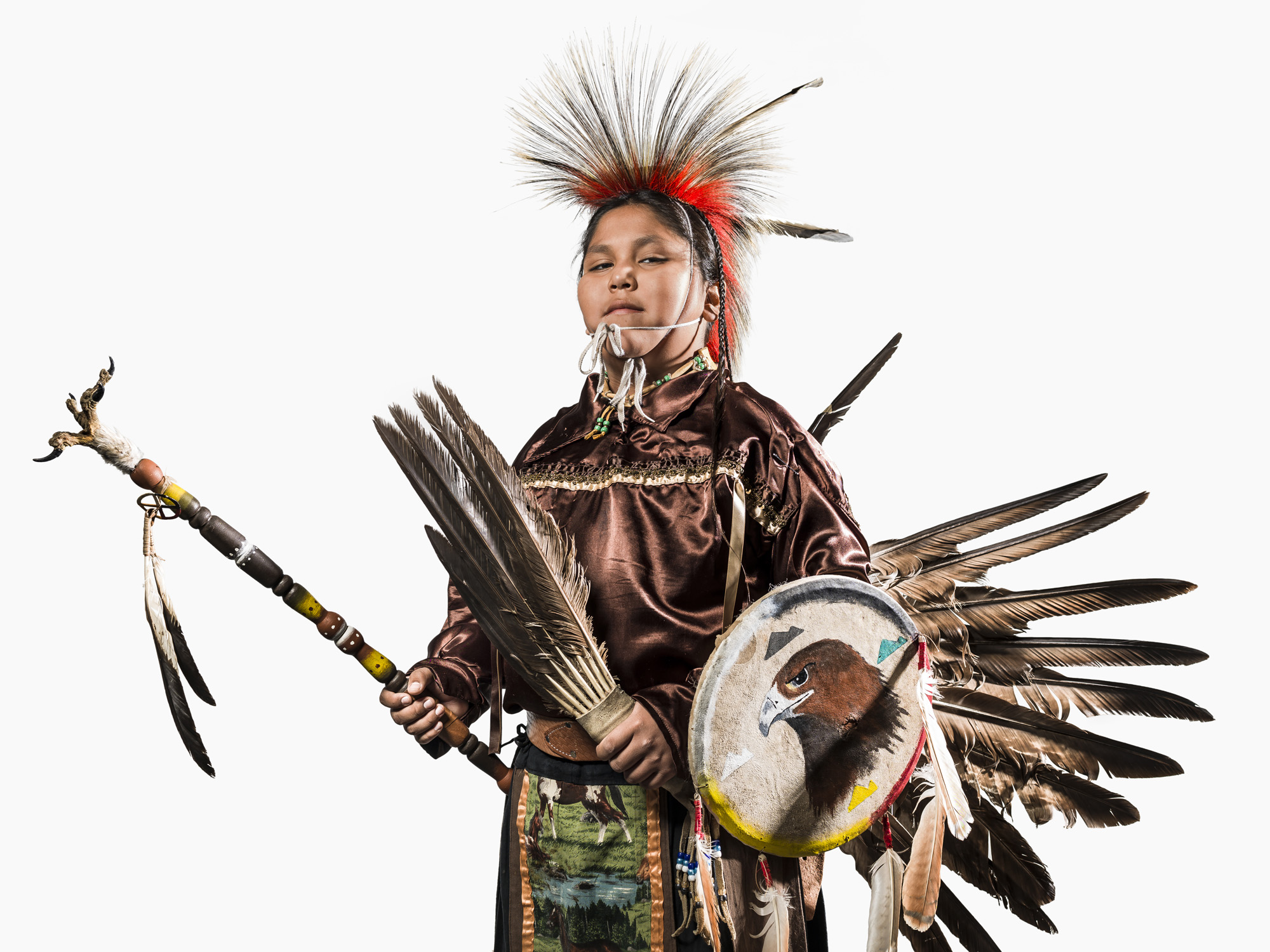

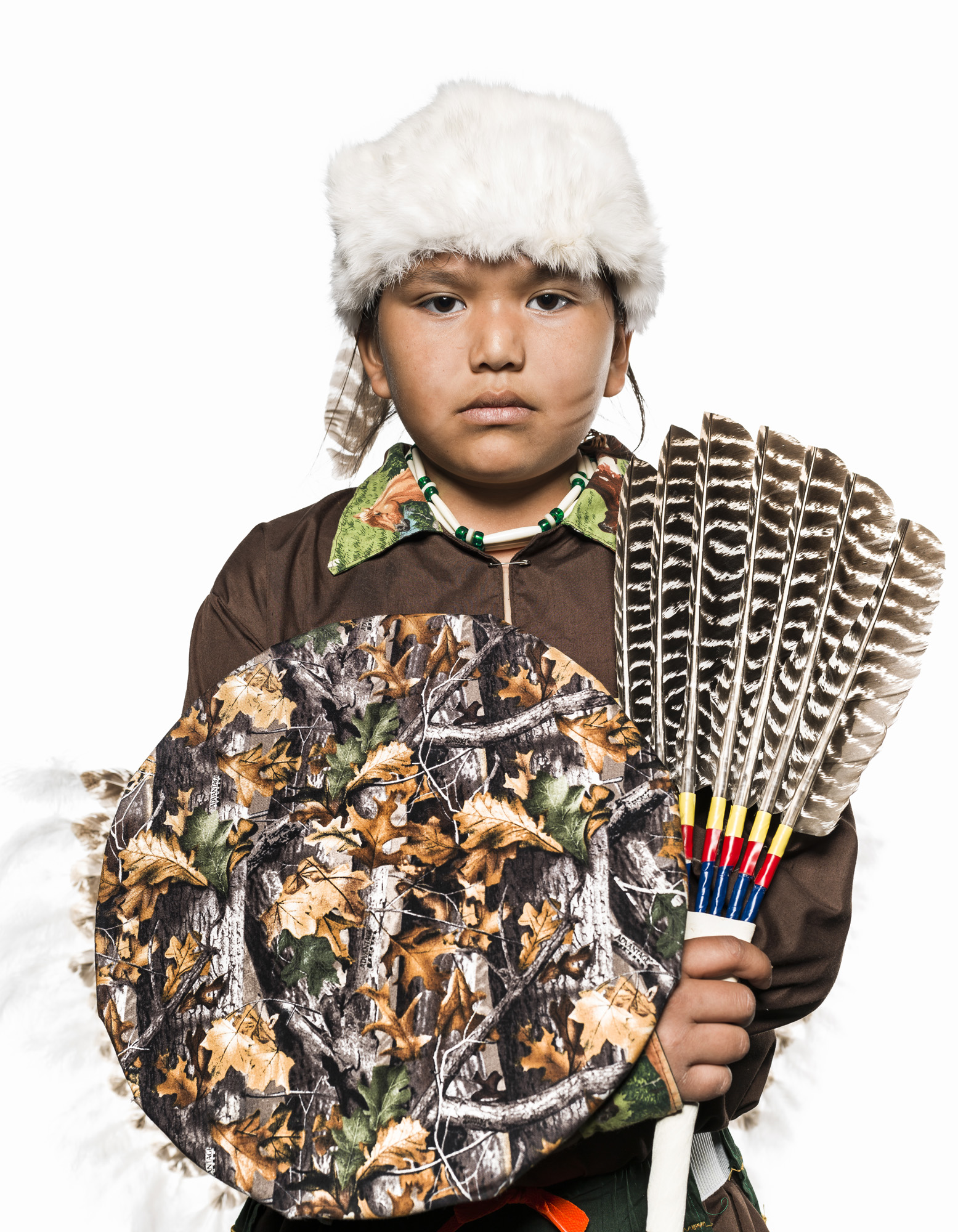
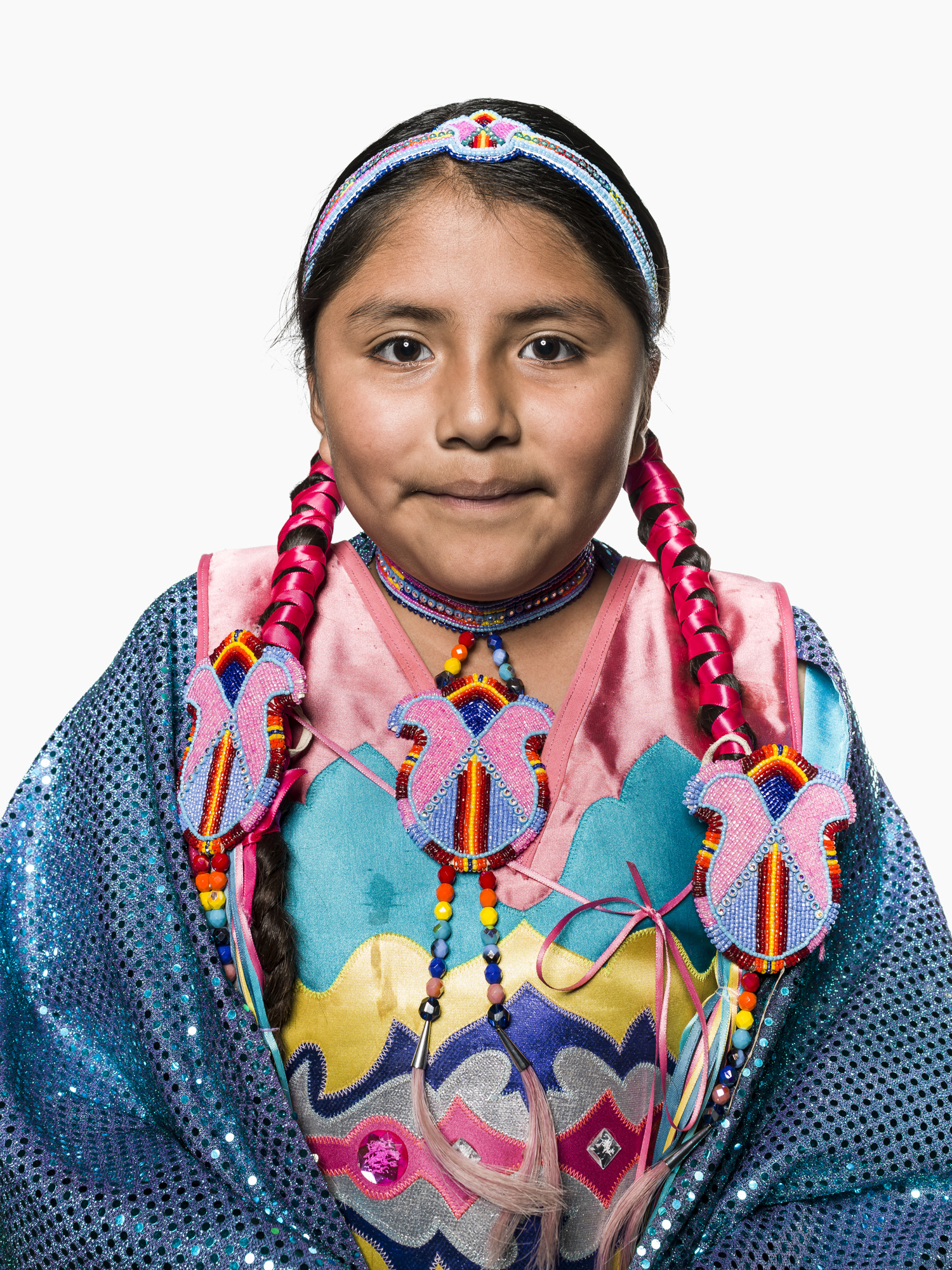
CAMERON, ARIZONA, 16 APRIL 2014: Jones Benally, a famous medicine man, dances the Navajo Hoop dance in a small canyon in the badlands of Cameron, Arizona. The hoop dance is traditionally performed at the end of a grueling nine day ceremony and is a form of storytelling dance representing various animals, symbols and storytelling elements, all representing the never ending circle of life for the Navajo. (Photo by Brent Stirton/Reportage for Le Figaro Magazine.)
CAMERON, ARIZONA, 16 APRIL 2014: Jones Benally, a famous medicine man, dances the Navajo Hoop dance in a small canyon in the badlands of Cameron, Arizona. The hoop dance is traditionally performed at the end of a grueling nine day ceremony and is a form of storytelling dance representing various animals, symbols and storytelling elements, all representing the never ending circle of life for the Navajo. (Photo by Brent Stirton/Reportage for Le Figaro Magazine.)
FLAGSTAFF, ARIZONA, 7 APRIL 2014: Jones Benalli, a traditional medicine man of the Navajo tribe, seen with ceremonial bowls teaching his grand-daughters the secrets of traditional Navajo medicine, Flagstaff, Arizona, 7 April 2014. The bowls represent the heart of the Navajo spiritual world. Jones is seen with a sacred mountain behind him, a mountain that has been the center of a court case as a local ski lodge has been using recycled sewerage water to manufacture the snow which is spread over this sacred Navajo site. (Photo by Brent Stirton/Reportage for Figaro Magazine.)
FLAGSTAFF, ARIZONA, 14 APRIL 2014: Jones Benally, a renowned Medicine Man of the Navajo Indian Tribe, performs an ancient traditonal body adjustment treatment on a patient at his home in Flagstaff, Arizona. This treatment outdates Chiropractics by many centuries yet there is a battle within the Navajo nation between traditionalists who want to keep these ancient practices alive and christian Navajos who believe these traditional practices to be unchristian. (Photo by Brent Stirton/Reportage for Figaro Magazine.)
FLAGSTAFF, ARIZONA, 14 APRIL 2014: Jones Benally, a renowned Medicine Man of the Navajo Indian Tribe, performs an ancient traditonal body adjustment treatment on a patient at his home in Flagstaff, Arizona. This treatment outdates Chiropractics by many centuries yet there is a battle within the Navajo nation between traditionalists who want to keep these ancient practices alive and christian Navajos who believe these traditional practices to be unchristian. (Photo by Brent Stirton/Reportage for Figaro Magazine.)
WINDOWROCK, ARIZONA, 4 APRIL 2014: Scenes from a rodeo event in the Navajo capital WindowRock, Arizona. There were not many Navajo competing but Rodeo is considered a tradtional sport by the Navajo Nation. (Photo by Brent Stirton/Reportage by Getty Images.)
WINDOWROCK, ARIZONA, 4 APRIL 2014: Scenes from a rodeo event in the Navajo capital WindowRock, Arizona. There were not many Navajo competing but Rodeo is considered a tradtional sport by the Navajo Nation. (Photo by Brent Stirton/Reportage by Getty Images.)
TSAILE, ARIZONA, 4 APRIL 2014: The Dine College Rodeo team at practise, Tsaile Arizona. Dine College is the first tribally controlled college in the United States. Their educational philosophy is grounded in the traditional Navajo outlook on life and in cultural traditions. (Photo by Brent Stirton/Reportage for Le Figaro Magazine.)
TSAILE, ARIZONA, 4 APRIL 2014: The Dine College Rodeo team at practise, Tsaile Arizona. Dine College is the first tribally controlled college in the United States. Their educational philosophy is grounded in the traditional Navajo outlook on life and in cultural traditions. (Photo by Brent Stirton/Reportage for Le Figaro Magazine.)
WINDOWROCK, ARIZONA, 4 APRIL 2014: A young fan at the start of a rodeo event in the Navajo capital WindowRock, Arizona. (Photo by Brent Stirton/Reportage by Getty Images.)
WINDOWROCK, ARIZONA, 4 APRIL 2014: A young fan at the start of a rodeo event in the Navajo capital WindowRock, Arizona. (Photo by Brent Stirton/Reportage by Getty Images.)
PINON, NAVAJO NATION, ARIZONA, 5 APRIL 2014: Scenes from a Navajo sweat lodge and pipe smoking ceremony, Pinon, Arizona. The sweat lodge is a purification ritual involving hot rocks and sage, as well as drumming and chanting. The Pipe smoking ceremony is a giving of thanks for the four seasons and their role in nature. (Photo by Brent Stirton/Rpeortage for Le Figaro.)
PINON, NAVAJO NATION, ARIZONA, 5 APRIL 2014: Scenes from a Navajo sweat lodge and pipe smoking ceremony, Pinon, Arizona. The sweat lodge is a purification ritual involving hot rocks and sage, as well as drumming and chanting. The Pipe smoking ceremony is a giving of thanks for the four seasons and their role in nature. This ceremony is not part of traditional Navajo cultural practises but was co-opted from the Navajo relationship with the Lakota tribe. (Photo by Brent Stirton/Rpeortage for Le Figaro.)
PINON, NAVAJO NATION, ARIZONA, 5 APRIL 2014: Scenes from a Navajo sweat lodge and pipe smoking ceremony, Pinon, Arizona. The sweat lodge is a purification ritual involving hot rocks and sage, as well as drumming and chanting. The Pipe smoking ceremony is a giving of thanks for the four seasons and their role in nature. This ceremony is not part of traditional Navajo cultural practises but was co-opted from the Navajo relationship with the Lakota tribe. (Photo by Brent Stirton/Rpeortage for Le Figaro.)
PINON, NAVAJO NATION, ARIZONA, 5 APRIL 2014: Scenes from a Navajo sweat lodge and pipe smoking ceremony, Pinon, Arizona. The sweat lodge is a purification ritual involving hot rocks and sage, as well as drumming and chanting. The Pipe smoking ceremony is a giving of thanks for the four seasons and their role in nature. This ceremony is not part of traditional Navajo cultural practises but was co-opted from the Navajo relationship with the Lakota tribe. (Photo by Brent Stirton/Rpeortage for Le Figaro.)
PINON, NAVAJO NATION, ARIZONA, 5 APRIL 2014: Scenes from a Navajo sweat lodge and pipe smoking ceremony, Pinon, Arizona. The sweat lodge is a purification ritual involving hot rocks and sage, as well as drumming and chanting. The Pipe smoking ceremony is a giving of thanks for the four seasons and their role in nature. (Photo by Brent Stirton/Rpeortage for Le Figaro.)
PINON, NAVAJO NATION, ARIZONA, 5 APRIL 2014: Children play on a horse training farm close to the economically depressed area of Pinon, Arizona. (Photo by Brent Stirton/Reportage for Le Figaro.)
PINON, NAVAJO NATION, ARIZONA, 5 APRIL 2014: Children play on a horse training farm close to the economically depressed area of Pinon, Arizona. (Photo by Brent Stirton/Rpeortage for Le Figaro.)
PINON, NAVAJO NATION, ARIZONA, 5 APRIL 2014: Children play on a horse training farm close to the economically depressed area of Pinon, Arizona. (Photo by Brent Stirton/Rpeortage for Le Figaro.)
FLAGSTAFF, ARIZONA, 7 APRIL 2014: "M.T," is a pierced 19 year old modern Navajo teenager who has come from a home with a long history of alcoholism and abuse. She was put out onto the street at an early age and has struggled to continue her schooling. She has recently been taken in by concerned relatives and although "M.T" is still recovering, her greatest comfort is her relationship with this horse, Flagstaff, Arizona, 7 April 2014. (Photo by Brent Stirton/Reportage for Le Figaro Magazine.)
KAYENTA, ARIZONA, 4 APRIL 2014: Wild horse activist and protector Leland Grass seen with his dogs and one of the wild mustang's he is trying to protect from round up by the Navajo Tribal government, Kayenta, Arizona. The wild horse has been threatened by relocation of the Navajo due to mining and economic issues as well as the severe drought which has befallen Arizona over the last couple of years. It is increasingly difficult for the Navajo to maintain their centuries old connection to the horse. (Photo by Brent Stirton/Reportage for Le Figaro magazine.)
PINON, NAVAJO NATION, ARIZONA, 9 APRIL 2014: Roberto Nutlouis, 34, a youth leader and agriculturist seen at his training farm close to the economically depressed area of Pinon, Arizona. Roberto is working on sustainable agriculutre for the Navajo people and includes youth groups in his projects. (Photo by Brent Stirton/Rpeortage for Le Figaro.)
PINON, NAVAJO NATION, ARIZONA, 9 APRIL 2014: Husky, a blind former Uranium miner who lives alone on a farm close to the economically depressed area of Pinon, Arizona. Husky worked for over 12 years in various Uranium mines, most of that time he was not provided with protective gear. His wife lived with him on the mine and she passed away from cancer, the same kind of cancer that has been common to Navajo people working on these Uranium mines. Husky has lost his sight to the effects of the mine and he has various other ailments too. He has received no compensation for his loss as his work period was outside of the period agreed by the mines for compensation and disability payments. (Photo by Brent Stirton/Reportage for Le Figaro.)
WINDOWROCK, ARIZONA, 4 APRIL 2014: Navajo US Military veterans come together for an honor guard in the Navajo capital WindowRock, Arizona. The Navajo have a long and distinguished history of serving with valor in the US armed forces. (Photo by Brent Stirton/Reportage by Getty Images.)
CANYON DE CHELLY, ARIZONA, 3RD APRIL, 2014: One of the last of the famed Navajo Code Talkers, Teddy Draper Snr, "The Atomic Marine." The code talkers used the Navajo language to fool the Japanese who were monitoring U.S radio traffic and are credited with being such an asset to the U.S military that the code talkers has minders with secret orders to shoot them if they looked like being captured alive. Teddy Draper Snr is credited with being the code talkers who relayed the progress and successful attack of the Enola Gay on Hiroshima. (Photo by Brent Stirton/Reportage for Le Figaro.)
WINDOWROCK, ARIZONA, 4 APRIL 2014: Flags flutter in the last light at a Navajo US Military veterans cemetry in the Navajo capital WindowRock, Arizona. The Navajo have a long and distinguished history of serving with valor in the US armed forces. (Photo by Brent Stirton/Reportage by Getty Images.)
WINDOW ROCK, ARIZONA, 11 APRIL 2014: Senior police officer in the Navajo police Dana Dean Tome arrests a suspect on the streets of WindowRock, Arizona. This man was later found to be innocent. No alcohol is allowed on the reservation and it is one of the many obstacles faced by the understaffed, underfinanced Navajo Police. (Photo by Brent Stirton/Reportage for Le Figaro.)
WINDOW ROCK, ARIZONA, 11 APRIL 2014: Senior police officer in the Navajo police Dana Dean Tome arrests a drunk of the streets of WindowRock, Arizona. No alcohol is allowed on the reservation and it is one of the many obstacles faced by the understaffed, underfinanced Navajo Police. (Photo by Brent Stirton/Reportage for Le Figaro.)
WINDOW ROCK, ARIZONA, 18 APRIL 2014: Police officer in the Navajo police Kevin Hevel, 27, arrests a drunk passed out in the open close to farming land outside of WindowRock, Arizona. No alcohol is allowed on the reservation and it is one of the many obstacles faced by the understaffed, underfinanced Navajo Police. The police have to take seriously drunk people to hospital to detox and this has created a bed shortage in Navajo clinics for people who are genuinely sick. (Photo by Brent Stirton/Reportage for Le Figaro.)
TUBA CITY, ARIZONA, 16 APRIL 2014: Virgil Frank Martinez Jr, 22, seen on the outskirts of Tuba City in a poor part of the town. Tattoos are common on Navajo youth and do not necessarily suggest gang affiliations. (Photo by Brent Stirton/Reportage for Le Figaro Magazine.)
WINDOW ROCK, ARIZONA, 11 APRIL 2014: Navajo EMT emergency workers attend to a man who was assaulted by his brother in WindowRock, Arizona. both were intoxicated at the time, alcohol is illegal on the Navajo reservation but is the chief cause of violence. (Photo by Brent Stirton/Reportage for Le Figaro.)
WINDOW ROCK, ARIZONA, 11 APRIL 2014: Navajo EMT emergency workers attend to a man who was assaulted by his brother in WindowRock, Arizona. both were intoxicated at the time, alcohol is illegal on the Navajo reservation but is the chief cause of violence. (Photo by Brent Stirton/Reportage for Le Figaro.)
SHIPROCK, ARIZONA, 17 APRIL 2014: The Red Eagle Challenge at the Northern Navajo Medical Center for Health Promotion and Disease prevention, Shiprock, Arizona. This is a team-building, leadership excercise for Navajo Youth. Many of the students in this class are struggling with alcohol and drug addiction and this course is one of the few available to Navajo Youth who struggle with these issues. (Photo by Brent Stirton/Reportage for Le Figaro Magazine.)
LEUPP, ARIZONA, 14 APRIL 2014: Kids from the progressive Star charter school in Leupp Arizona attend an assembly on Monday at which all the children and staff shake hands with each other without exception. The Star school runs completely off the grid and has a Montessori style teaching schedule with a strong emphasis on Navajo Cultural values. The school has a very high success rate with its students with a 71% graduation rate compared to only 1% for Native pupils at Arizona state schools. Despite this, there is a movement to close Native schools in Arizona due to an unfair ratings system which does not take into account reservation issues and Navajo based teaching techniques. (Photo by Brent Stirton/Reportage for Le Figaro.)
LEUPP, ARIZONA, 14 APRIL 2014: A teacher comforts an upset child as kids from the progressive Star charter school in Leupp Arizona attend an assembly on Monday at which all the children and staff shake hands with each other without exception. The Star school runs completely off the grid and has a Montessori style teaching schedule with a strong emphasis on Navajo Cultural values. The school has a very high success rate with its students with a 71% graduation rate compared to only 1% for Native pupils at Arizona state schools. Despite this, there is a movement to close Native schools in Arizona due to an unfair ratings system which does not take into account reservation issues and Navajo based teaching techniques. (Photo by Brent Stirton/Reportage for Le Figaro.)
LEUP, ARIZONA, 10 APRIL 2014: Kids from the progressive Star charter school in Leup Arizona attend communal agriculture classes at the Leup Communal farm. The Star school runs completely off the grid and has a Montessori style teaching schedule with a strong emphasis on Navajo Cultural values. The school has a very high success rate with its students with a 71% graduation rate compared to only 1% for Native pupils at Arizona state schools. Despite this, there is a movement to close Native schools in Arizona due to an unfair ratings system which does not take into account reservation issues and Navajo based teaching techniques. (Photo by Brent Stirton/Reportage for Le Figaro.)
LEUP, ARIZONA, 10 APRIL 2014: Kids from the progressive Star charter school in Leup Arizona attend communal agriculture classes at the Leup Communal farm. The Star school runs completely off the grid and has a Montessori style teaching schedule with a strong emphasis on Navajo Cultural values. The school has a very high success rate with its students with a 71% graduation rate compared to only 1% for Native pupils at Arizona state schools. Despite this, there is a movement to close Native schools in Arizona due to an unfair ratings system which does not take into account reservation issues and Navajo based teaching techniques. (Photo by Brent Stirton/Reportage for Le Figaro.)
WINDOW ROCK, ARIZONA, 11 APRIL 2014: Valuable vintage American muscle cars lie rusting in a yard in the economically deprived Navajo Capital of WindowRock, Arizona. (Photo by Brent Stirton/Reportage for Le Figaro.)
PINON, NAVAJO NATION, ARIZONA, 5 APRIL 2014: A suburban scene from the economically depressed Navajo town of Pinon, Arizona. (Photo by Brent Stirton/Reportage for Le Figaro.)
PINON, NAVAJO NATION, ARIZONA, 5 APRIL 2014: Scenes of vandalism in the economically depressed Navajo town, Pinon, Arizona. (Photo by Brent Stirton/Rpeortage for Le Figaro.)
PINON, NAVAJO NATION, ARIZONA, 9 APRIL 2014: Fresh Sheep skins signal Wedding preparations on a farm close to the economically depressed area of Pinon, Arizona. (Photo by Brent Stirton/Rpeortage for Le Figaro.)
PINON, NAVAJO NATION, ARIZONA, 12 APRIL 2014: A traditional Navajo wedding which also included a civil service performed by a judge, Pinon, Arizona. The traditonal ceremony cannot be photographed but consists of corn and water coming together symbolizing success and fertility in the marriage. (Photo by Brent Stirton/Reportage for Le Figaro.)
PINON, NAVAJO NATION, ARIZONA, 12 APRIL 2014: A traditional Navajo wedding which also included a civil service performed by a judge, Pinon, Arizona. The traditonal ceremony cannot be photographed but consists of corn and water coming together symbolizing success and fertility in the marriage. (Photo by Brent Stirton/Reportage for Le Figaro.)
PINON, NAVAJO NATION, ARIZONA, 12 APRIL 2014: A traditional Navajo wedding which also included a civil service performed by a judge, Pinon, Arizona. The traditonal ceremony cannot be photographed but consists of corn and water coming together symbolizing success and fertility in the marriage. (Photo by Brent Stirton/Reportage for Le Figaro.)
WINDOW ROCK, ARIZONA, 6 APRIL 2014: Marcus and Shane Ramon practise their fighting skills at their home in the Navajo Capital of WindowRock, Arizona. Both men work as Casino security at the Casino in nearby Gallup. The Navajo were late adopters of the Casino system on Native American land but a number of Casinos are now operated by the Navajo Nation. (Photo by Brent Stirton/Reportage for Le Figaro.)
WINDOW ROCK, ARIZONA, 6 APRIL 2014: Marcus and Shane Ramon practise their fighting skills at their home in the Navajo Capital of WindowRock, Arizona. Both men work as Casino security at the Casino in nearby Gallup. The Navajo were late adopters of the Casino system on Native American land but a number of Casinos are now operated by the Navajo Nation. (Photo by Brent Stirton/Reportage for Le Figaro.)
LEUPP, ARIZONA, 8 APRIL 2014: Wild horses stand on the plains in front of the San Fransciso Peaks, a Navajo Sacred site which has been controversial due to a ski lodge which has been making snow using refined sewerage water, a fact which has outraged traditional Navajos and led to a long running court case, Leupp Arizona. Wild horses are also under threat, with controversial round-ups and a long standing drought making it difficult for these creatures to survive. (Photo by Brent Stirton/Reportage for Le Figaro Magazine.)
LEUPP, ARIZONA, 8 APRIL 2014: A view across the plains in front of the San Fransciso Peaks, a Navajo Sacred site which has been controversial due to a ski lodge which has been making snow using refined sewerage water, a fact which has outraged traditional Navajos and led to a long running court case, Leupp Arizona. (Photo by Brent Stirton/Reportage for Le Figaro Magazine.)
LEUPP, ARIZONA, 8 APRIL 2014: A wild horse runs away across the plain, Leupp Arizona. Wild horses are under threat, with controversial round-ups and a long standing drought making it difficult for these creatures to survive. (Photo by Brent Stirton/Reportage for Le Figaro Magazine.)
TUBA CITY, ARIZONA, 10 APRIL 2014: Wild horses pass by a water tank with the slogan "Water is Life" along its walls. This slogan appears on many water tanks across the Navajo reservation where last years severe drought saw controversial round ups of horses all over the Navajo Nation. This was seen by the Navajo Council as a humanitarian move but was regarded with anger by many who lost their horses, an intergral and age old part of Navajo culture. (Photo by Brent Stirton/Reportage for Le Figaro.)
CAMERON, ARIZONA, 12 APRIL 2014: A beautiful canyon site off the tourist trail close to Cameron, Arizona on the Navajo Reservation. Although there are many famous tourist site like Monument Valley and the Canyon De Chelly, there are still a number of breath taking sites all over the Reservation. (Photo by Brent Stirton/Reportage for Le Figaro.)
CAMERON, ARIZONA, 16 APRIL 2014: A dead wild horse lies mysteriously at the end of a small canyon in the badlands of Cameron, Arizona. (Photo by Brent Stirton/Reportage for Le Figaro Magazine.)
CAMERON, ARIZONA, 16 APRIL 2014: Navajo Punk rock band Sihasin is seen with their horse Moonshadow in a canyon in Cameron, Arizona. Sihasin comes from a long tradition of protest music and expouses traditional Navajo values to their audience. (Photo by Brent Stirton/Reportage for Le Figaro Magazine.)
CAMERON, ARIZONA, 16 APRIL 2014: Navajo Punk rock band Sihasin is seen with their horse Moonshadow in a canyon in Cameron, Arizona. Sihasin comes from a long tradition of protest music and expouses traditional Navajo values to their audience. (Photo by Brent Stirton/Reportage for Le Figaro Magazine.)
CAMERON, ARIZONA, 16 APRIL 2014: Claysun Benally with his horse in Cameron, Arizona. Claysun is a strong believer in traditional Navajo values and along with his father keeps several horses on their property in Flagstaff. The Navajo have a long relationship with the wild horse, a relationship characterized by gentleness and agreement rather than breaking the horses spirti to the will of man. (Photo by Brent Stirton/Reportage for Le Figaro Magazine.)
CAMERON, ARIZONA, 16 APRIL 2014: Claysun Benally with his horse in Cameron, Arizona. Claysun is a strong believer in traditional Navajo values and along with his father keeps several horses on their property in Flagstaff. The Navajo have a long relationship with the wild horse, a relationship characterized by gentleness and agreement rather than breaking the horses spirti to the will of man. (Photo by Brent Stirton/Reportage for Le Figaro Magazine.)
CAMERON, ARIZONA, 16 APRIL 2014: Claysun Benally with his horse in Cameron, Arizona. Claysun is a strong believer in traditional Navajo values and along with his father keeps several horses on their property in Flagstaff. The Navajo have a long relationship with the wild horse, a relationship characterized by gentleness and agreement rather than breaking the horses spirti to the will of man. (Photo by Brent Stirton/Reportage for Le Figaro Magazine.)
CANYON DE CHELLY, ARIZONA, 6 APRIL, 2014: Scenes around the Canyon De Chelly, a famous Navajo Nation landmark and tourist attraction. (Photo by Brent Stirton/Reportage for Le Figaro.)
MONUMENT VALLEY, UTAH, 15 APRIL 2014: Tourist scenes at the Navajo tourist site of Monument Valley, a place made famous by its awesome Buttes and Mesa's as well as the hundreds of Western Movies that have been filmed here. (Photo by Brent Stirton/Reportage for Le Figaro Magazine.)
MONUMENT VALLEY, UTAH, 15 APRIL 2014: Tourist scenes at the Navajo tourist site of Monument Valley, a place made famous by its awesome Buttes and Mesa's as well as the hundreds of Western Movies that have been filmed here. (Photo by Brent Stirton/Reportage for Le Figaro Magazine.)
MONUMENT VALLEY, UTAH, 15 APRIL 2014: Tourist scenes at the Navajo tourist site of Monument Valley, a place made famous by its awesome Buttes and Mesa's as well as the hundreds of Western Movies that have been filmed here. (Photo by Brent Stirton/Reportage for Le Figaro Magazine.)
HIGHWAY 180, ARIZONA, 10 APRIL 2014: Navajo Indian gift and curio stores along the highway into the Navajo Reservation area close to Window Rock, Arizona, 10 April 2014. (Photo by Brent Stirton/Reportage for Le Figaro.)
FLAGSTAFF, ARIZONA, 13 APRIL 2014: Images from a multi-tribe Pow Wow held in Flagstaff Arizona. These dancers come from all over America, the portraits are mostly of Navajo dancers. Their costumes are not traditional however and have come to portray an almost "Super-Indian" collective today. (Photo by Brent Stirton/Reportage for Figaro Magazine.)
FLAGSTAFF, ARIZONA, 13 APRIL 2014: Images from a multi-tribe Pow Wow held in Flagstaff Arizona. These dancers come from all over America, the portraits are mostly of Navajo dancers. Their costumes are not traditional however and have come to portray an almost "Super-Indian" collective today. (Photo by Brent Stirton/Reportage for Figaro Magazine.)
FLAGSTAFF, ARIZONA, 13 APRIL 2014: Images from a multi-tribe Pow Wow held in Flagstaff Arizona. These dancers come from all over America, the portraits are mostly of Navajo dancers. Their costumes are not traditional however and have come to portray an almost "Super-Indian" collective today. (Photo by Brent Stirton/Reportage for Figaro Magazine.)
FLAGSTAFF, ARIZONA, 13 APRIL 2014: Four generations of Navajo male dancers are seen at a multi-tribe Pow Wow held in Flagstaff Arizona. The dancers at this Pow Wow come from all over America. Their costumes are not traditional however and these bright, modern manifestations have come to portray an almost "Super-Indian" collective today. This is also seen in the appropriation of certains ceremonies for other Indian nations. This is worrisome for the traditionalists who want to maintain authenticity in the Navajo Culture. (Photo by Brent Stirton/Reportage for Figaro Magazine.)
FLAGSTAFF, ARIZONA, 13 APRIL 2014: Images from a multi-tribe Pow Wow held in Flagstaff Arizona. These dancers come from all over America, the portraits are of Navajo dancers. Their costumes are not traditional however and have come to portray an almost "Super-Indian" collective today. (Photo by Brent Stirton/Reportage for Figaro Magazine.)
FLAGSTAFF, ARIZONA, 13 APRIL 2014: Images from a multi-tribe Pow Wow held in Flagstaff Arizona. These dancers come from all over America, the portraits are of Navajo dancers. Their costumes are not traditional however and have come to portray an almost "Super-Indian" collective today. (Photo by Brent Stirton/Reportage for Figaro Magazine.)
FLAGSTAFF, ARIZONA, 13 APRIL 2014: Images from a multi-tribe Pow Wow held in Flagstaff Arizona. These dancers come from all over America, the portraits are of Navajo dancers. Their costumes are not traditional however and have come to portray an almost "Super-Indian" collective today. (Photo by Brent Stirton/Reportage for Figaro Magazine.)
FLAGSTAFF, ARIZONA, 13 APRIL 2014: Images from a multi-tribe Pow Wow held in Flagstaff Arizona. These dancers come from all over America, the portraits are of Navajo dancers. Their costumes are not traditional however and have come to portray an almost "Super-Indian" collective today. (Photo by Brent Stirton/Reportage for Figaro Magazine.)
FLAGSTAFF, ARIZONA, 13 APRIL 2014: Images from a multi-tribe Pow Wow held in Flagstaff Arizona. These dancers come from all over America, the portraits are of Navajo dancers. Their costumes are not traditional however and have come to portray an almost "Super-Indian" collective today. (Photo by Brent Stirton/Reportage for Figaro Magazine.)
FLAGSTAFF, ARIZONA, 13 APRIL 2014: Images from a multi-tribe Pow Wow held in Flagstaff Arizona. These dancers come from all over America, the portraits are of Navajo dancers. Their costumes are not traditional however and have come to portray an almost "Super-Indian" collective today. (Photo by Brent Stirton/Reportage for Figaro Magazine.)
FLAGSTAFF, ARIZONA, 13 APRIL 2014: Images from a multi-tribe Pow Wow held in Flagstaff Arizona. These dancers come from all over America, the portraits are of Navajo dancers. Their costumes are not traditional however and have come to portray an almost "Super-Indian" collective today. (Photo by Brent Stirton/Reportage for Figaro Magazine.)
